Local birding seems to be what’s in vogue these days. From patch birding to the increasingly popular 5-mile radius birding, birders are discovering the joy of finding new birds for a small geographical (and carbon) footprint. While I haven’t been sucked into either of those (yet), many of you know that I have been an avid lister for the 864 square miles of Kandiyohi County. As has been highlighted here, there have been many victories in this regard, and the list has grown substantially. Even still, some birds have proven to be annoyingly elusive. Annoying because these birds are regular species that pass through the county (and my hands) every year. One of these has actually eluded everyone and not just me. There has been no Kandiyohi County record of Nelson’s Sparrow despite the fact that these birds breed to our north and despite the fact that we have abundant stopover habitat for migration. Nelson’s Sparrows are recorded on the regular during September migration in all kinds of southern Minnesota counties and in Iowa counties as well. It didn’t make sense that we didn’t have one yet. But in visiting with other local birders, no one had really ever looked for them during the prime migration window.
In September of 2017 I started looking in appropriate habitat of wet cattail marshes that butted up to grasslands. There is no shortage of such habitat around here. The migration window is fairly short, about 2-3 weeks, and in that time I wasn’t able to find one in 2017. So this past fall in September, I began looking once again. One Friday after work, I decided to try the best Sparrow spot in the county–Kandi WMA. I saw lots of Sparrows as I expected, and when I got to one wet spot, which NESP are particularly fond of, I played the NESP song and a bird teed up. With the naked eye it looked right–I could see orange on the face, but I had to eliminate the more common LeConte’s Sparrow migrant. I hurriedly snapped some pics of the skulker. All the field marks were there: orange face, sharp bill, median gray crown stripe, and that beautiful clean gray nape.
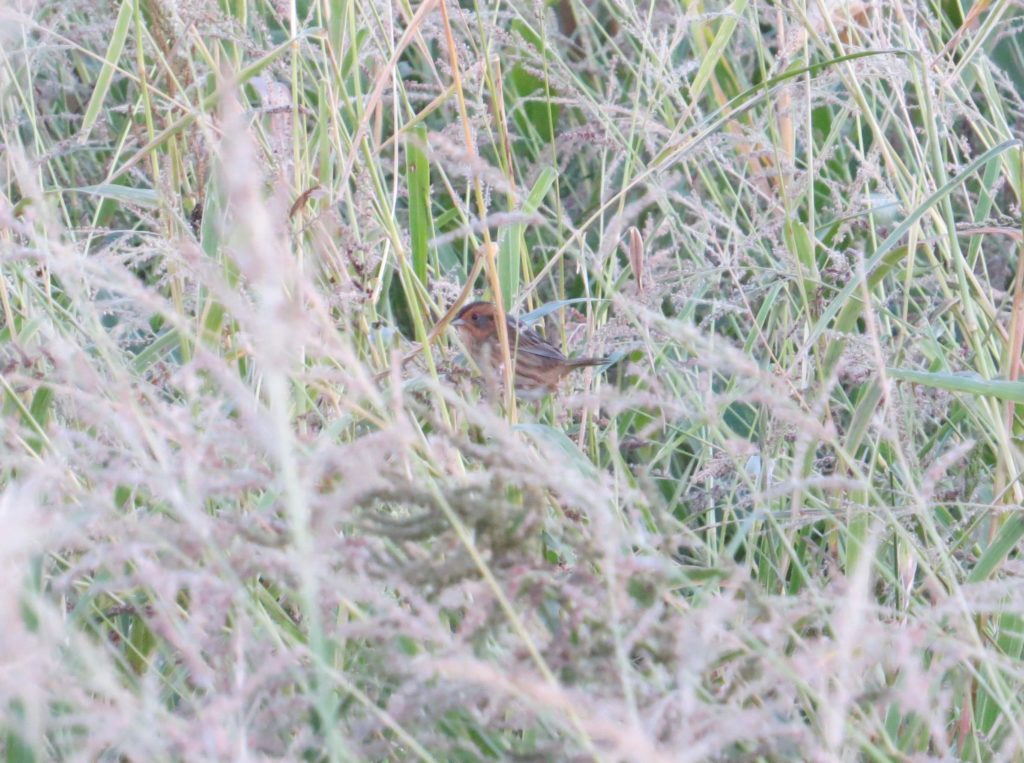
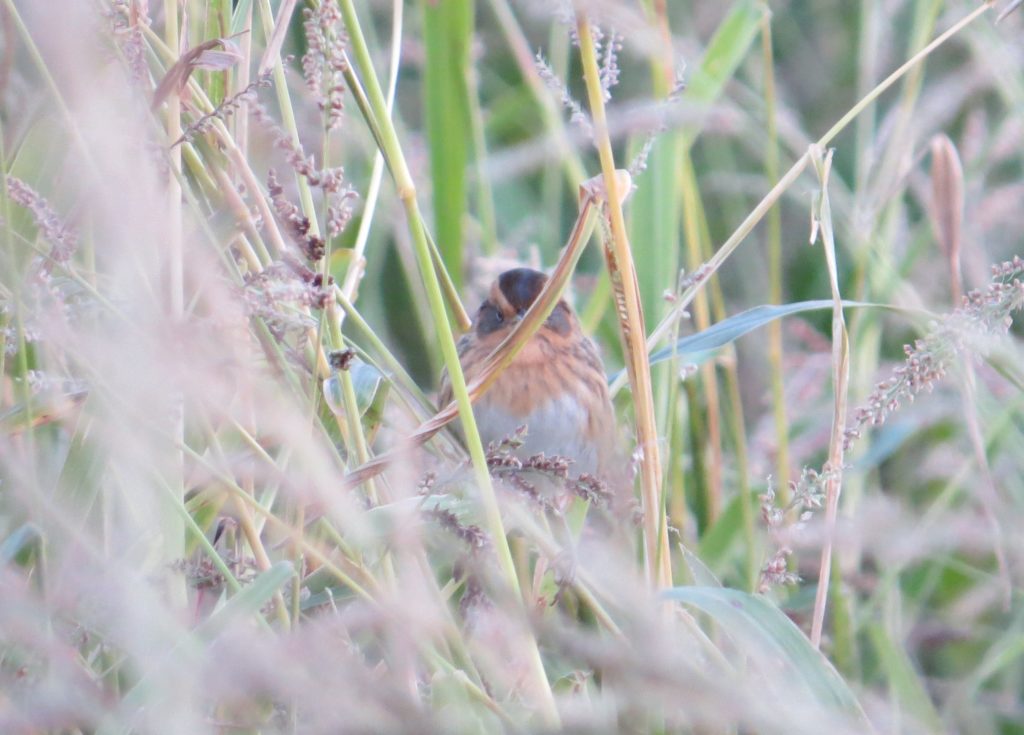
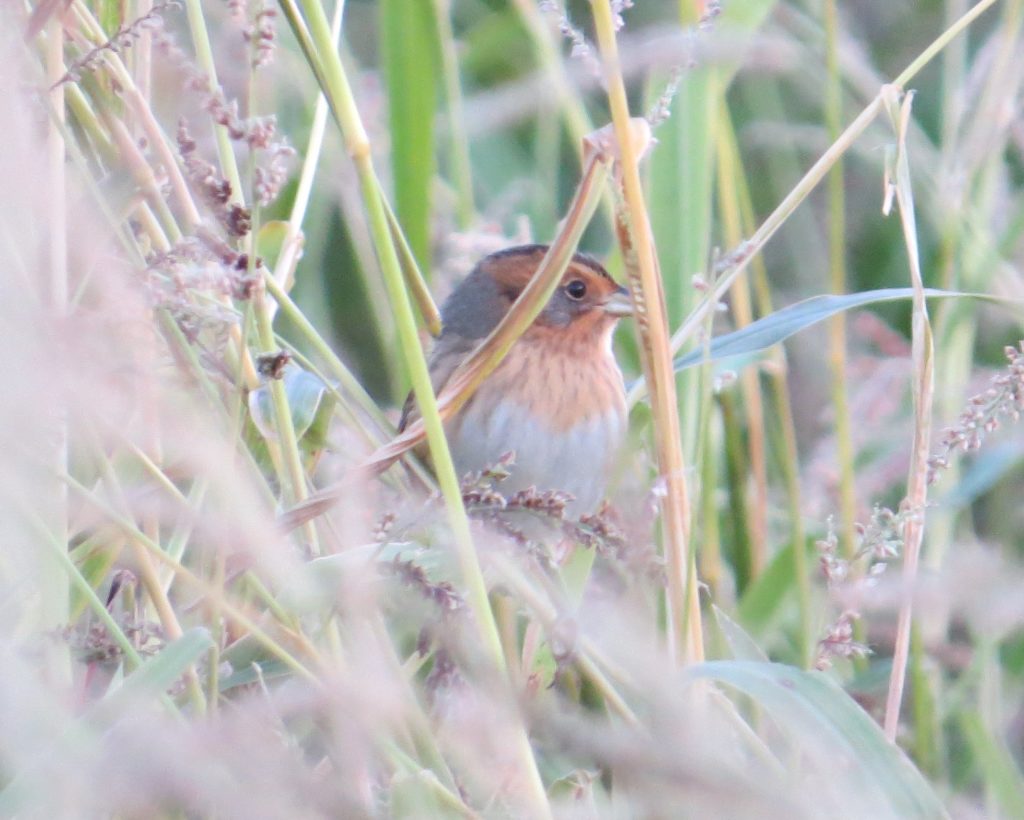 These were the only photos I was able to get which were enough to sufficiently document this first county record. Thankfully the bird hung on for a few days for lots of people to enjoy and add to their county list, including longtime Kandiyohi listers/leaders Randy Frederickson and Ron Erpelding. It felt good to finally add this bird to the county’s rich birding history. Everyone agreed it was a long overdue addition.
These were the only photos I was able to get which were enough to sufficiently document this first county record. Thankfully the bird hung on for a few days for lots of people to enjoy and add to their county list, including longtime Kandiyohi listers/leaders Randy Frederickson and Ron Erpelding. It felt good to finally add this bird to the county’s rich birding history. Everyone agreed it was a long overdue addition.
Not all birds that I need for my Kandi list are needed by the whole crew. In fact, I am alone in my quest for some of them. One such bird is the Ruffed Grouse, a bird once fairly common in the northern part of the county two decades ago. Today, though, it is akin to Bigfoot. But that adds to the intrigue of tracking one down. One day in early December, Randy accompanied me on a fool’s errand of trying to find one. And we saw as many Grouse as expected, but we did not expect to bump into a Short-eared Owl, a hero bird for the outing even if it wasn’t a new county tic. The experience was made even sweeter by how incredibly cooperative it was.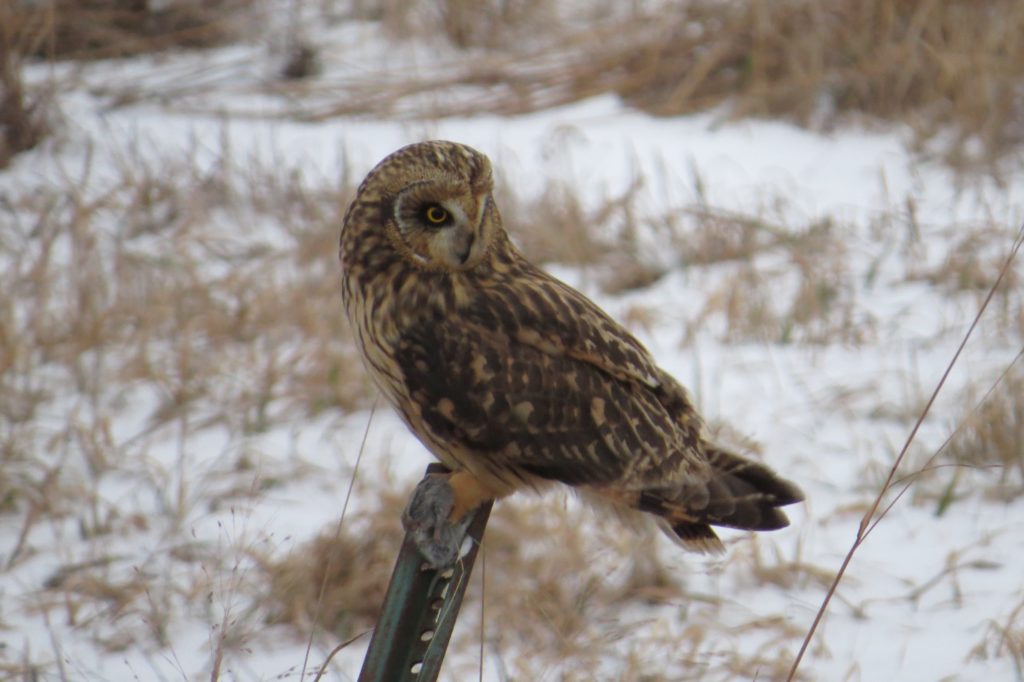
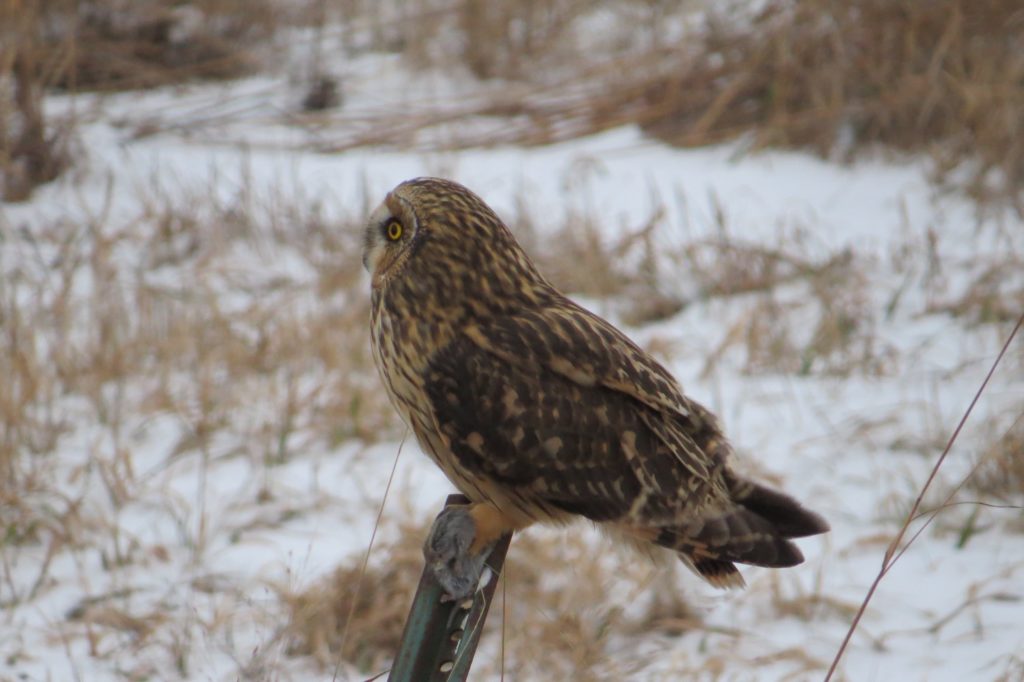
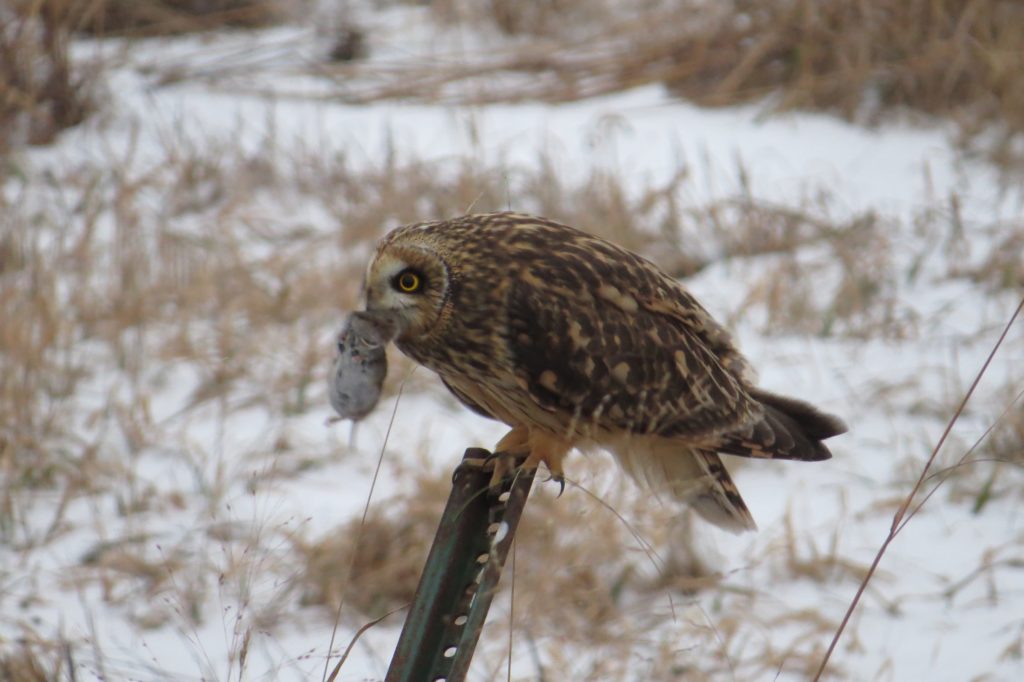
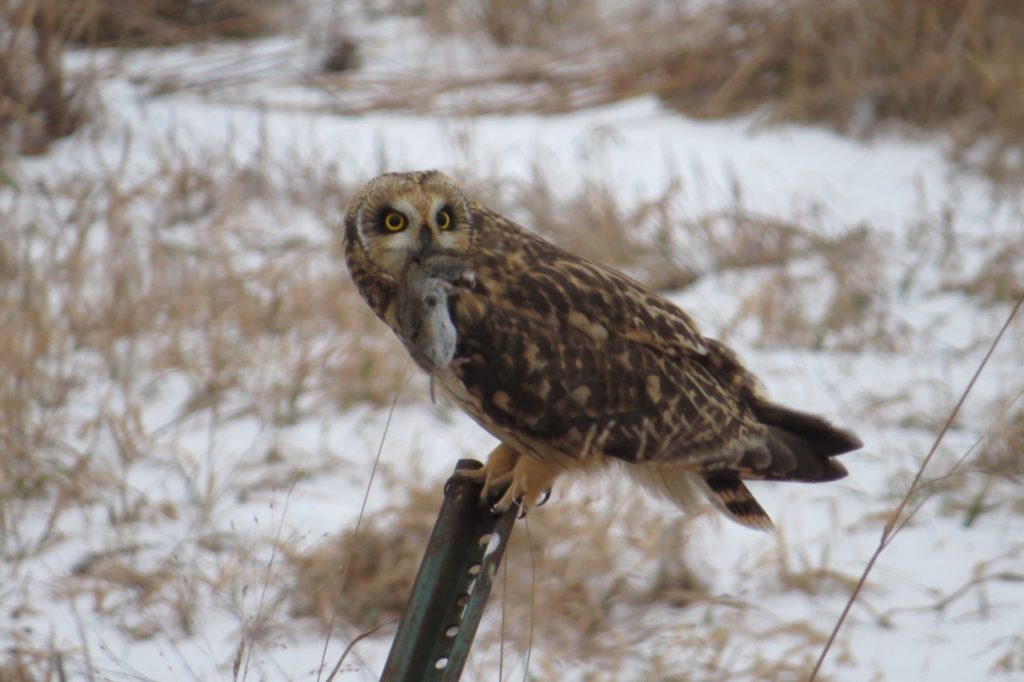
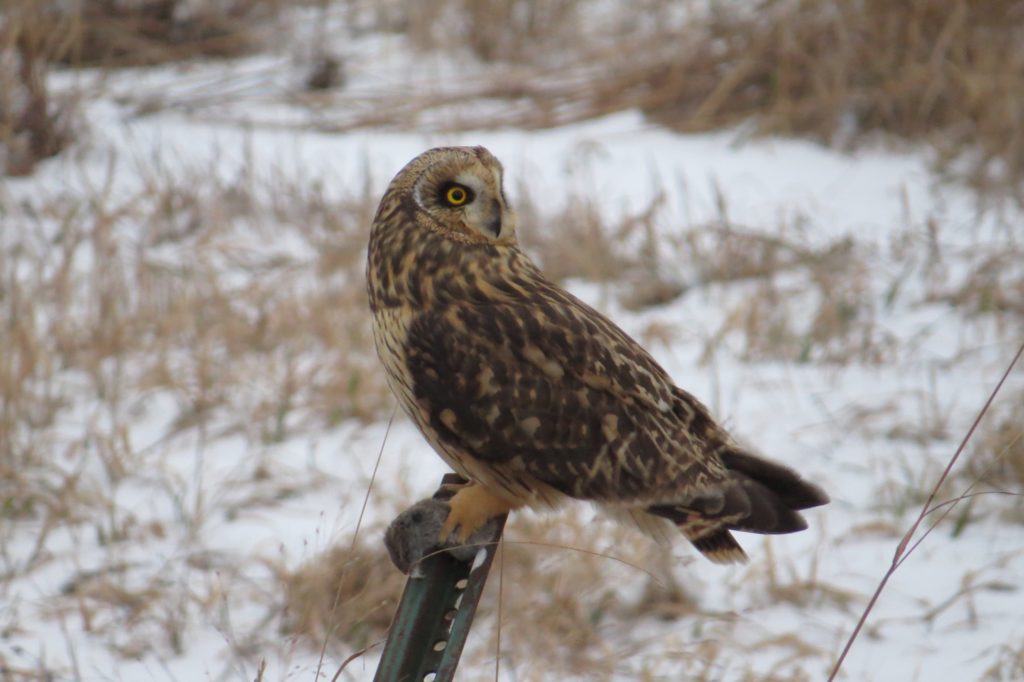
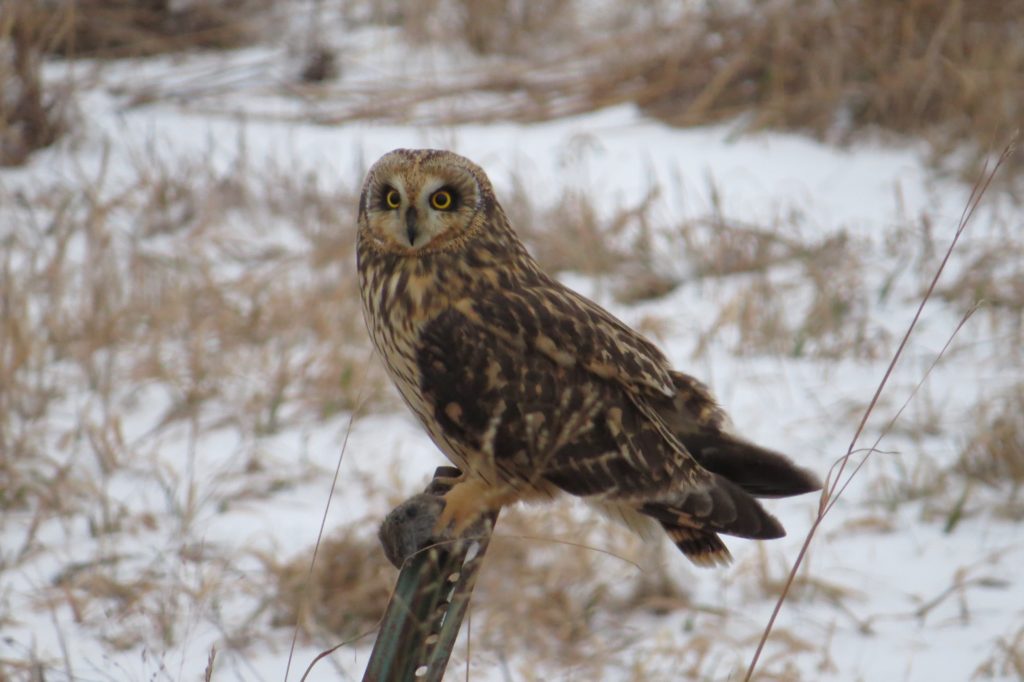
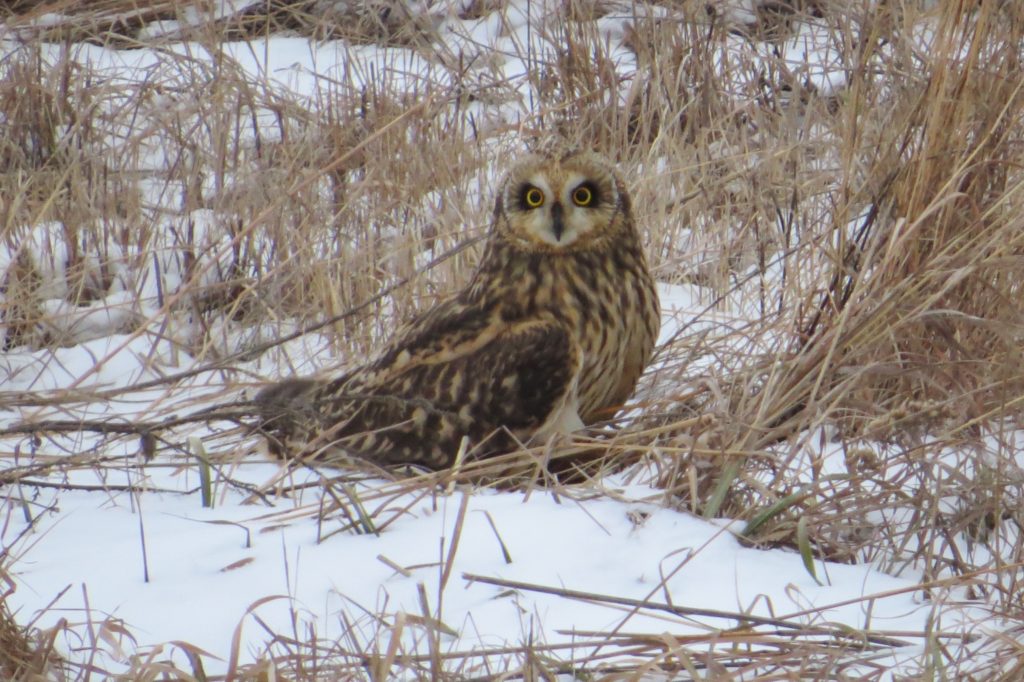 Randy’s been on a hot streak this last year finding several good birds–even when he’s not birding. At the end of December when he was at Ridgewater Community College releasing a rabbit he trapped, he saw a Robin flock eating crabapples and noticed–without binos–one that didn’t quite match the others. This Varied Thrush wasn’t a new bird for either Randy or me (my third county record), but it is always fun to see.
Randy’s been on a hot streak this last year finding several good birds–even when he’s not birding. At the end of December when he was at Ridgewater Community College releasing a rabbit he trapped, he saw a Robin flock eating crabapples and noticed–without binos–one that didn’t quite match the others. This Varied Thrush wasn’t a new bird for either Randy or me (my third county record), but it is always fun to see.
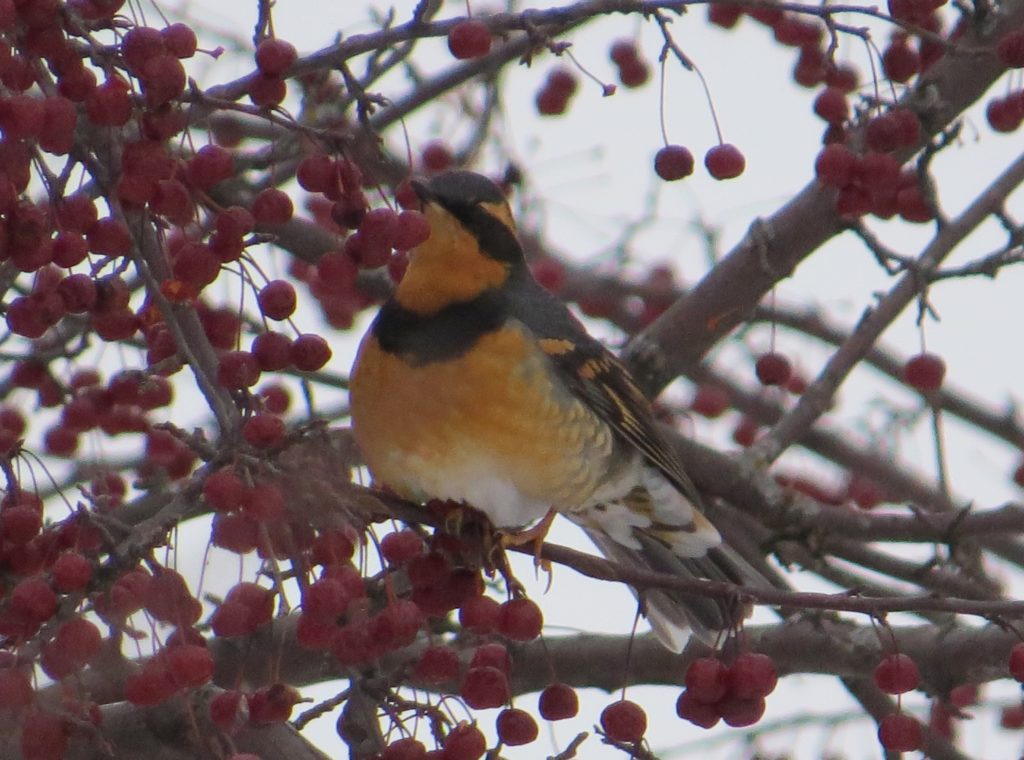
Maybe it was his hot streak or maybe he just wanted me to be out there helping him find new county records, but a week ago Randy started pushing me to get out looking for my nemesis county bird. He knew I needed to clear this distraction from my birding brain and was therefore keeping an eye on the calendar all while I was getting swallowed up in work and life. The Northern Saw-whet Owl is very common but incredibly hard to find. Seeing a Kandi Saw-whet was my number one most wanted Owl after having recently completed the set of 19 American Owls. I have been searching for one in the county for a very long time. Several times Steve Gardner and I have found evidence of Saw-whet roost sites but never the Owls themselves. Despite the fact that they migrate through every spring and fall and sometimes winter here, we have never been able to find one. It was aggravating.
At Randy’s urging, we went out owling after dark one night recently. I was not optimistic because of all the previous attempts and the fact that fall banding reports indicated it was a down year for Saw-whets. I figured we’d put in yet another attempt to say we tried, and it would be a boring night just like all the other Saw-whet attempts. I could not have been more wrong. Randy decided we should try a forested road in the northern part of the county. This road is famous. To us birders, it is a dynamite spot for forest birds in the spring and summer months. To other locals (and even people nationally), this road is known as one to completely avoid or daringly go down, depending on your view of things that are allegedly haunted. We birders often go to sketchy and/or disgusting places, so this was no big deal to us. Apparently it wasn’t to some others as well. Randy and I were puzzled at another slow-moving car, spotlights shining out the windows, that crept down the road behind us. Turns out they were four adult ghost hunters from a couple hours away trying to find a different quarry than we were.
Our first listening stop went as I expected. Nothing. I figured a few more times of this: getting out of the vehicle, listening/freezing, getting back in, and repeating and we would call it a night. Well, at the second stop, Randy immediately heard something and asked if that was a Saw-whet or a Canada Goose in the distance. We held our breath and strained to listen, and sure enough, in the distance we heard the faint but rhythmic and recognizable toot-toot-toot-toot-toot… We had done it! The Saw-whet Owl was finally on the list! After some celebratory fist bumps and attempts to call it closer to the road, we owled on. And at every stop, we kept hearing the flute-like tooting of more Saw-whets! It was absolutely insane. The sound of them seemed like it was coming from everywhere, a perplexing phenomenon in itself, but even more so considering we heard multiple predator Owls (Barred and Great Horned) at every stop as well. Randy and I were in awe. Not only was it a long-hoped for bird for me, but it was just a stunning display of nature and yet another reminder of how you can still find surprises right in your backyard.
At one of our stops we found a very cooperative Saw-whet Owl that allowed us some good looks. This was also a major goal of mine. I didn’t just want to tic Saw-whet for the county; I wanted to see it in the county.
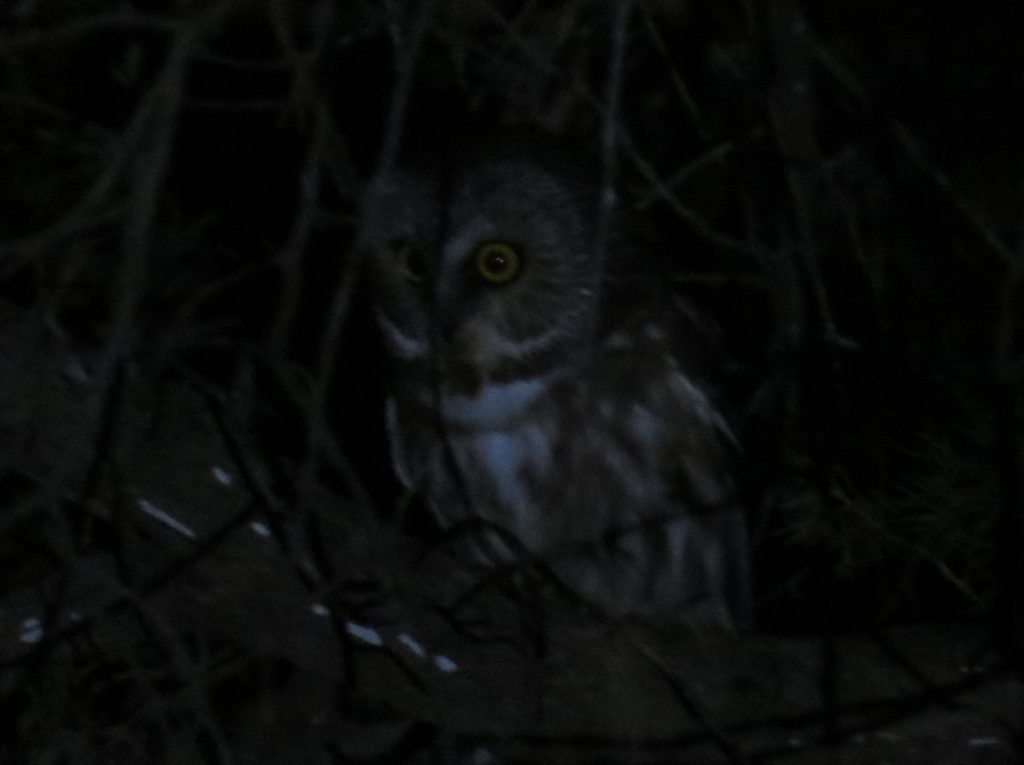 This was an unforgettable night of owling that was made even better by sharing it with a great friend. A huge thanks goes out to Randy for suggesting the outing and for his guiding skills in picking the right week and the right road. The long-awaited and much-anticipated Owl was officially on my county list, completing my collection of 7 regularly-occurring Owls in the county. Without Randy’s invitation, it is likely that I might not have even tried for Saw-whet Owls this spring because of how busy life has been.
This was an unforgettable night of owling that was made even better by sharing it with a great friend. A huge thanks goes out to Randy for suggesting the outing and for his guiding skills in picking the right week and the right road. The long-awaited and much-anticipated Owl was officially on my county list, completing my collection of 7 regularly-occurring Owls in the county. Without Randy’s invitation, it is likely that I might not have even tried for Saw-whet Owls this spring because of how busy life has been.
Unfortunately Steve Gardner was out of state when this all went down. When he got back from his trip, he and and I went out there, and we were able to get him a Saw-whet Owl for his county list too. Steve and I have logged many fruitless trips and lots of hours looking for these Owls as well as other Owl species. Prior to two years ago, our Owl luck was nonexistent. Now we had them all, and it felt great. Steve and I were lucky enough to find a Saw-whet that was cooperative for Steve to get some visuals.
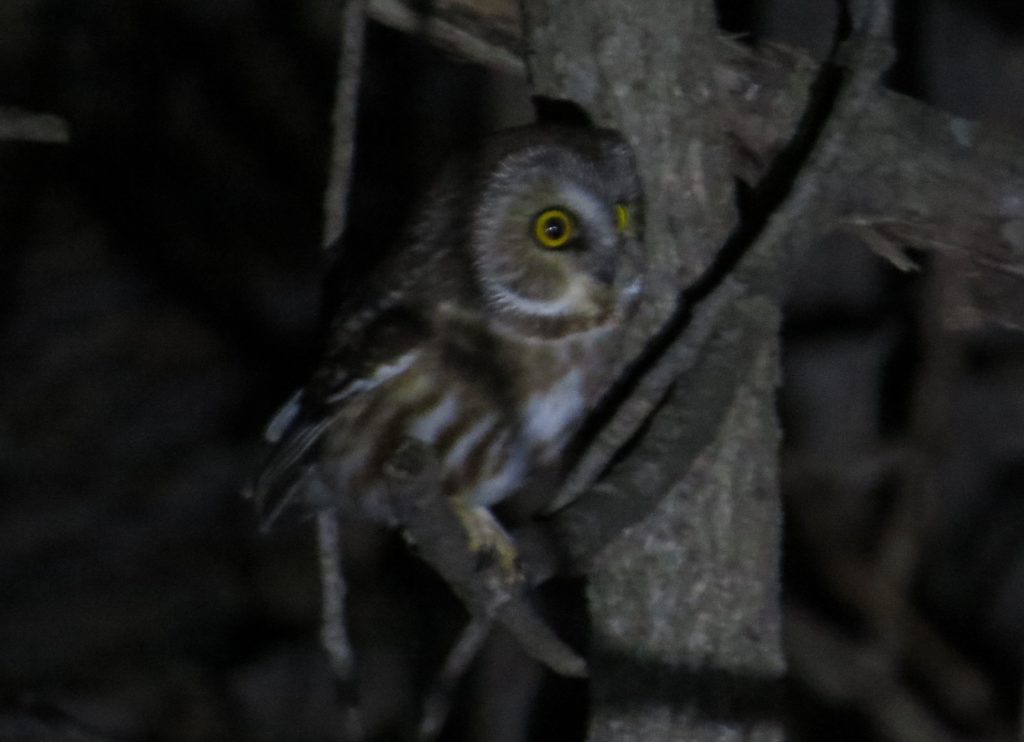
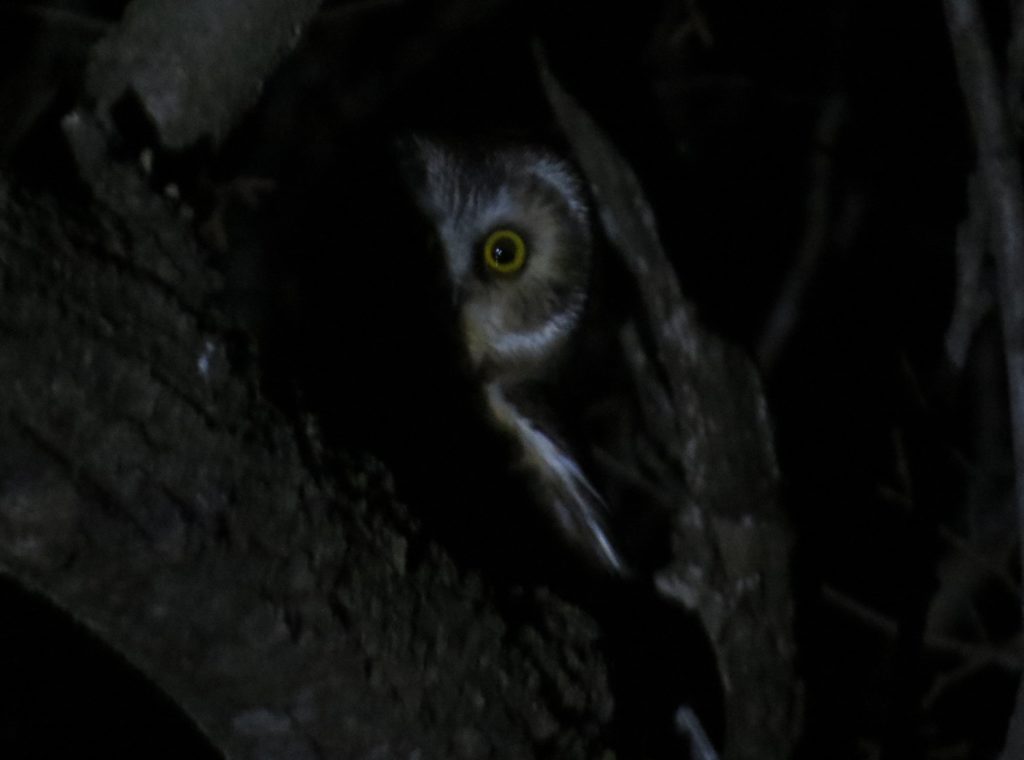
 With this chapter closed in the most satisfying way possible, the question of what’s next really is an open one. I honestly don’t know–no other birds on a local, national, or world level have replaced the Ferruginous Pygmy-Owl and Kandi Northern Saw-whet Owl. There is a strange new void where a nemesis should be. But maybe that’s the way Randy wanted it–a clear head so I can start focusing on another bird that should be on the county record, like the Black Scoter.
With this chapter closed in the most satisfying way possible, the question of what’s next really is an open one. I honestly don’t know–no other birds on a local, national, or world level have replaced the Ferruginous Pygmy-Owl and Kandi Northern Saw-whet Owl. There is a strange new void where a nemesis should be. But maybe that’s the way Randy wanted it–a clear head so I can start focusing on another bird that should be on the county record, like the Black Scoter.

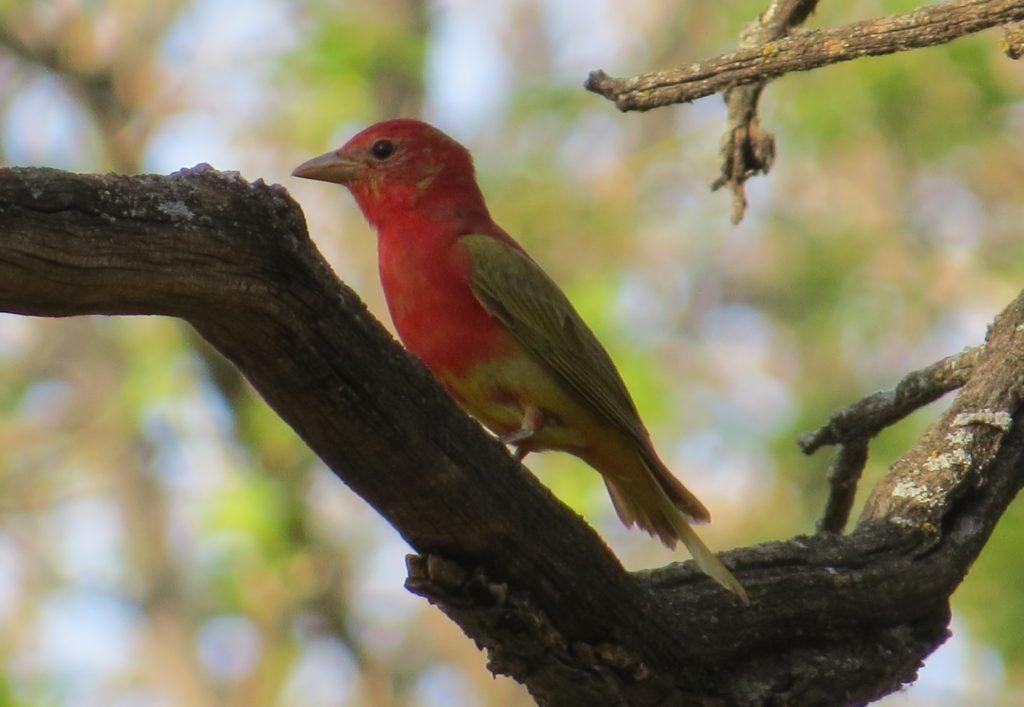
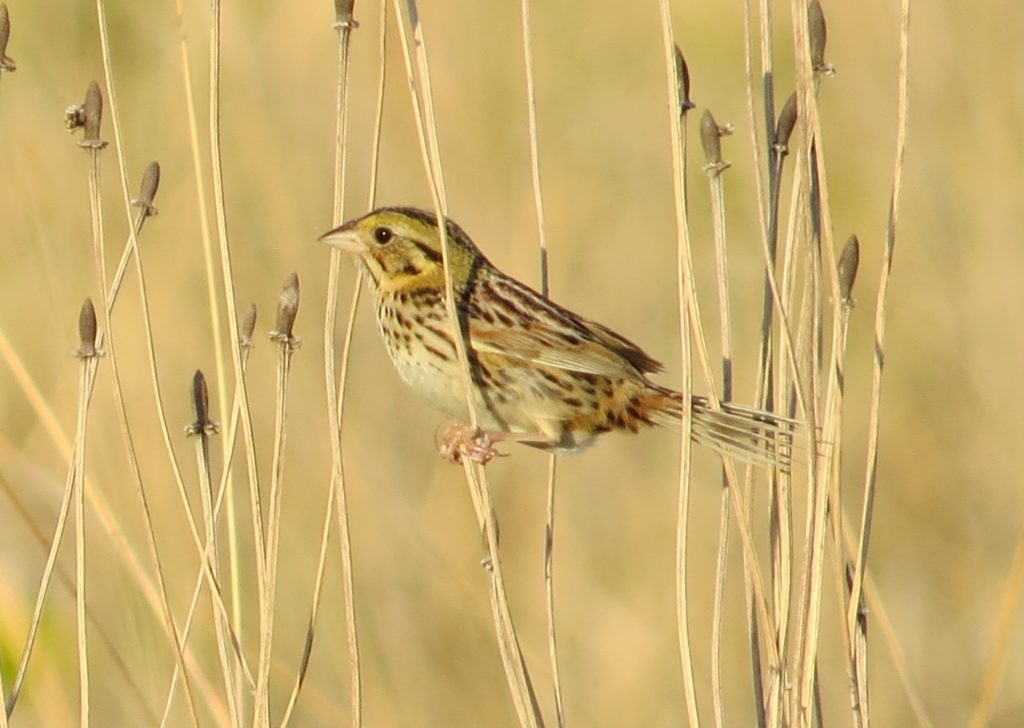 I have wanted this Sparrow for a long time. The last time one was in the county was in 2013, my first summer of birding. I did try for that one, but I was so green that I didn’t really know how to try. Plus I later found out that I was in the wrong spot by like a quarter mile. Needless to say, with this year’s find I immediately raced down to that corner of the county, making me slightly late for meeting up with a friend that morning. Getting the bird was a cinch as it could be heard from the parking lot. I spent a little time with it and then raced back to my meeting. When that meeting ended at noon, I promptly went to the liquor store to make good on a promise. I made my purchase but was disappointed to find out that Andy and Dedrick were no longer in the county to collect payment and had vanished like the DeLorean, leaving fiery trails of good birds for others to marvel at. Two of those birds were some Sanderlings and Ruddy Turnstones that same afternoon on a beach at Lake Minnewaska in neighboring Pope County. The find actually pushed me out the door that very same day to start checking similar beaches in this county. I checked several but did not go to the beach at Green Lake in Spicer. Though I thought of it, I instead went to lakes to the south. It’s a good thing that county-listing expert, Herb Dingmann, had the same hunch after ticking Andy and Dedrick’s Pope finds. He did stop at Green Lake and found the same pair of species! Twenty minutes after his call, Steve and I were on site, enjoying our latest county bird. This was #261 for me.
I have wanted this Sparrow for a long time. The last time one was in the county was in 2013, my first summer of birding. I did try for that one, but I was so green that I didn’t really know how to try. Plus I later found out that I was in the wrong spot by like a quarter mile. Needless to say, with this year’s find I immediately raced down to that corner of the county, making me slightly late for meeting up with a friend that morning. Getting the bird was a cinch as it could be heard from the parking lot. I spent a little time with it and then raced back to my meeting. When that meeting ended at noon, I promptly went to the liquor store to make good on a promise. I made my purchase but was disappointed to find out that Andy and Dedrick were no longer in the county to collect payment and had vanished like the DeLorean, leaving fiery trails of good birds for others to marvel at. Two of those birds were some Sanderlings and Ruddy Turnstones that same afternoon on a beach at Lake Minnewaska in neighboring Pope County. The find actually pushed me out the door that very same day to start checking similar beaches in this county. I checked several but did not go to the beach at Green Lake in Spicer. Though I thought of it, I instead went to lakes to the south. It’s a good thing that county-listing expert, Herb Dingmann, had the same hunch after ticking Andy and Dedrick’s Pope finds. He did stop at Green Lake and found the same pair of species! Twenty minutes after his call, Steve and I were on site, enjoying our latest county bird. This was #261 for me.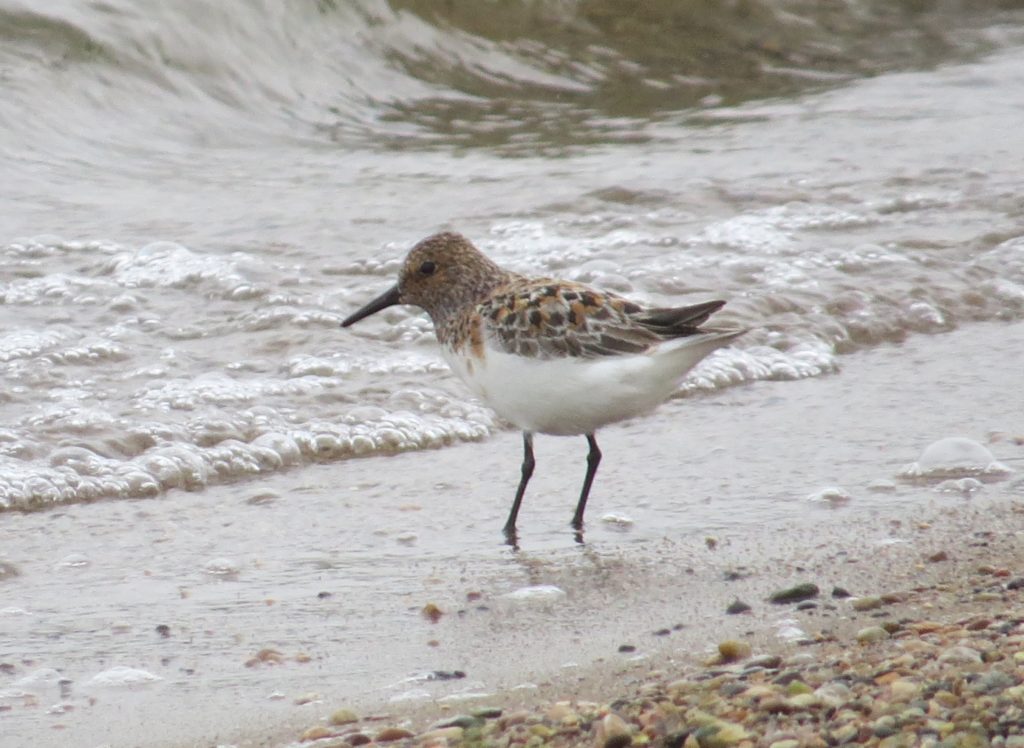
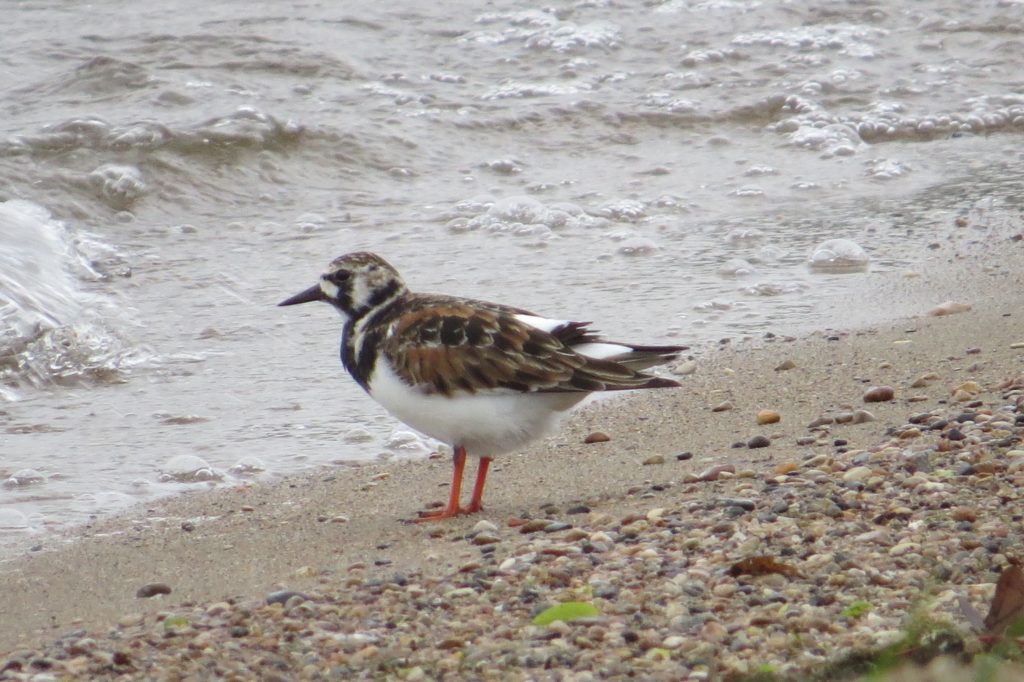
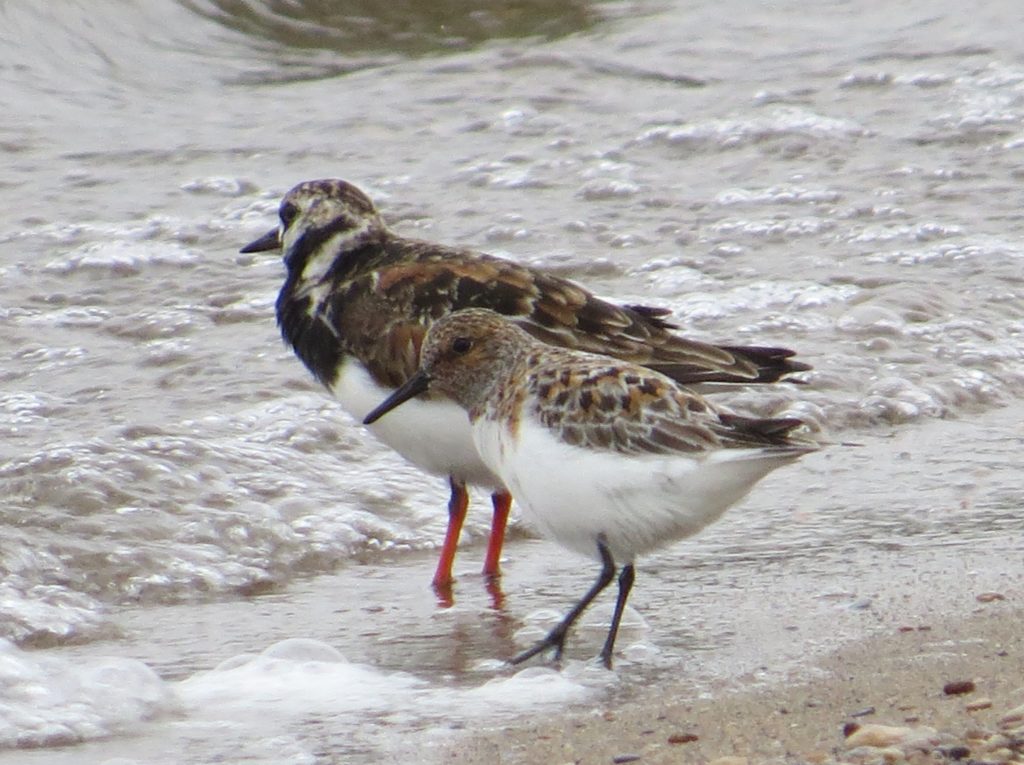
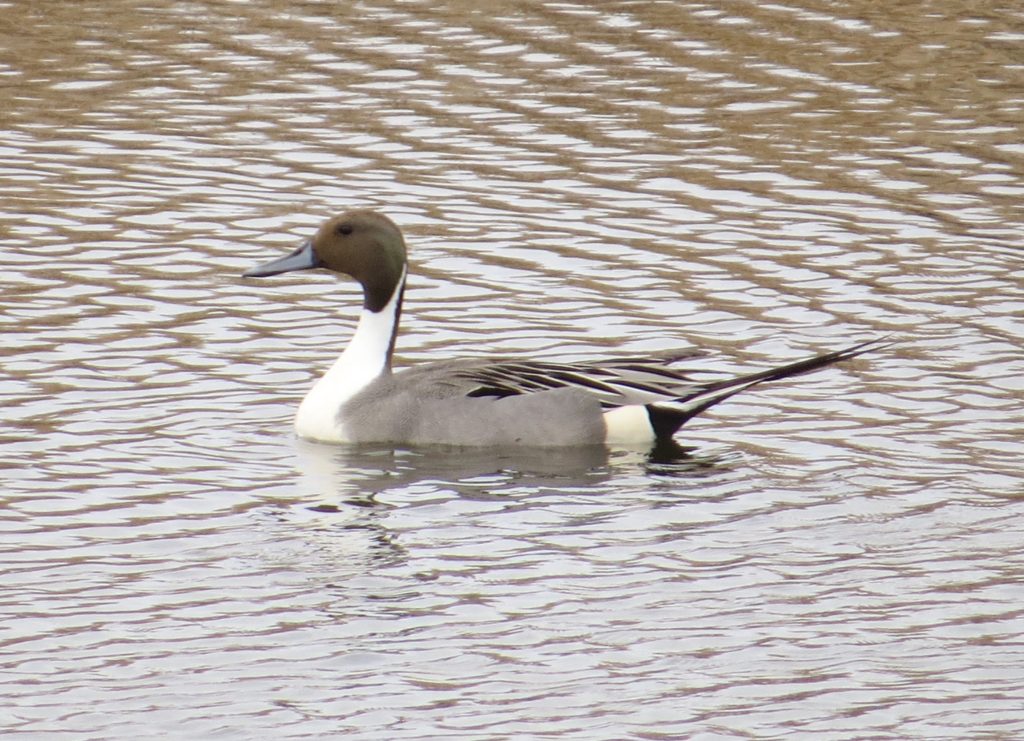 Fun as the Pintails were, nothing could make the Meeker slope more slippery like the 1-2-3 punch of Willet, Snowy Egret, and Caspian Tern. The latter two were seen on the same day as I was hurriedly leaving work to chase the Curlew Sandpiper.
Fun as the Pintails were, nothing could make the Meeker slope more slippery like the 1-2-3 punch of Willet, Snowy Egret, and Caspian Tern. The latter two were seen on the same day as I was hurriedly leaving work to chase the Curlew Sandpiper.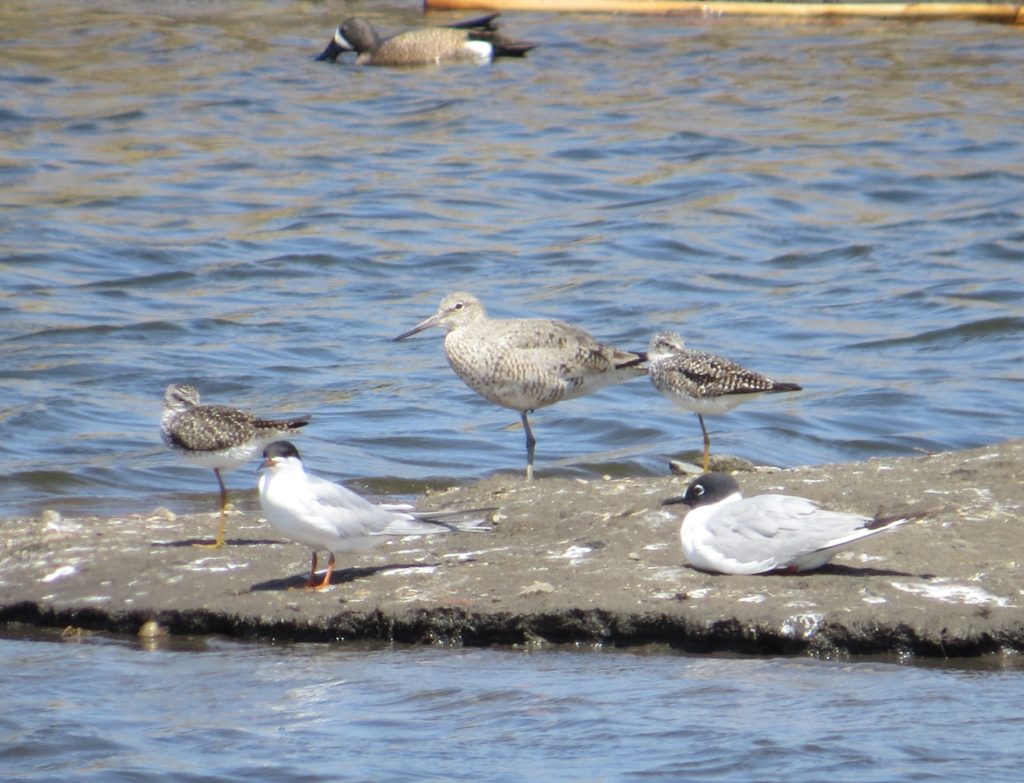 After work one day, coworker and birding buddy Brad Nelson had seen some smaller Egrets fly over and land at the ponds but wasn’t able to investigate. He asked if I could check it out. Though the Curlew Sandpiper was the priority, I told him I could give it a quick once-over. It’s a good thing, too, because Brad’s suspicion on the Egrets was right. This pair of Snowy Egrets became our first eBird flagged rarity for work, and it allowed Brad to tie the record for being #1 in Meeker.
After work one day, coworker and birding buddy Brad Nelson had seen some smaller Egrets fly over and land at the ponds but wasn’t able to investigate. He asked if I could check it out. Though the Curlew Sandpiper was the priority, I told him I could give it a quick once-over. It’s a good thing, too, because Brad’s suspicion on the Egrets was right. This pair of Snowy Egrets became our first eBird flagged rarity for work, and it allowed Brad to tie the record for being #1 in Meeker.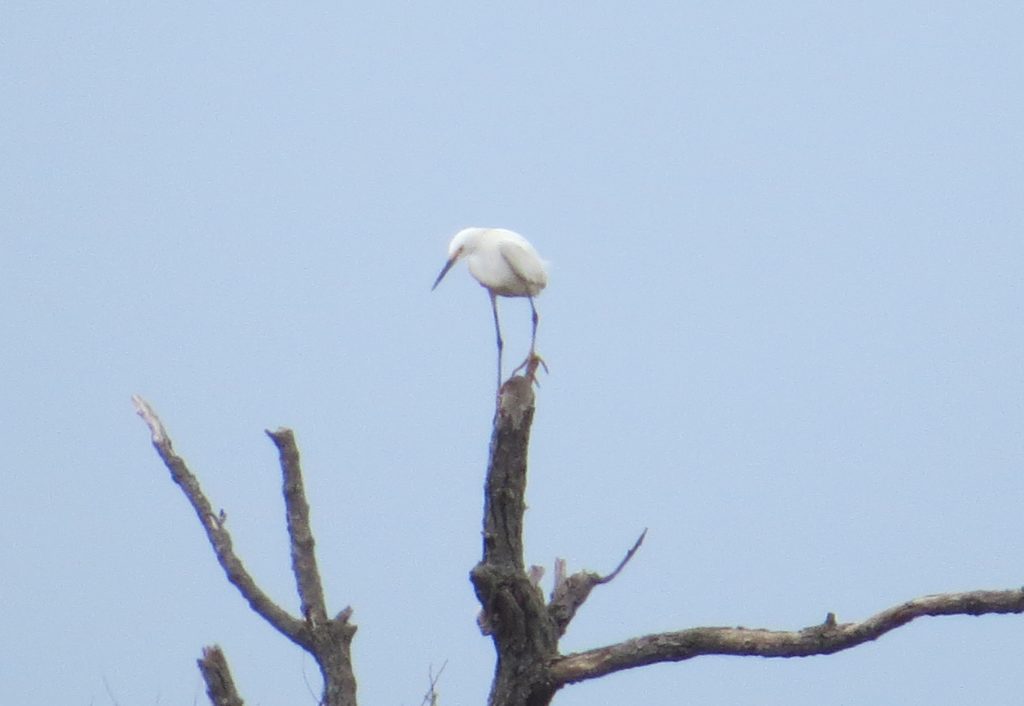 As I scanned the ponds in my haste to get to the Curlew, I nearly missed this Caspian Tern trying to blend in with the Forster’s. Caspian is the better of the two Terns here, and it was the bird that officially crowned Brad Nelson the King of Meeker County. Congrats, Brad!
As I scanned the ponds in my haste to get to the Curlew, I nearly missed this Caspian Tern trying to blend in with the Forster’s. Caspian is the better of the two Terns here, and it was the bird that officially crowned Brad Nelson the King of Meeker County. Congrats, Brad!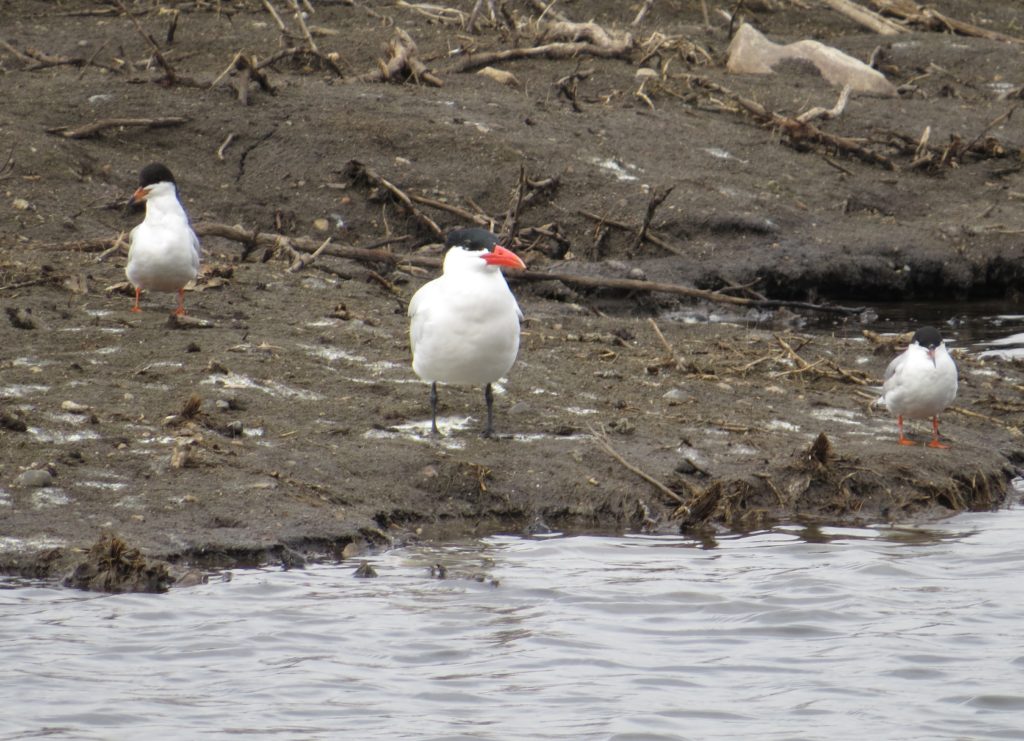 Perhaps the county listing starts innocently with “just a quick trip” 6 miles from the county line to pick up Dan Orr’s Stearns County Mockingbirds.
Perhaps the county listing starts innocently with “just a quick trip” 6 miles from the county line to pick up Dan Orr’s Stearns County Mockingbirds.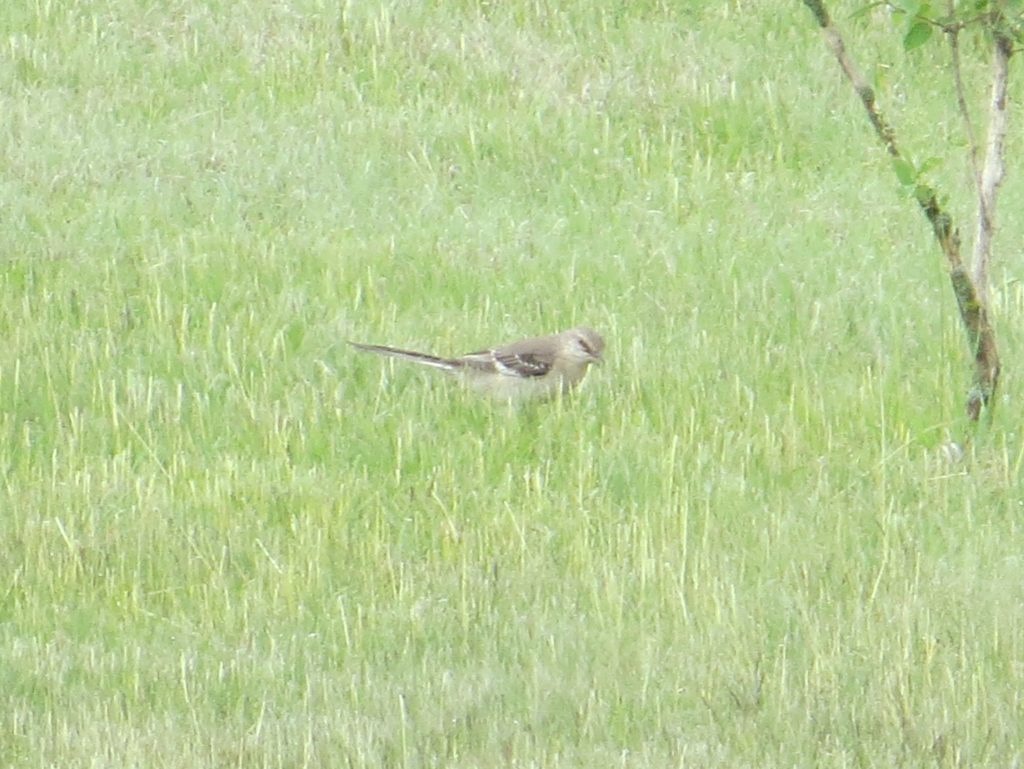 Or maybe it happens when you are driving down the Kandi-Swift County line road and find yourself staring at the Swift side of the line. It’s a good thing I did because it netted me my first real good looks and photos of a Sora. This felt like a lifer, honestly.
Or maybe it happens when you are driving down the Kandi-Swift County line road and find yourself staring at the Swift side of the line. It’s a good thing I did because it netted me my first real good looks and photos of a Sora. This felt like a lifer, honestly.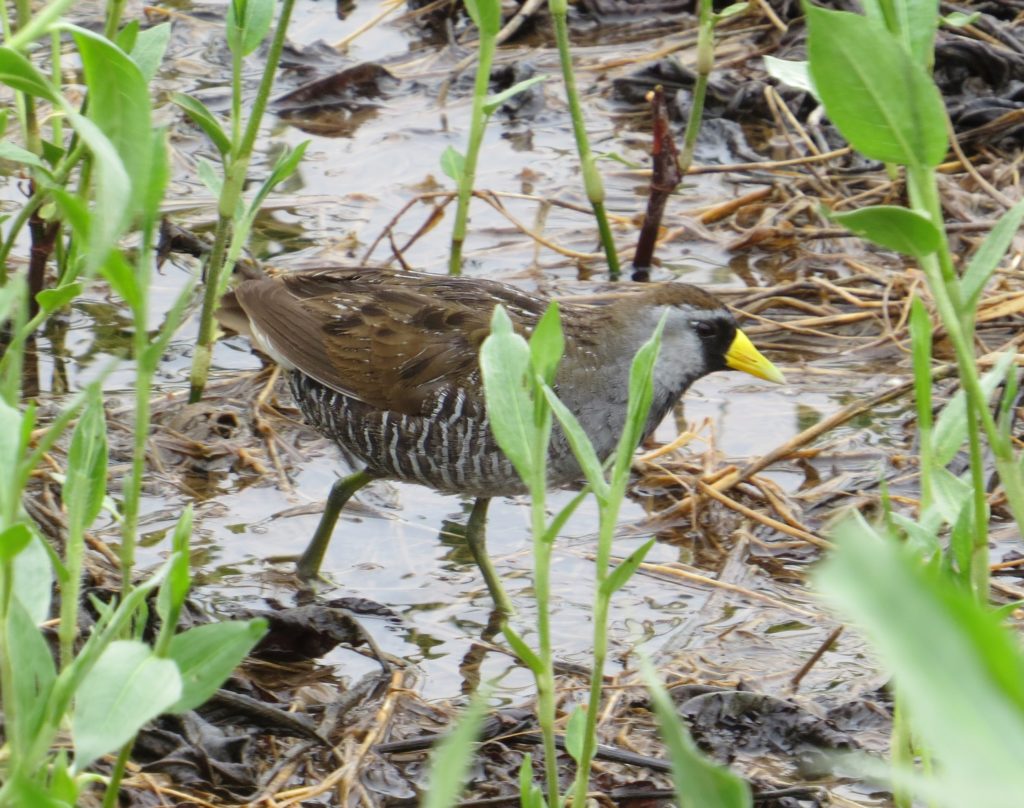 The birding action is too hot at home to be worried about other counties. I’m not and don’t anticipate to be an active 87-lister, though it is fun to add tics when I travel. This spring/summer has produced an abundance of good birds right here in Kandiyohi County, even if they were not new to me. In fact, for the first time ever, I managed to go above the 200 mark in a single year with half the year still to go! Here are some of the more fun finds I’ve encountered along the way.
The birding action is too hot at home to be worried about other counties. I’m not and don’t anticipate to be an active 87-lister, though it is fun to add tics when I travel. This spring/summer has produced an abundance of good birds right here in Kandiyohi County, even if they were not new to me. In fact, for the first time ever, I managed to go above the 200 mark in a single year with half the year still to go! Here are some of the more fun finds I’ve encountered along the way.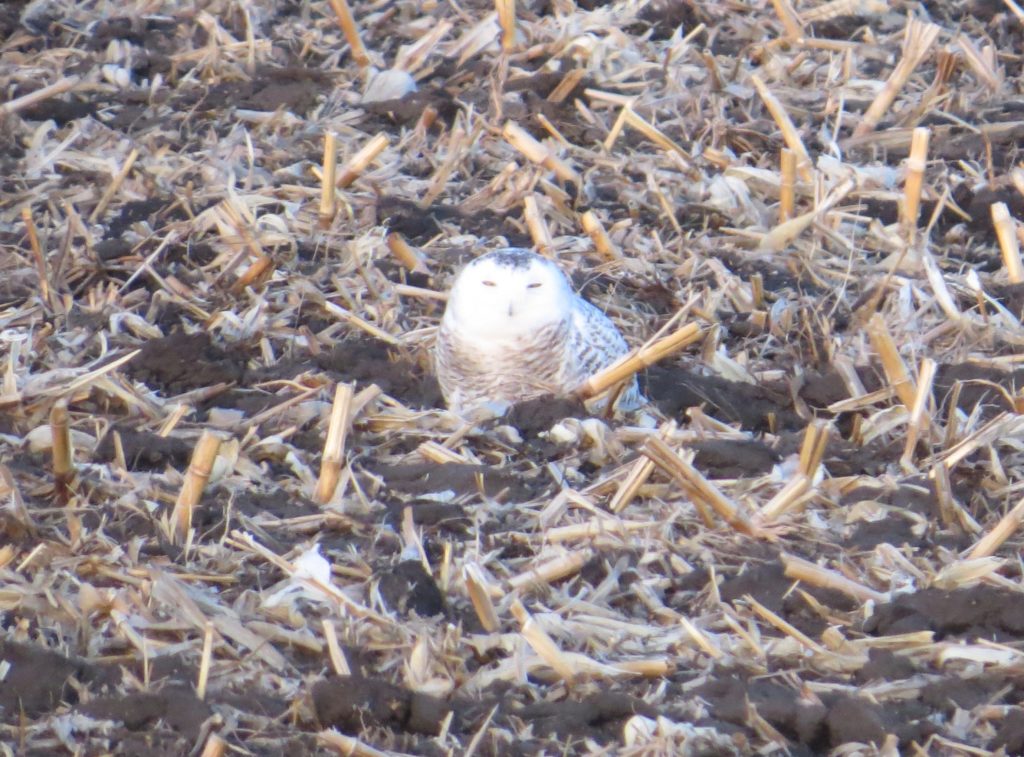 Another, “What’s that doing here right now?” bird was a presumed nesting pair of White-winged Crossbills this spring found by Steve Gardner in the same place I found a flock last November.
Another, “What’s that doing here right now?” bird was a presumed nesting pair of White-winged Crossbills this spring found by Steve Gardner in the same place I found a flock last November.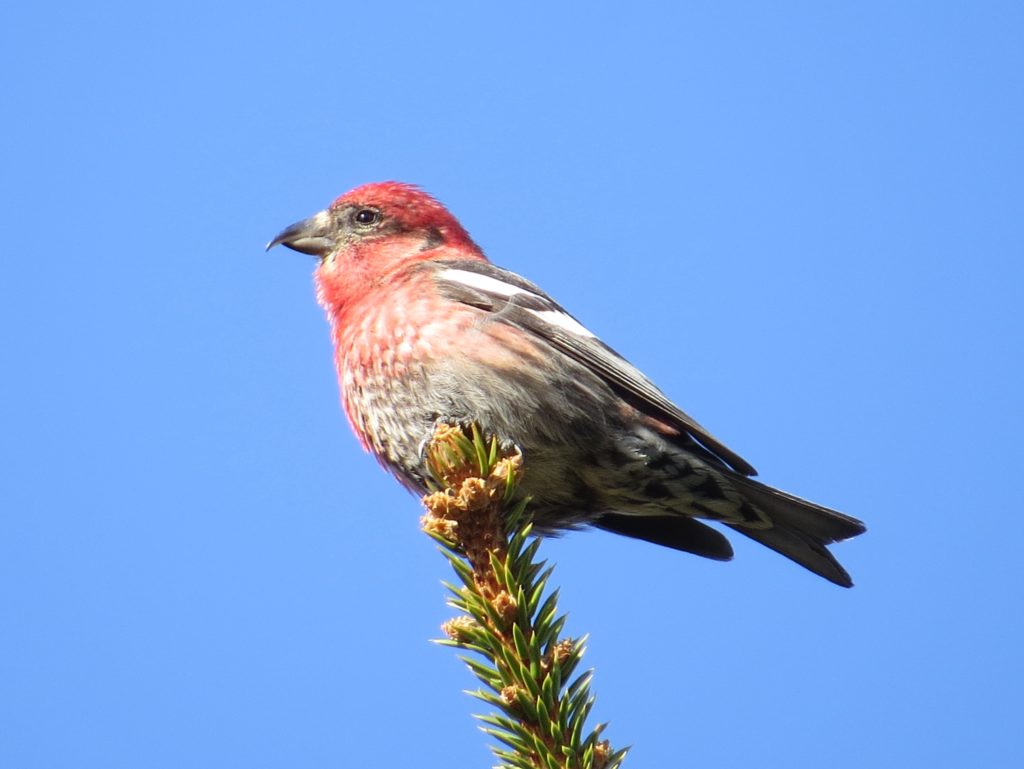
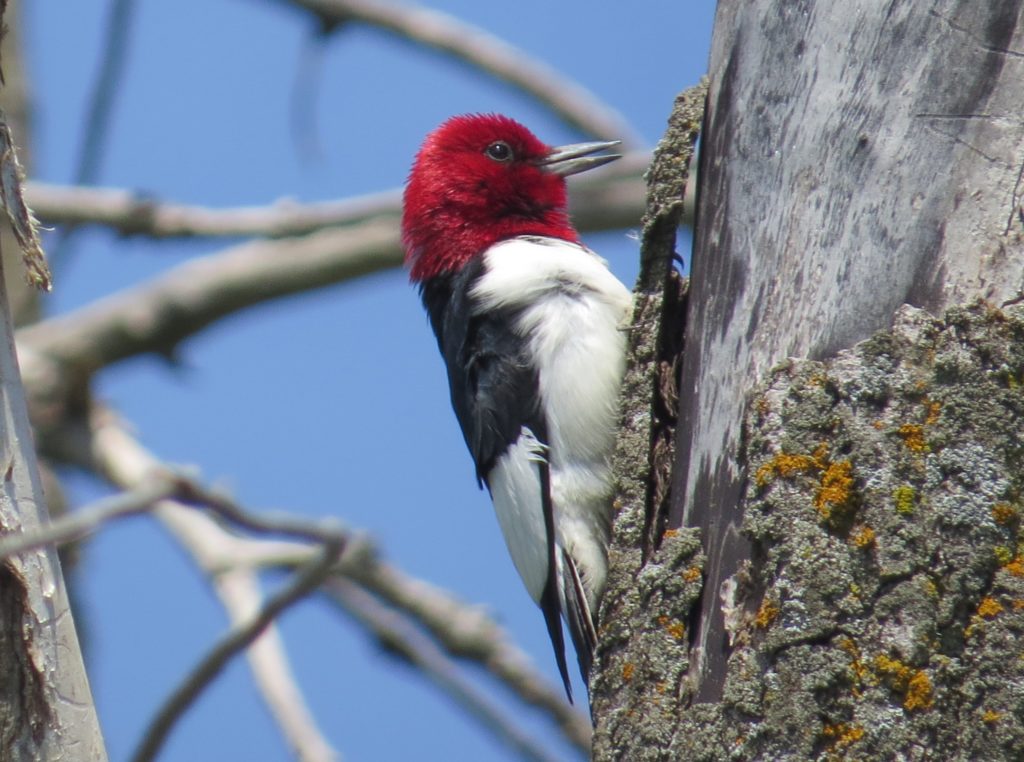 Though not a rare bird for Kandiyohi County, it’s always good to bump into a Scarlet Tanager too.
Though not a rare bird for Kandiyohi County, it’s always good to bump into a Scarlet Tanager too.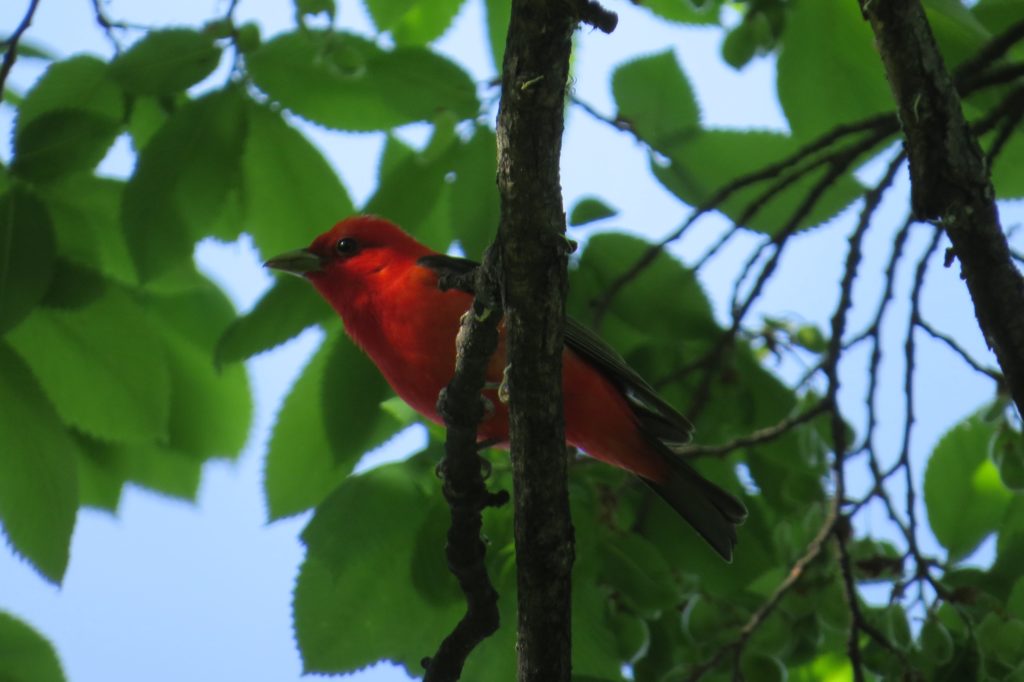 This spring/summer I have many county Seconds, meaning I’ve seen/heard a bird for the second time ever in the county. I was pretty thrilled to discover my second Loggerhead Shrike for the county. I’ve only seen a handful in the entire state, so this was pretty special.
This spring/summer I have many county Seconds, meaning I’ve seen/heard a bird for the second time ever in the county. I was pretty thrilled to discover my second Loggerhead Shrike for the county. I’ve only seen a handful in the entire state, so this was pretty special.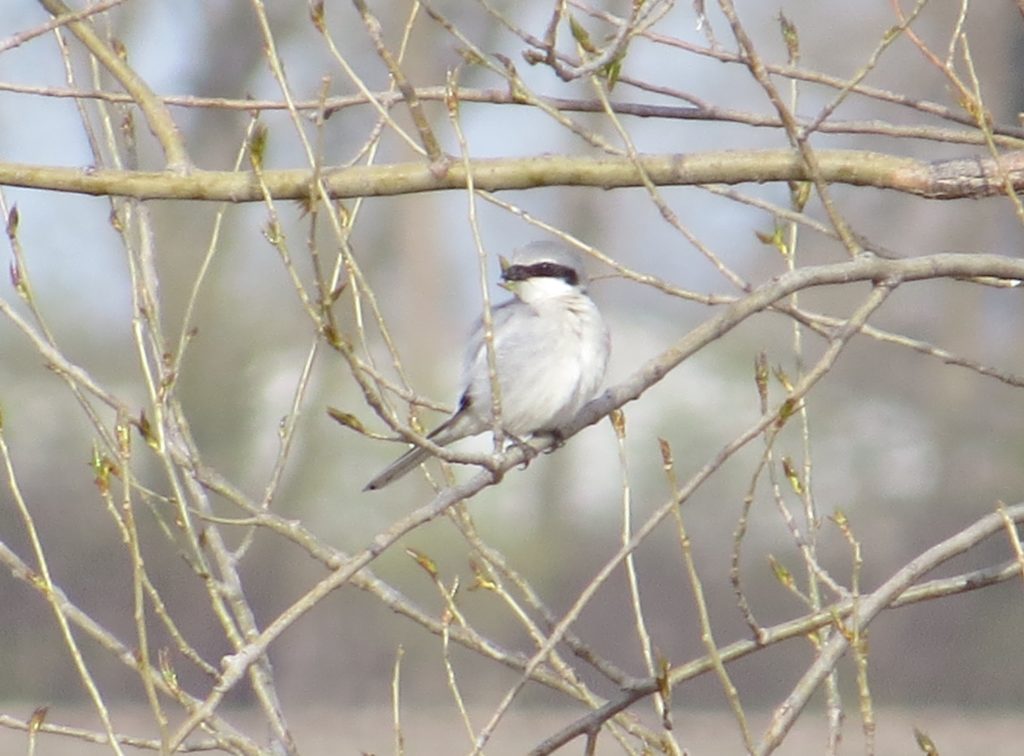
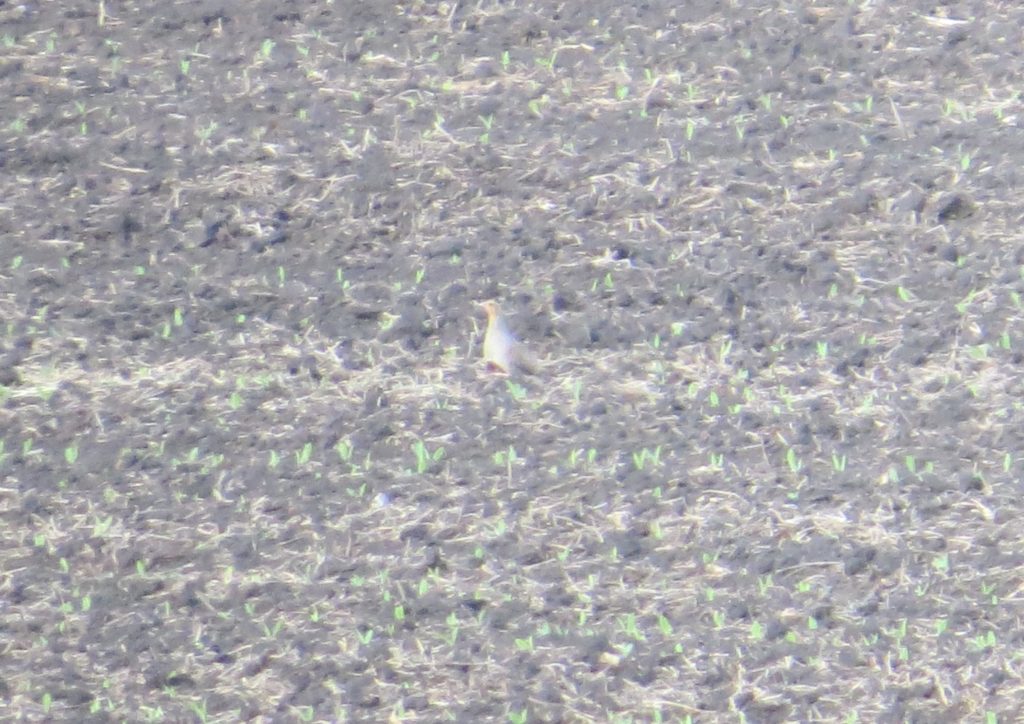
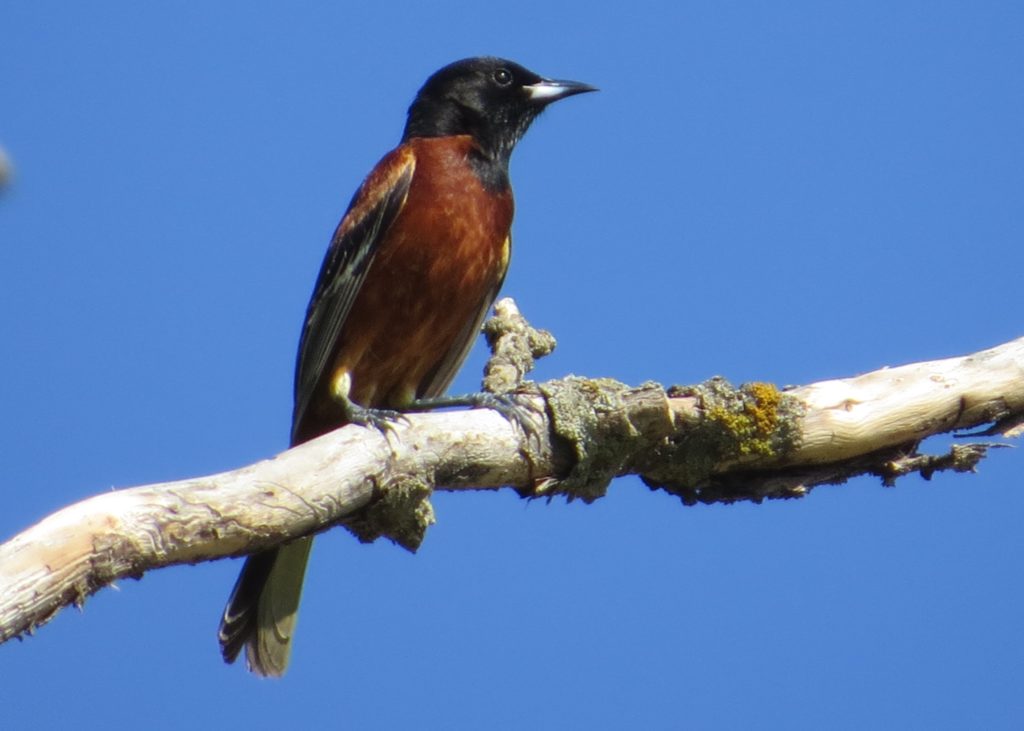 I saw this Orchard Oriole along a road between two gravel pits that I have walked many times in the past looking for a county record Blue Grosbeak. Since the record was found last summer and since it’s still not Blue Grosbeak season in my mind, I was not even thinking about that species. The thing about birding is that good finds sometimes happen when you least expect them. I was pretty pumped to finally (after all these years) get a personally found second Kandiyohi County record Blue Grosbeak.
I saw this Orchard Oriole along a road between two gravel pits that I have walked many times in the past looking for a county record Blue Grosbeak. Since the record was found last summer and since it’s still not Blue Grosbeak season in my mind, I was not even thinking about that species. The thing about birding is that good finds sometimes happen when you least expect them. I was pretty pumped to finally (after all these years) get a personally found second Kandiyohi County record Blue Grosbeak.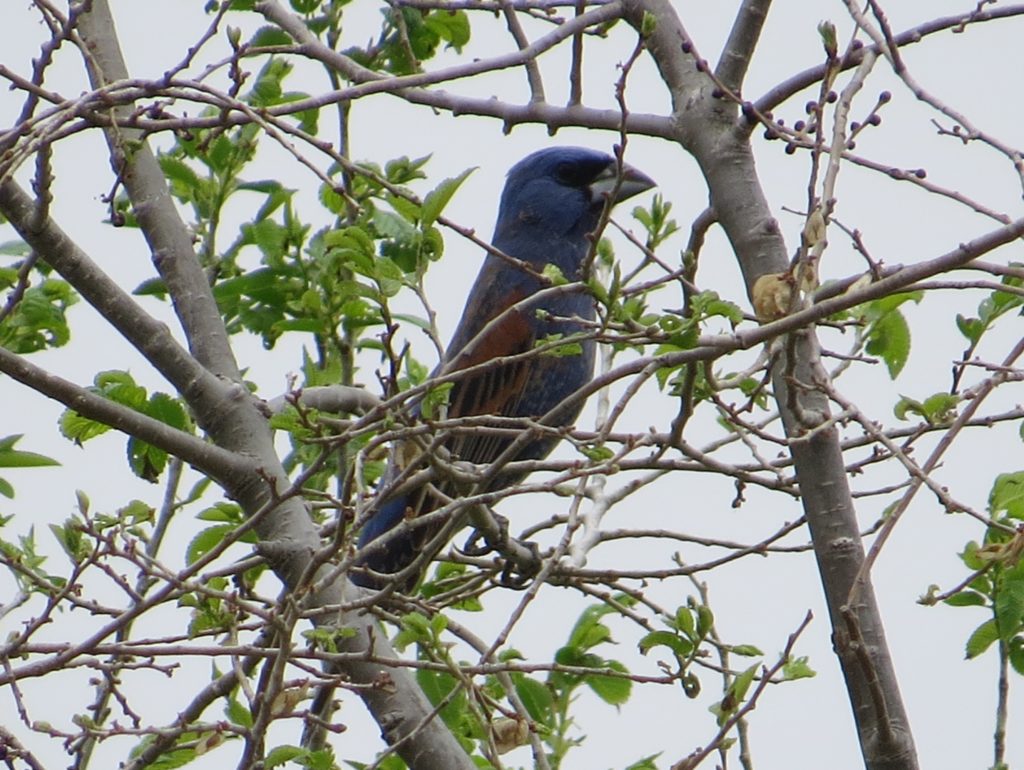 I didn’t have to wait long to get my second county Summer Tanager. County-listing legends, John Hockema and Chris Hockema, found this first-year male at Mt. Tom at Sibley State Park. Incredibly, other observers found a second Summer Tanager with this one.
I didn’t have to wait long to get my second county Summer Tanager. County-listing legends, John Hockema and Chris Hockema, found this first-year male at Mt. Tom at Sibley State Park. Incredibly, other observers found a second Summer Tanager with this one.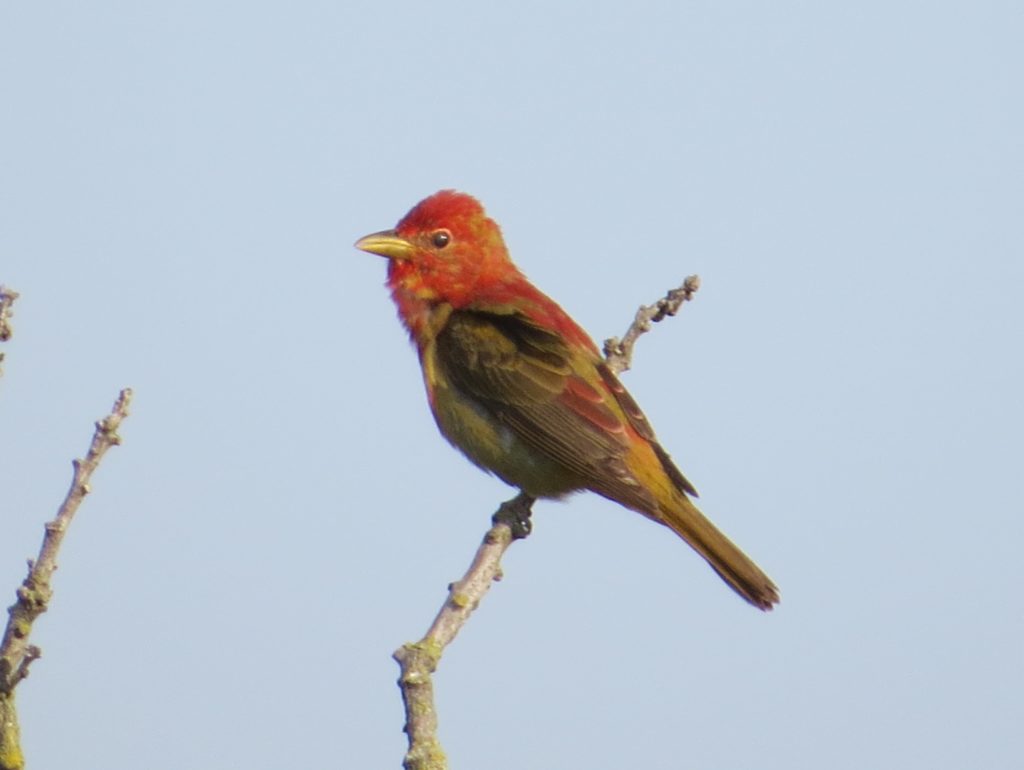 The Hockema Bros. followed this up immediately with another incredible find at Mt. Tom–my second county Eastern Towhee.
The Hockema Bros. followed this up immediately with another incredible find at Mt. Tom–my second county Eastern Towhee.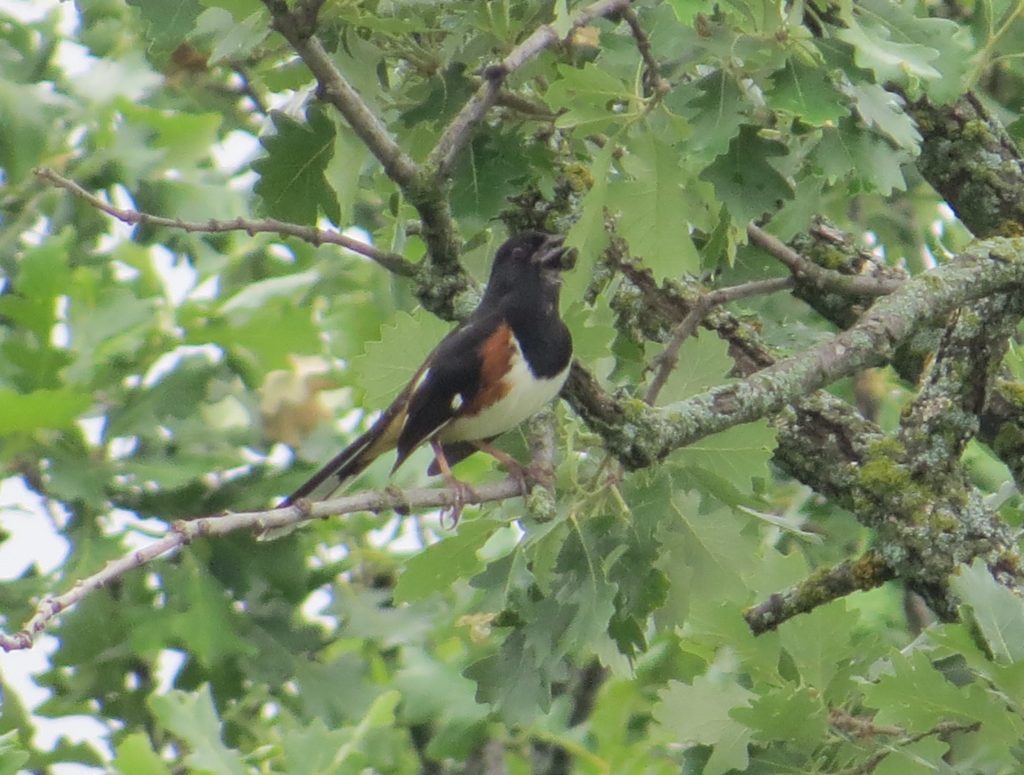 Continuing this list of Seconds was my second county observation and first county visual of a Yellow-billed Cuckoo in Randy’s magical yard.
Continuing this list of Seconds was my second county observation and first county visual of a Yellow-billed Cuckoo in Randy’s magical yard.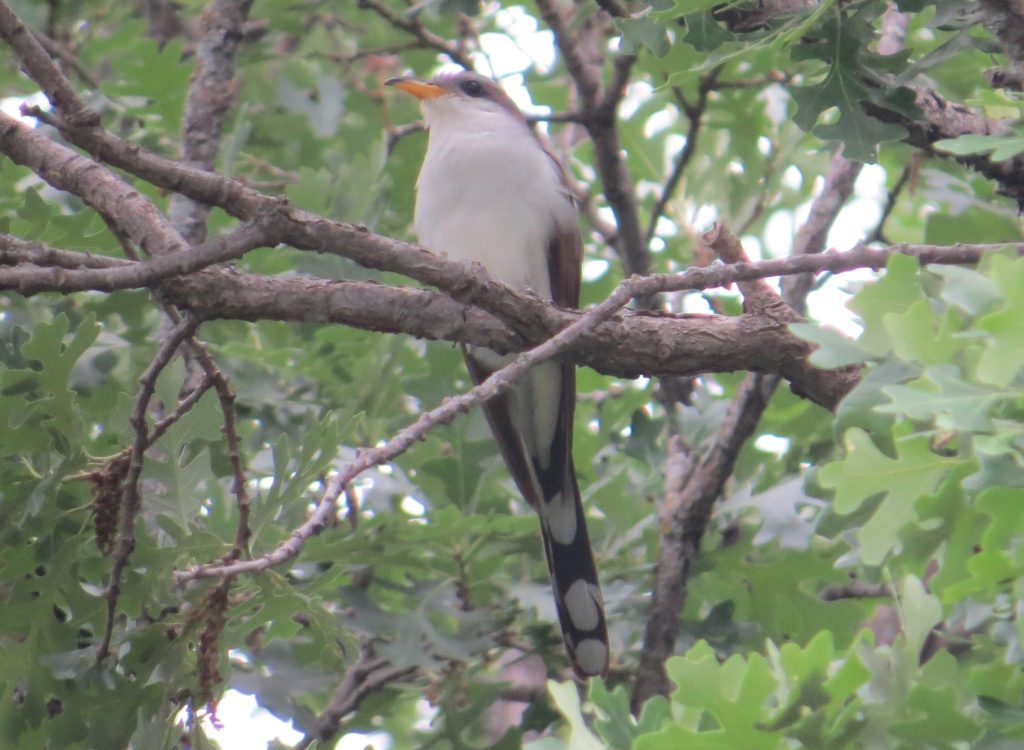 This Hudsonian Godwit was my fourth observation of this species in the county, but this was only my second time seeing one in breeding plumage.
This Hudsonian Godwit was my fourth observation of this species in the county, but this was only my second time seeing one in breeding plumage.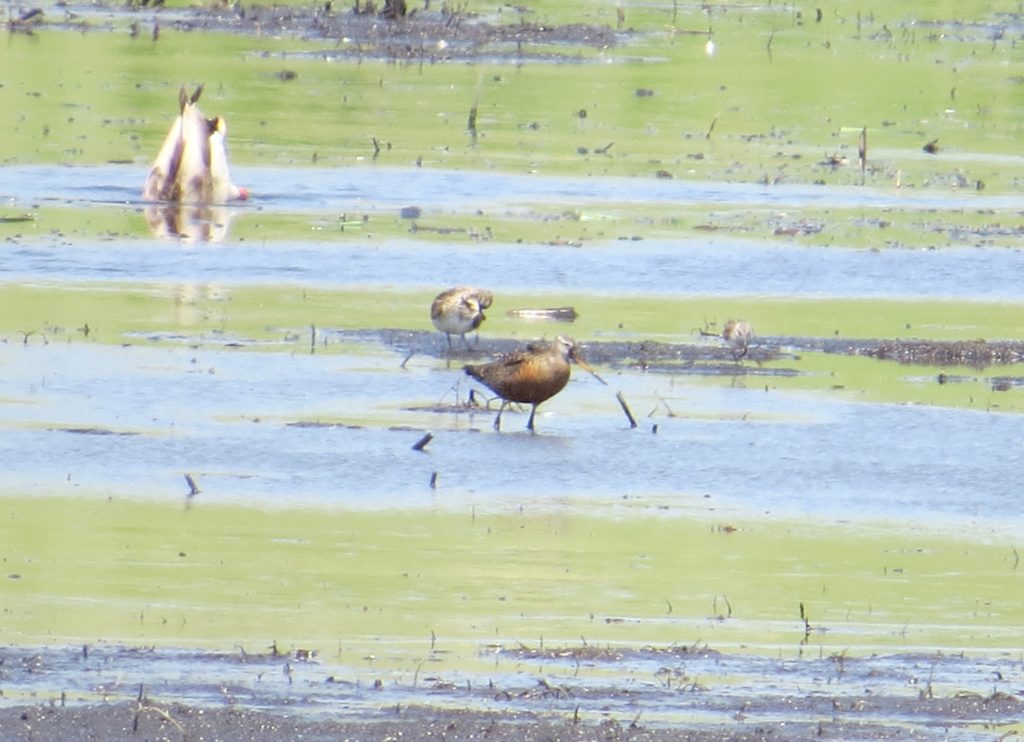 Birding locally this spring has been absolutely incredible and proof that you really don’t have to go far to find great things. Other fun finds on the road to 200 and beyond included Least Bitterns, Eastern Meadowlarks, Lark Sparrows, a Cerulean Warbler, and more. Even the new yard has had some great action with Common Nighthawks circling over, Purple Finches stopping by the feeders, and a Wood Thrush waking me up one morning with its serenade.
Birding locally this spring has been absolutely incredible and proof that you really don’t have to go far to find great things. Other fun finds on the road to 200 and beyond included Least Bitterns, Eastern Meadowlarks, Lark Sparrows, a Cerulean Warbler, and more. Even the new yard has had some great action with Common Nighthawks circling over, Purple Finches stopping by the feeders, and a Wood Thrush waking me up one morning with its serenade.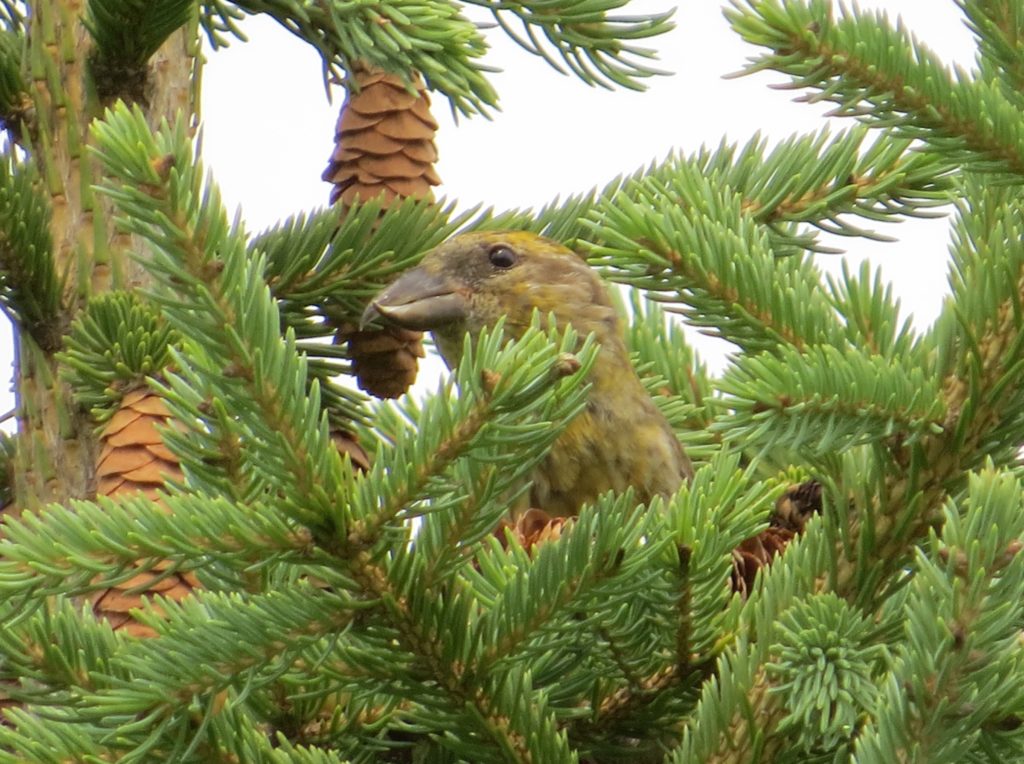 The Red Crossbill irruption was/is nothing short of incredible. This was my first sighting of many just within our county alone. I had several personal finds of this species in the following months, including finding a flock while driving highway speeds and a flyover flock while walking out to my mailbox!
The Red Crossbill irruption was/is nothing short of incredible. This was my first sighting of many just within our county alone. I had several personal finds of this species in the following months, including finding a flock while driving highway speeds and a flyover flock while walking out to my mailbox!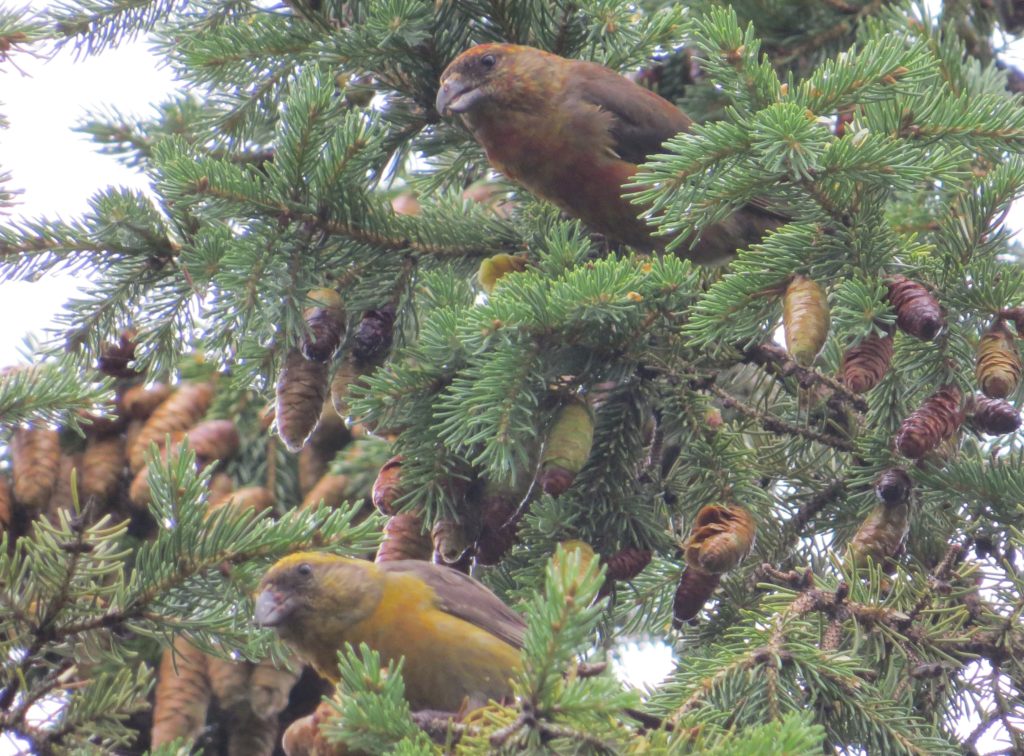 This next picture shows a Red Crossbill that I was disappointed to find this past October. I was actually looking for the other regular Minnesota Crossbill species which was also showing signs of irrupting. Birding can be strange. Somehow I ended up with the much more difficult Crossbill species before getting the supposedly much easier White-winged variety. I was the only serious Kandi birder who still lacked this species. I desperately wanted to see wing bars on this bird.
This next picture shows a Red Crossbill that I was disappointed to find this past October. I was actually looking for the other regular Minnesota Crossbill species which was also showing signs of irrupting. Birding can be strange. Somehow I ended up with the much more difficult Crossbill species before getting the supposedly much easier White-winged variety. I was the only serious Kandi birder who still lacked this species. I desperately wanted to see wing bars on this bird.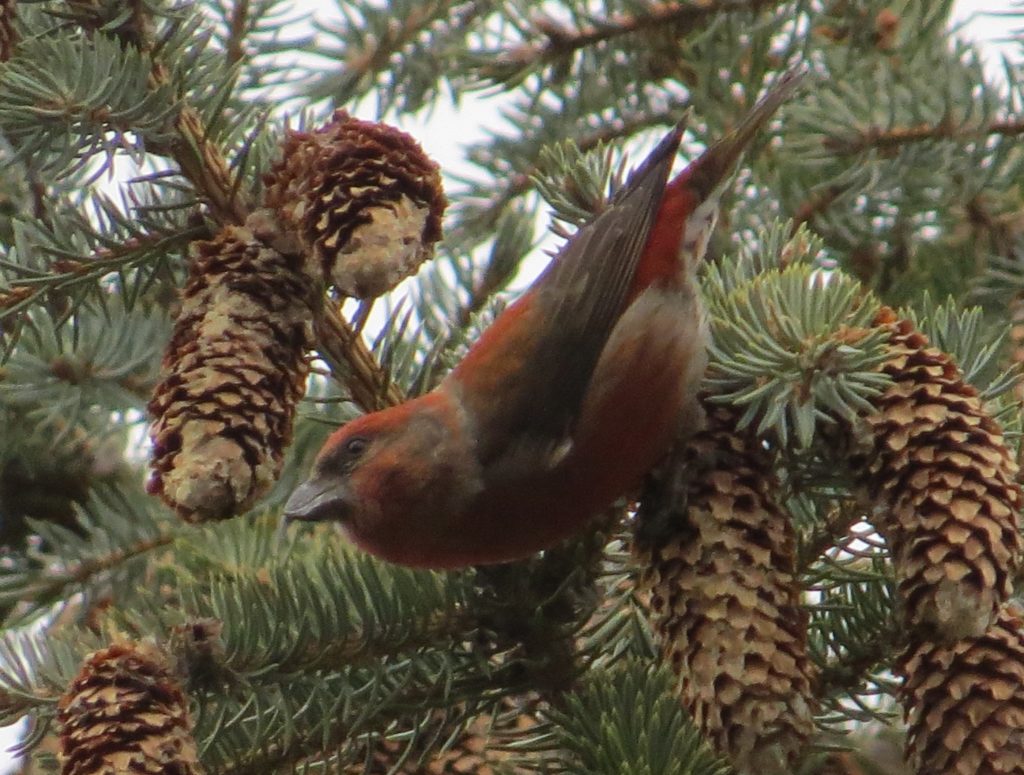
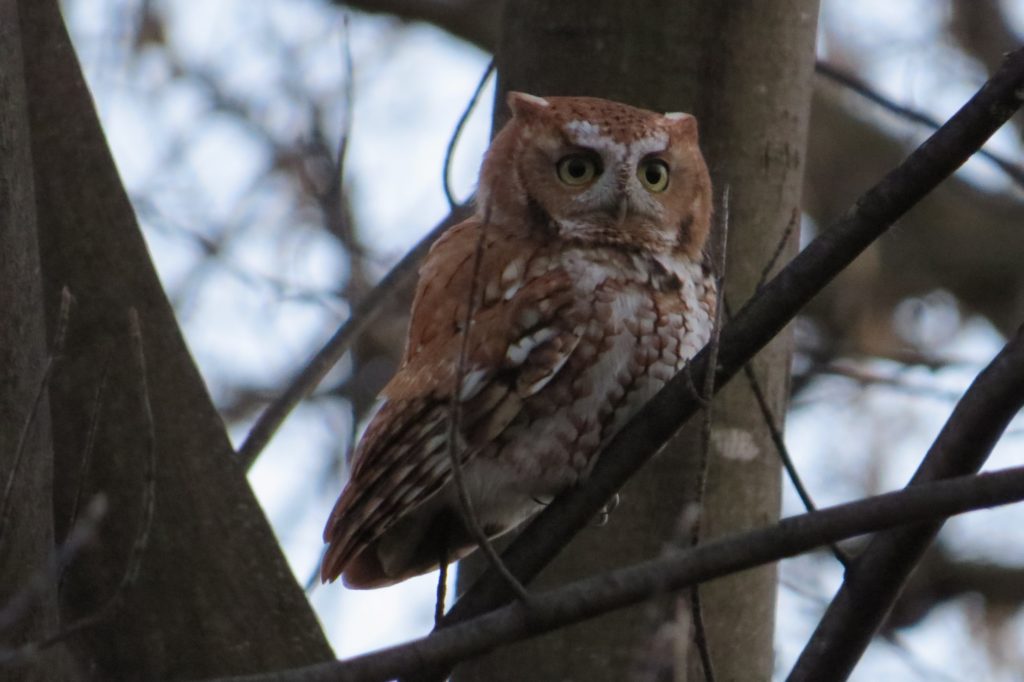
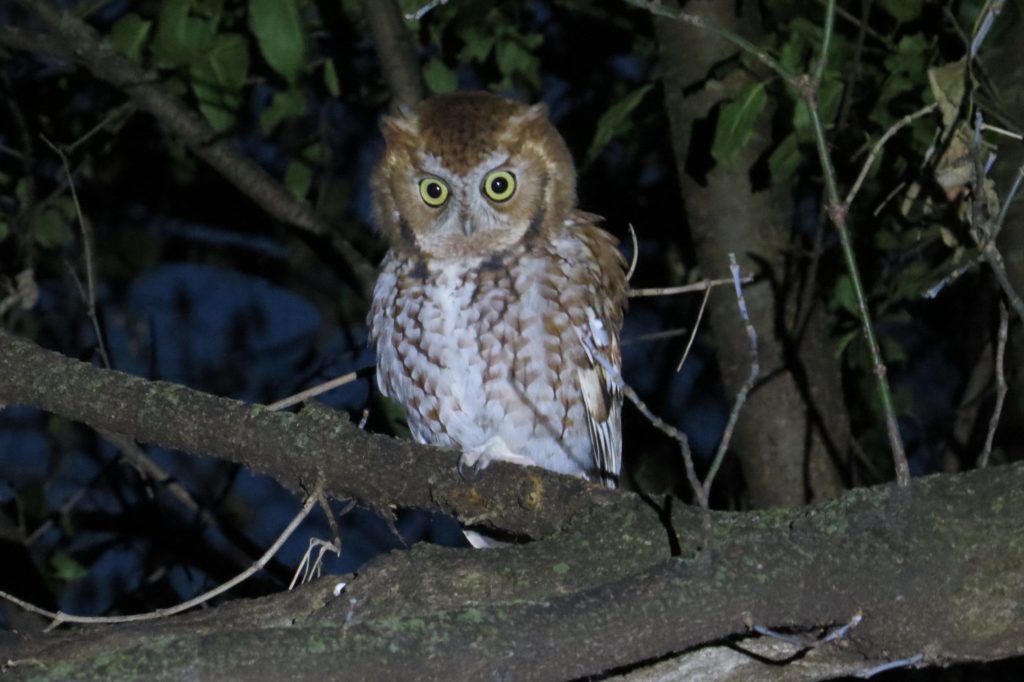
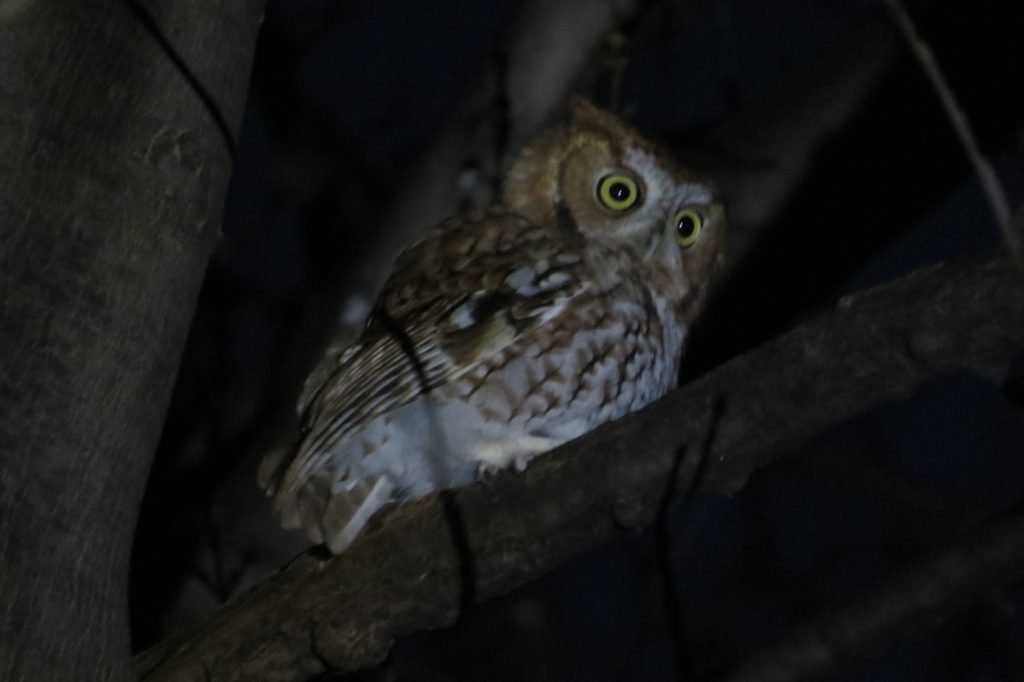
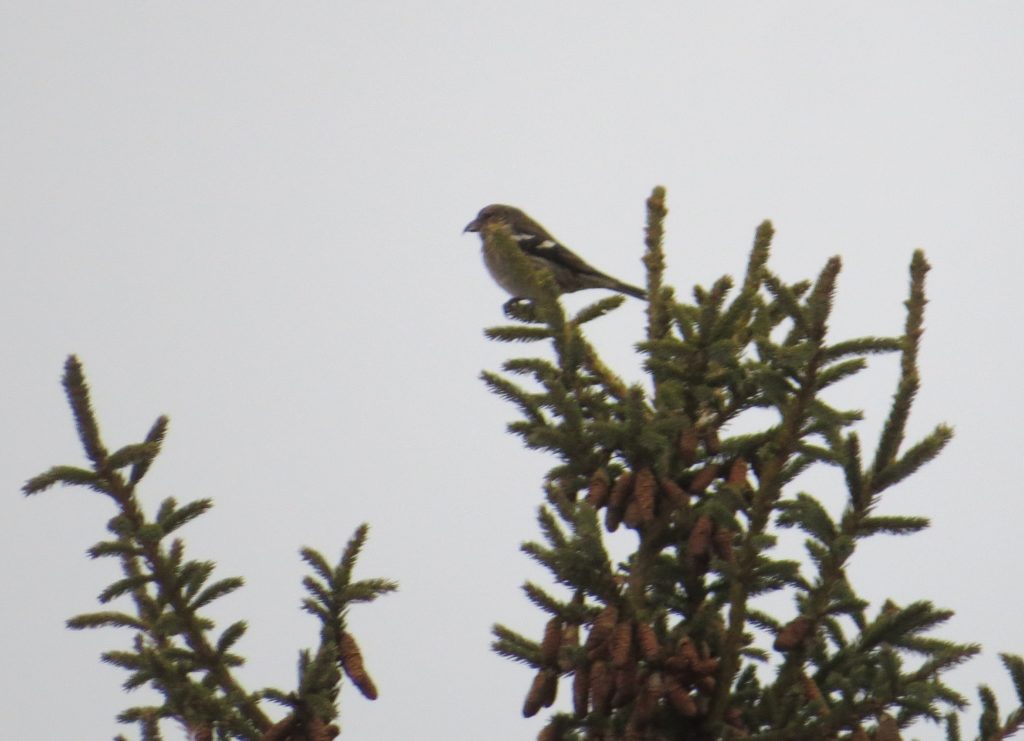 Getting this DIY county lifer was incredibly efficient and felt amazing. I enjoyed these birds for about a half hour before heading home. It was one less bird for which I was on my own.
Getting this DIY county lifer was incredibly efficient and felt amazing. I enjoyed these birds for about a half hour before heading home. It was one less bird for which I was on my own.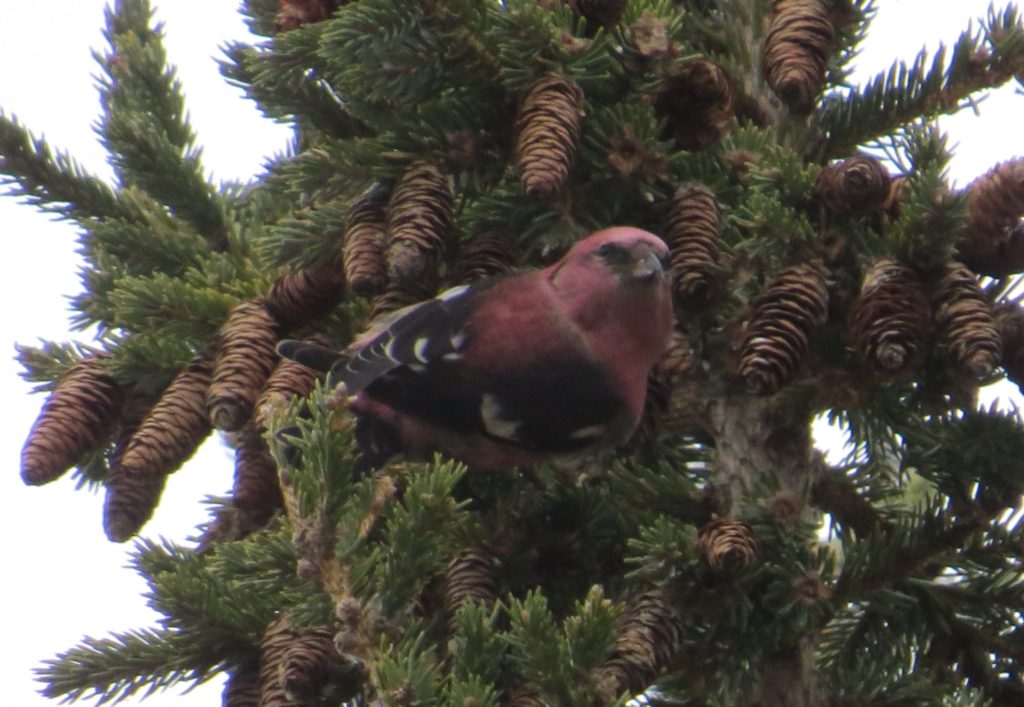
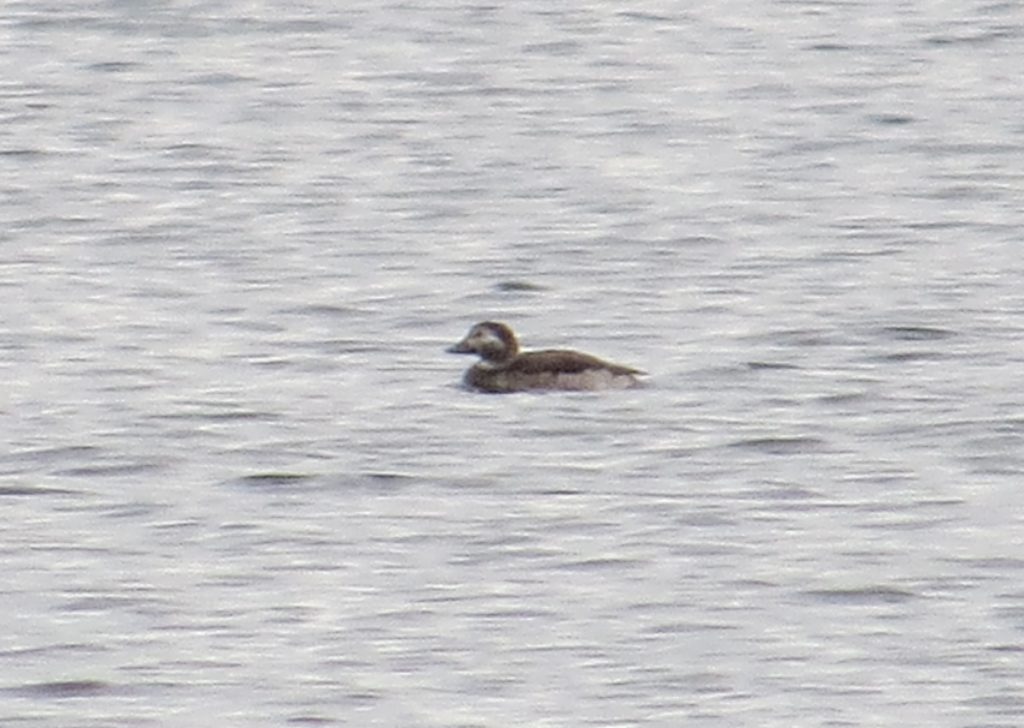
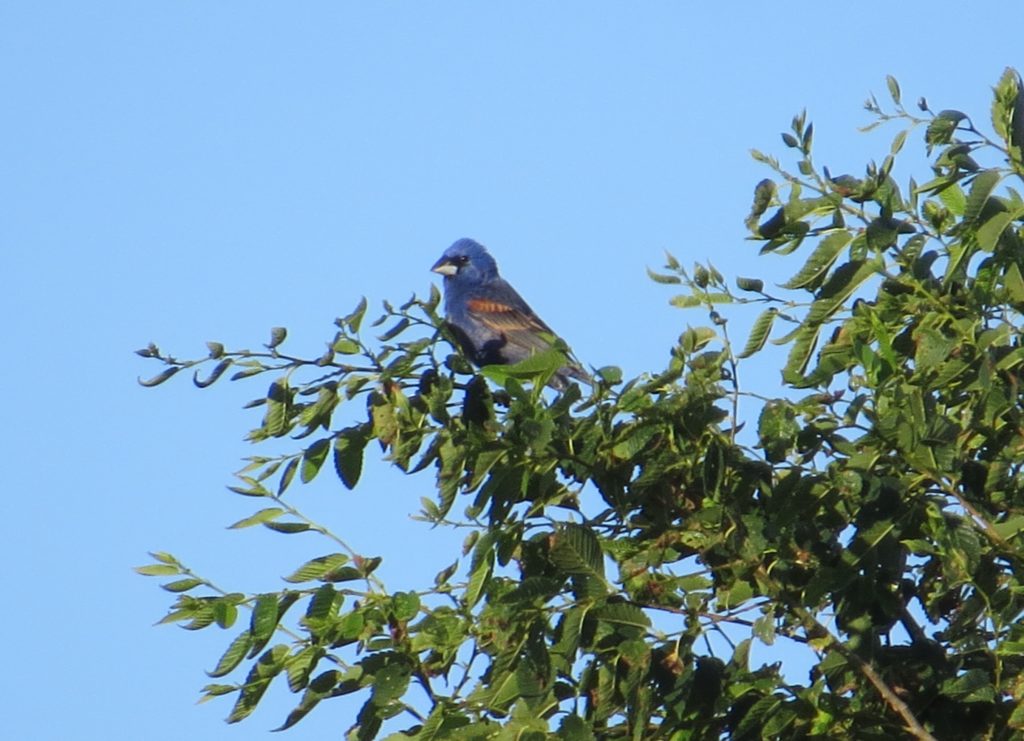 This second fellow was the quiet type. In fact, I stopped at this abandoned pit and didn’t see or hear a Blue Grosbeak. Playing a tape certainly couldn’t hurt in this situation. I’m glad I did because this bird materialized out of nowhere in an instant.
This second fellow was the quiet type. In fact, I stopped at this abandoned pit and didn’t see or hear a Blue Grosbeak. Playing a tape certainly couldn’t hurt in this situation. I’m glad I did because this bird materialized out of nowhere in an instant.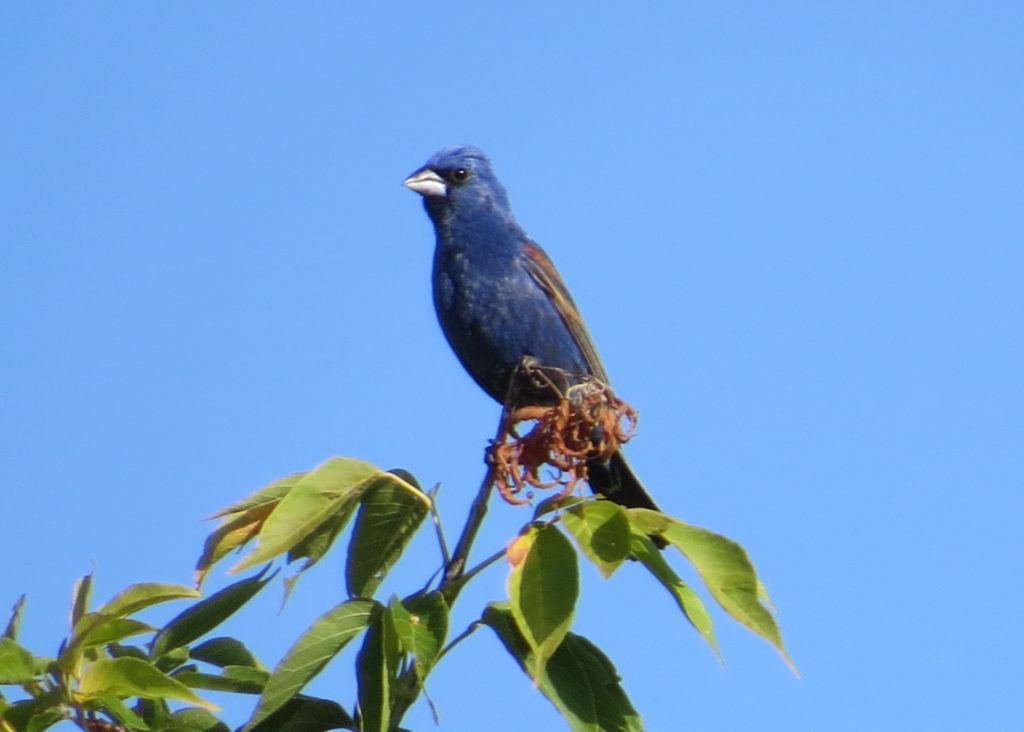 These were hollow victories. I wanted one in Kandiyohi in the worst way, especially as county first records fell in county after county: Anoka, Hennepin, and Washington. While I was happy the Blue Grosbeak was continuing to expand its range, I also kept wondering when it would be our turn. Always the bridesmaid. The Washington find really amplified these feelings. Pete Nichols and Ben Douglas set out to find themselves a county record BLGR and succeeded…minutes into their first attempt. I was both super proud and super jealous of these friends.
These were hollow victories. I wanted one in Kandiyohi in the worst way, especially as county first records fell in county after county: Anoka, Hennepin, and Washington. While I was happy the Blue Grosbeak was continuing to expand its range, I also kept wondering when it would be our turn. Always the bridesmaid. The Washington find really amplified these feelings. Pete Nichols and Ben Douglas set out to find themselves a county record BLGR and succeeded…minutes into their first attempt. I was both super proud and super jealous of these friends.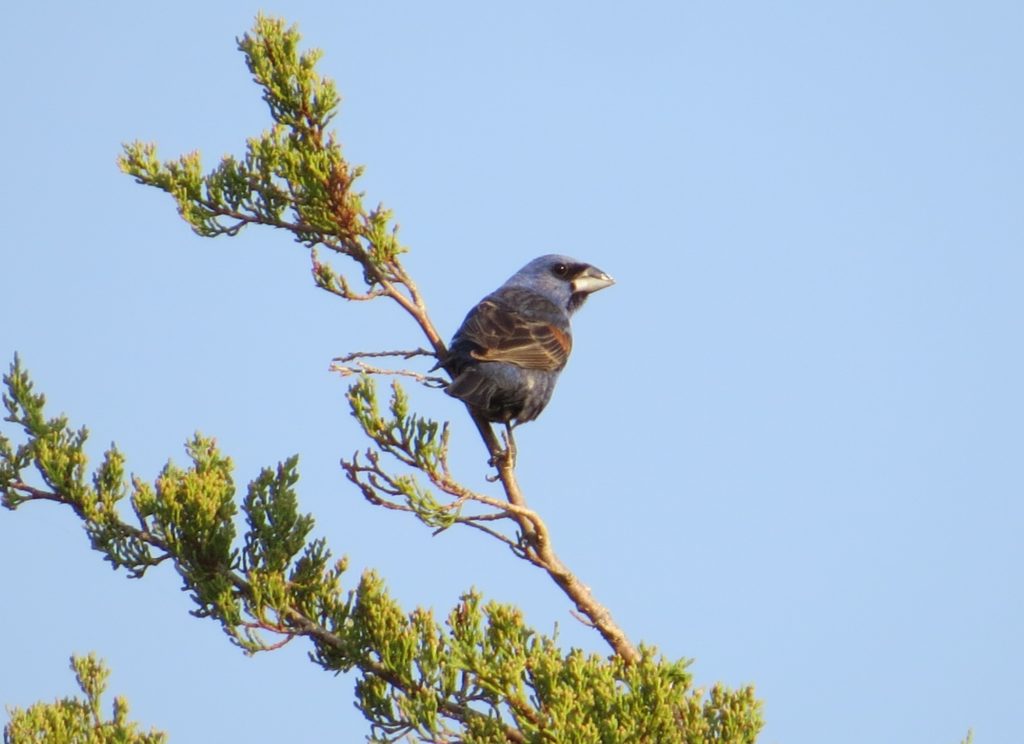
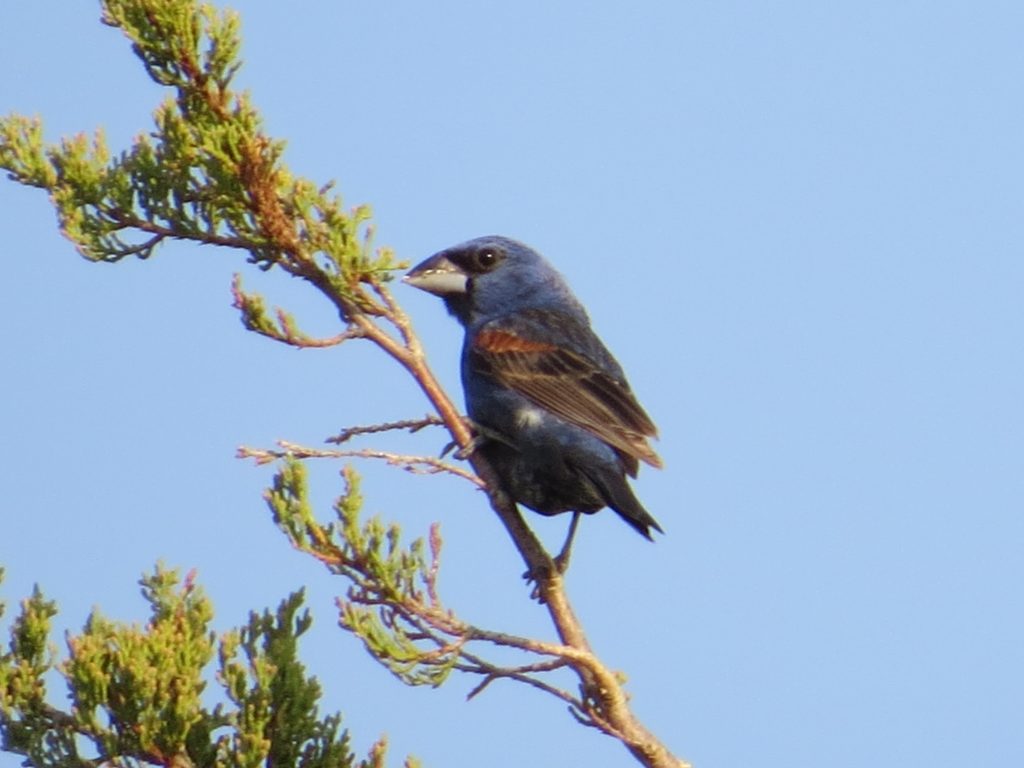 After hanging out there to our wild delight, it changed perches and hung out for a solid 10-15 minutes not moving. I don’t know that I’ve ever seen a Blue Grosbeak this confiding. This was the first time I had shared a county bird with long-time Kandi veterans, Randy and Ron. Giddiness abounded.
After hanging out there to our wild delight, it changed perches and hung out for a solid 10-15 minutes not moving. I don’t know that I’ve ever seen a Blue Grosbeak this confiding. This was the first time I had shared a county bird with long-time Kandi veterans, Randy and Ron. Giddiness abounded.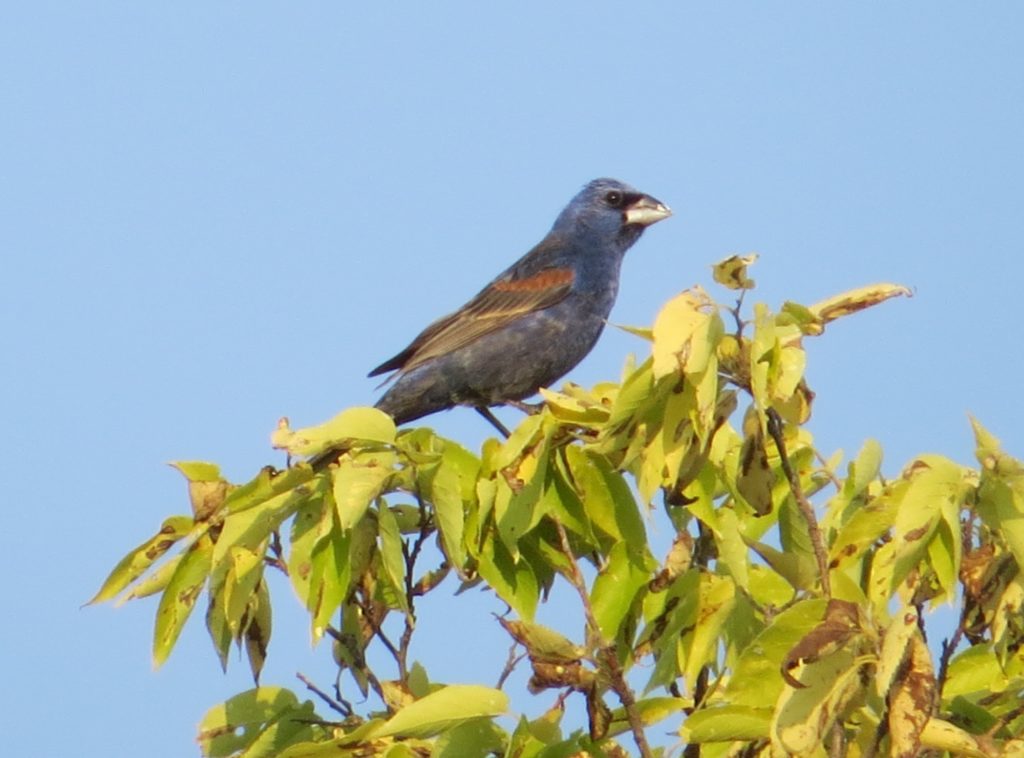
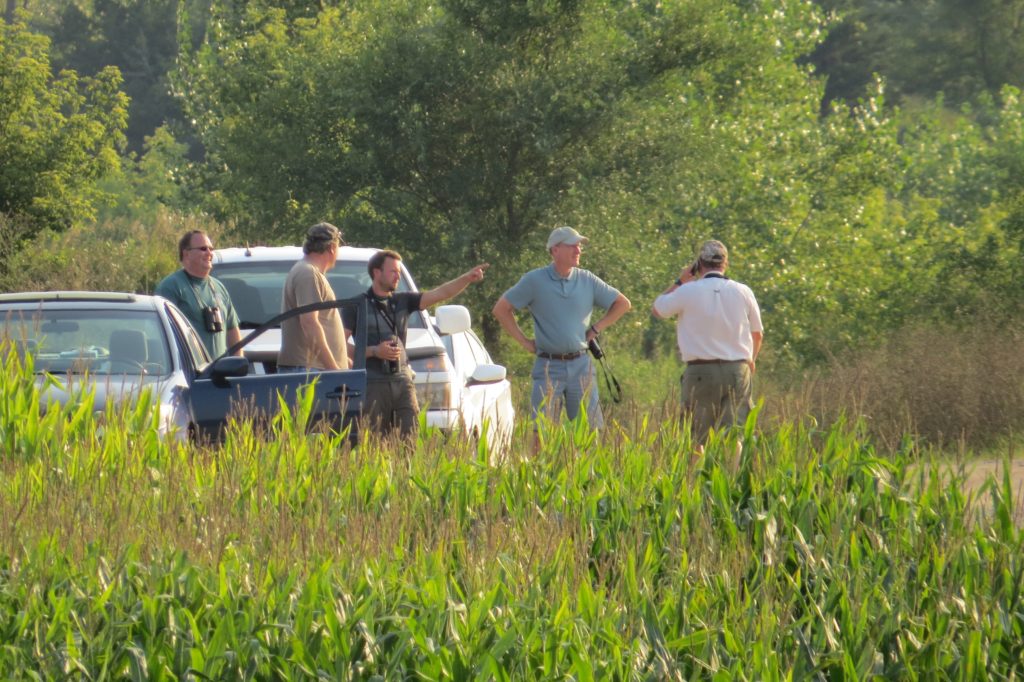
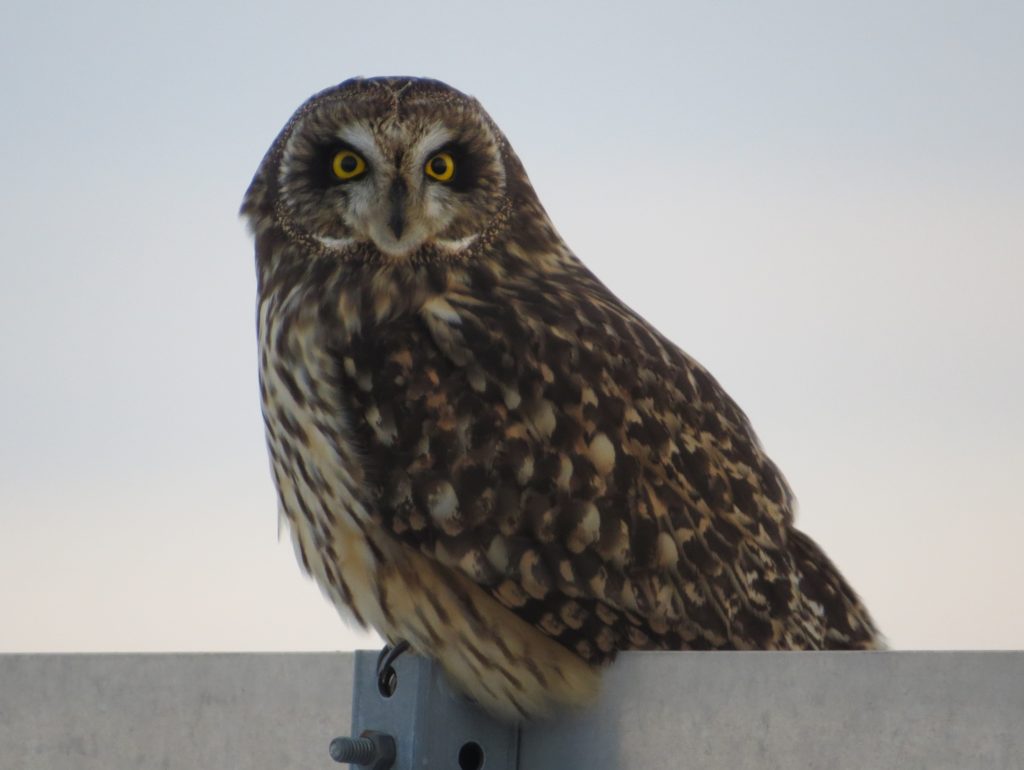
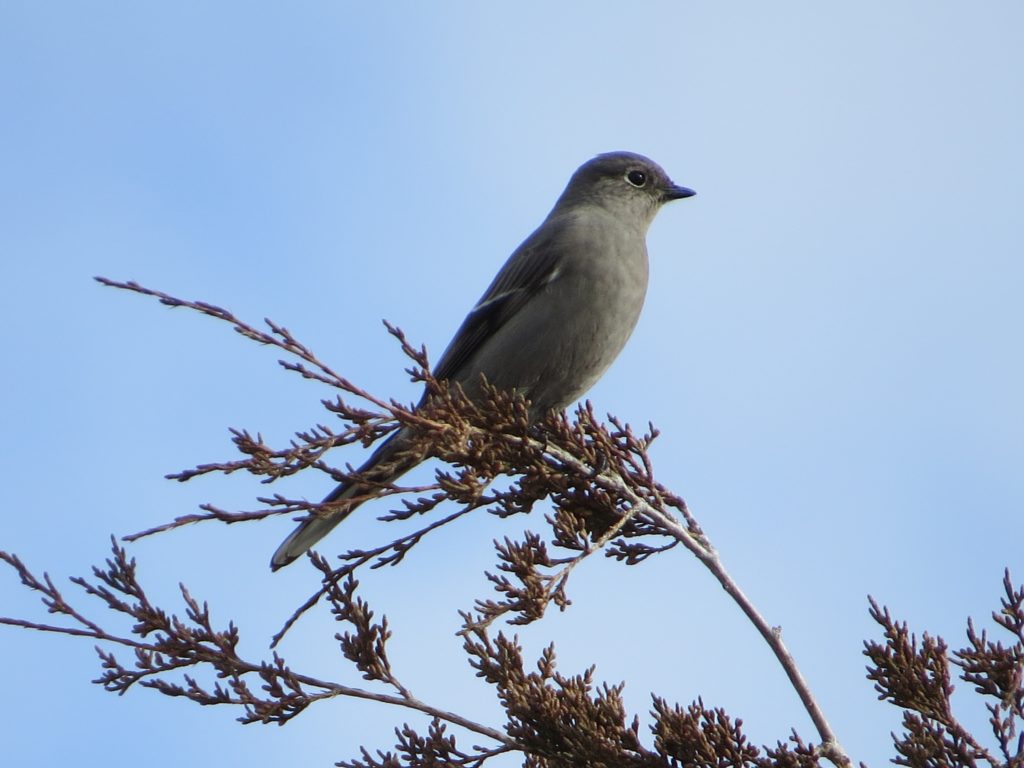
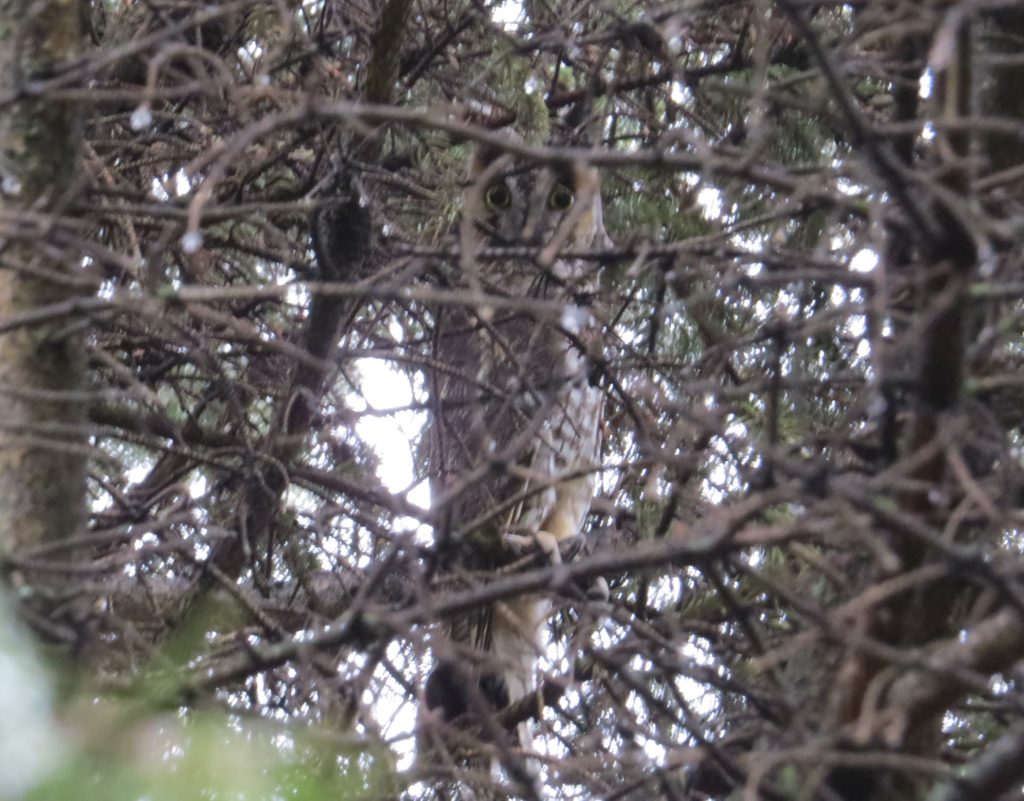
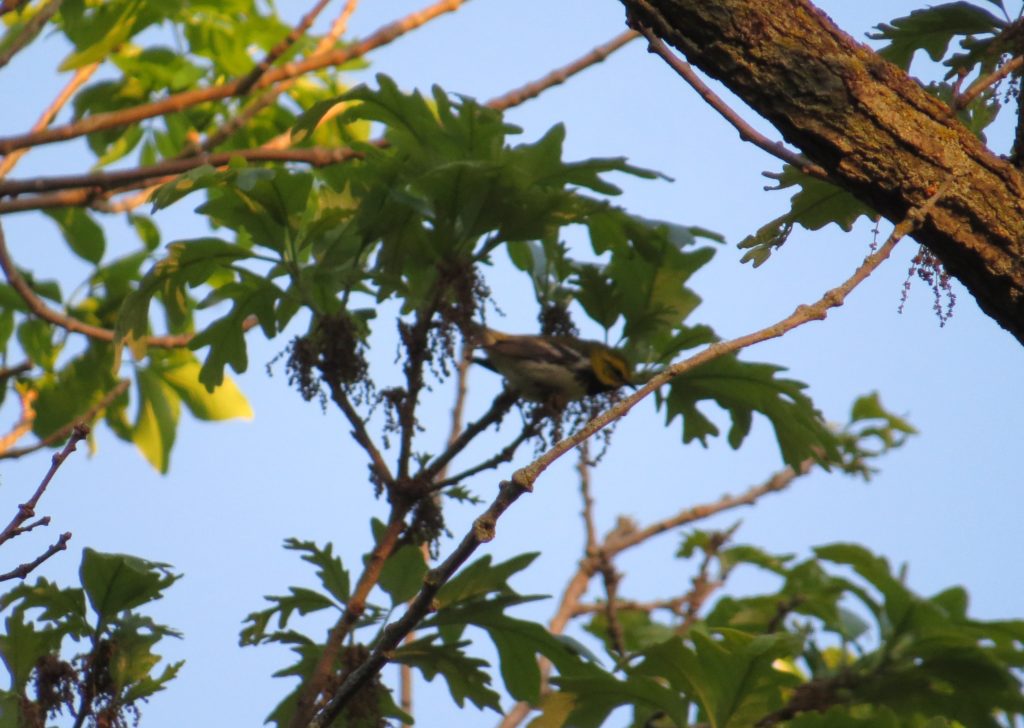
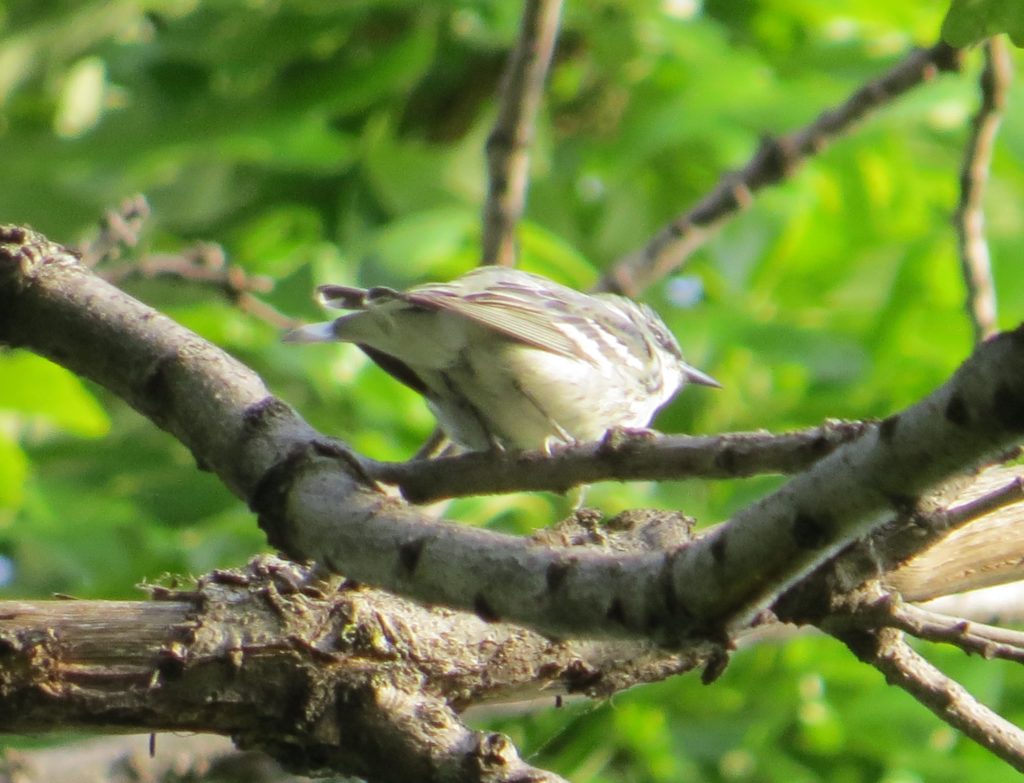
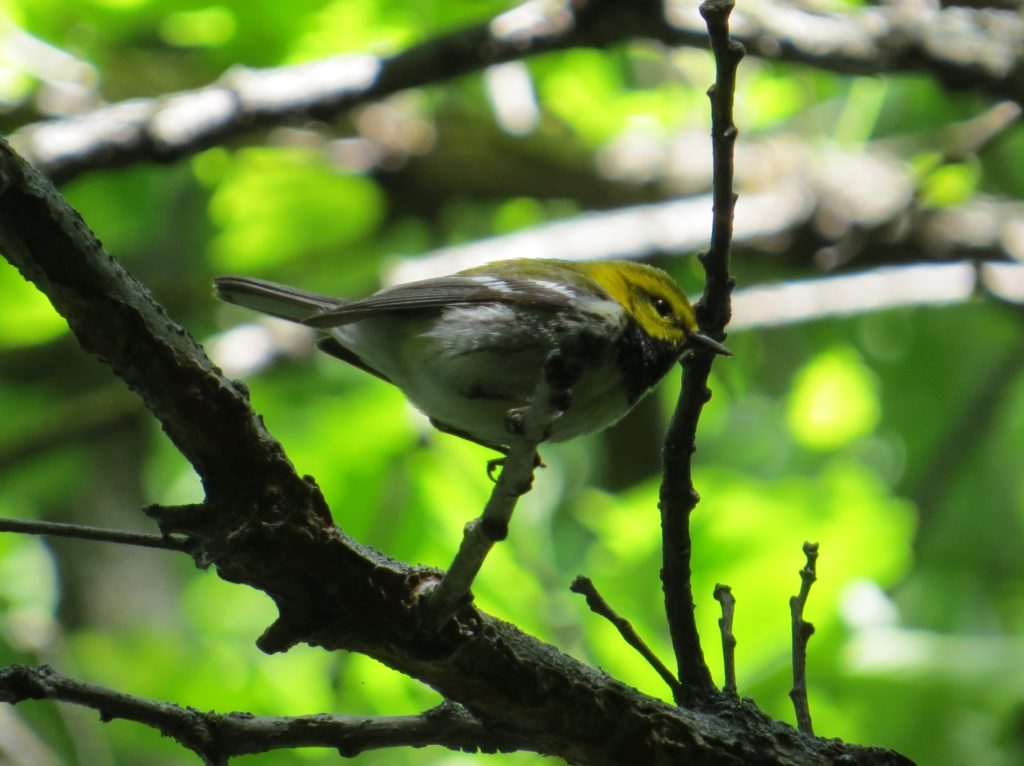
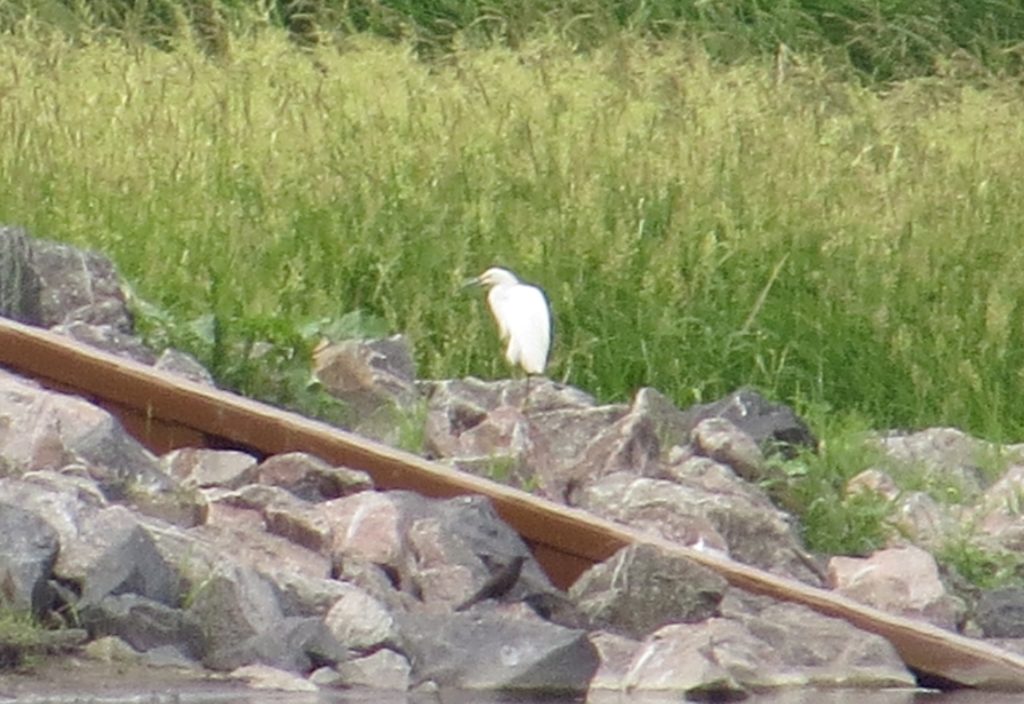 An Egret vs. Egret pic is always a nice assurance for an ID of such an important bird.
An Egret vs. Egret pic is always a nice assurance for an ID of such an important bird.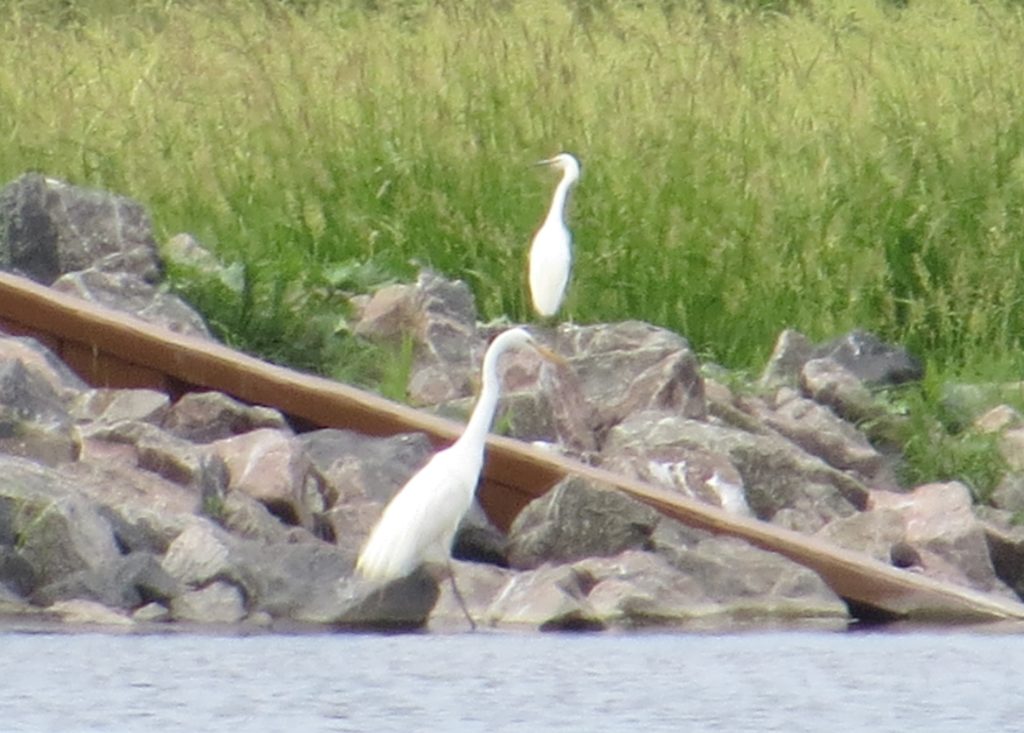 I was now tied with Bob. Wow. Some people get excited over reaching round-number milestones, like this 250, but not me. I wanted a crooked number. I wanted that #251 in the worst way. While my motivation in the beginning was to pass Bob’s number, my motivation was now about me meeting what I once thought was an unattainable goal. More than anything I wanted to do what my mind had declared an impossibility or at least a far-fetched possibility way back in December. I wanted that 7th bird in the worst way, more than a lifer even. And it was only June. I had averaged one new county bird for each month in 2017, and I still had 6 months left to get just one new county bird.
I was now tied with Bob. Wow. Some people get excited over reaching round-number milestones, like this 250, but not me. I wanted a crooked number. I wanted that #251 in the worst way. While my motivation in the beginning was to pass Bob’s number, my motivation was now about me meeting what I once thought was an unattainable goal. More than anything I wanted to do what my mind had declared an impossibility or at least a far-fetched possibility way back in December. I wanted that 7th bird in the worst way, more than a lifer even. And it was only June. I had averaged one new county bird for each month in 2017, and I still had 6 months left to get just one new county bird.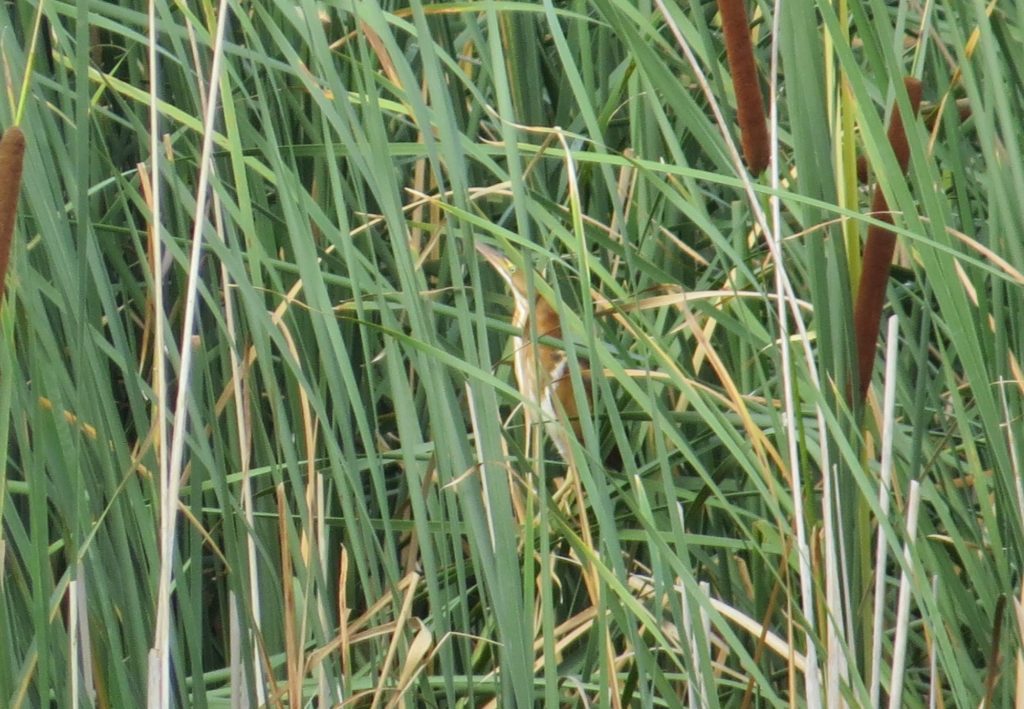
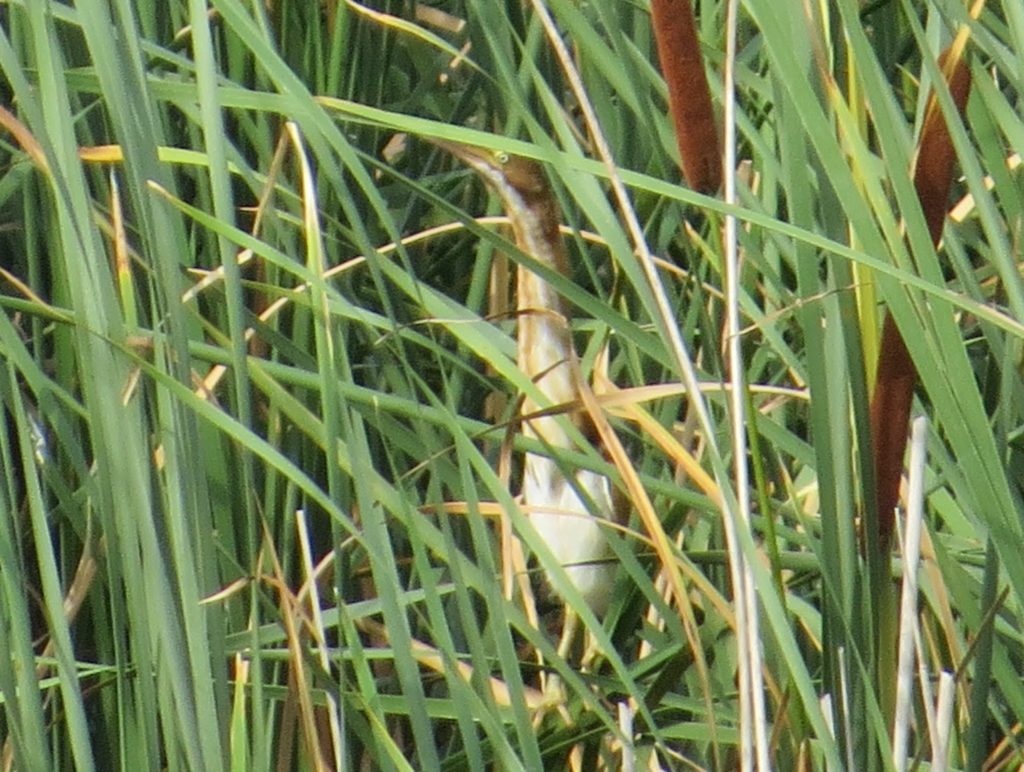 The Bittern was a fun find, but I wanted to see those Gallinules bad. I did hear one of the adults vocalize at one point, so it was officially notched. Since it was such a monumental bird, though, I really wanted to see it. Finally, patience paid off as I spotted one of the babies.
The Bittern was a fun find, but I wanted to see those Gallinules bad. I did hear one of the adults vocalize at one point, so it was officially notched. Since it was such a monumental bird, though, I really wanted to see it. Finally, patience paid off as I spotted one of the babies.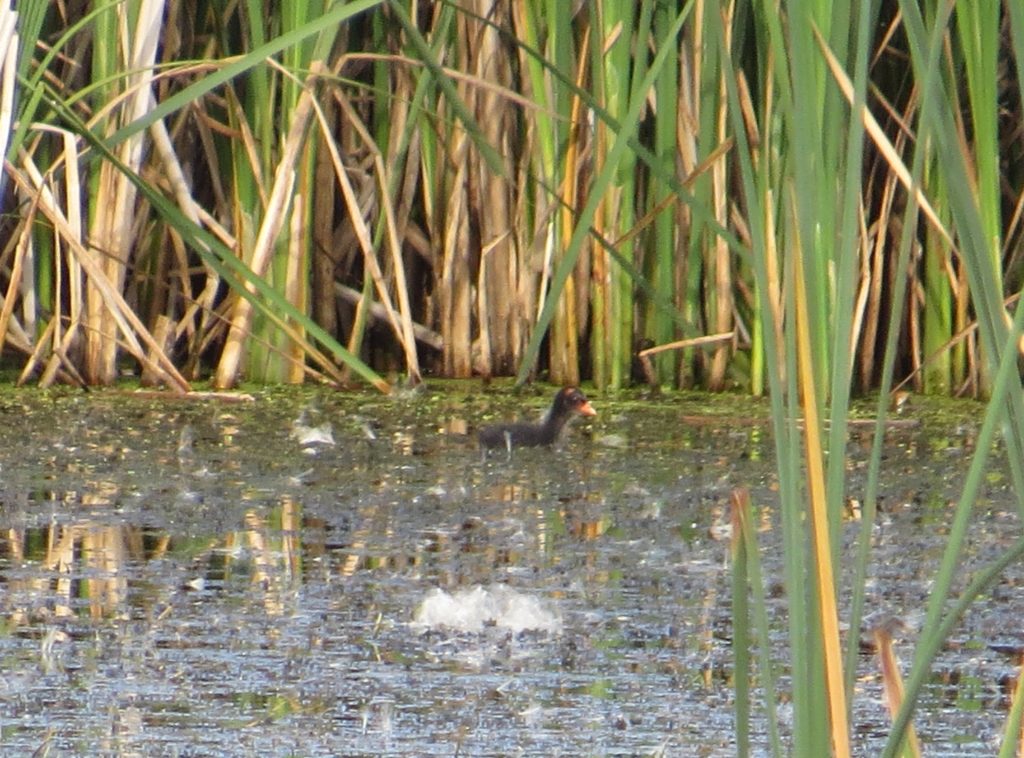 And then I saw two of the babies with one of the parents.
And then I saw two of the babies with one of the parents.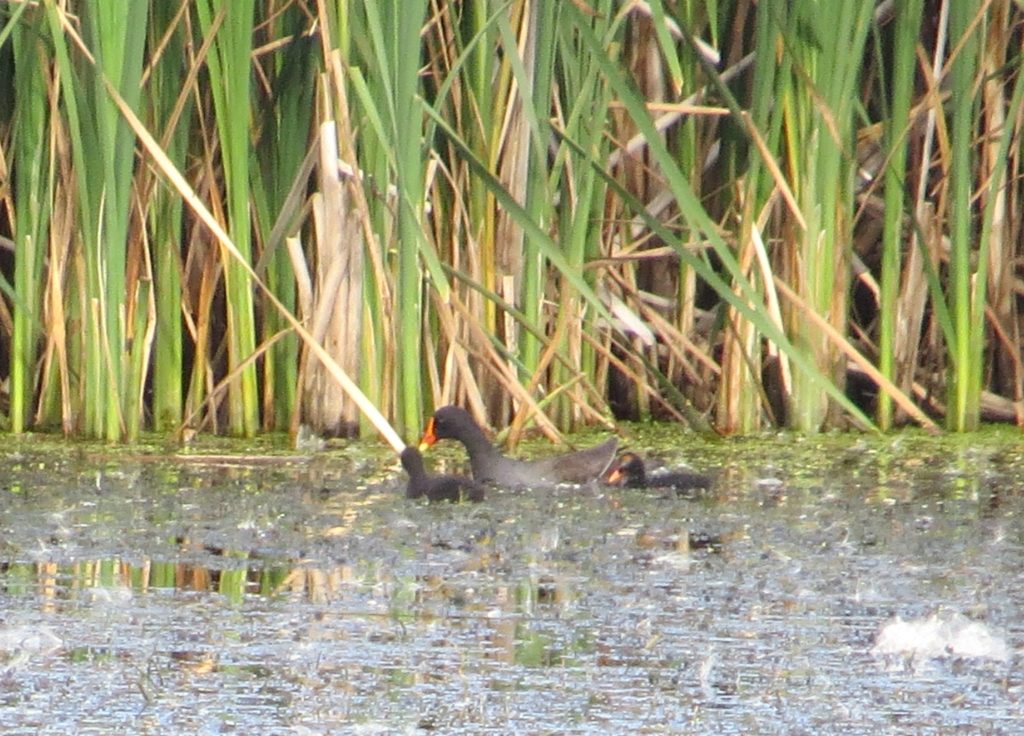 It was finished. I was ecstatic. The impossible had been achieved with a whopping 5 months left on the year. I had made it. Kathleen, if you’re reading, thank you very much for your great find!
It was finished. I was ecstatic. The impossible had been achieved with a whopping 5 months left on the year. I had made it. Kathleen, if you’re reading, thank you very much for your great find!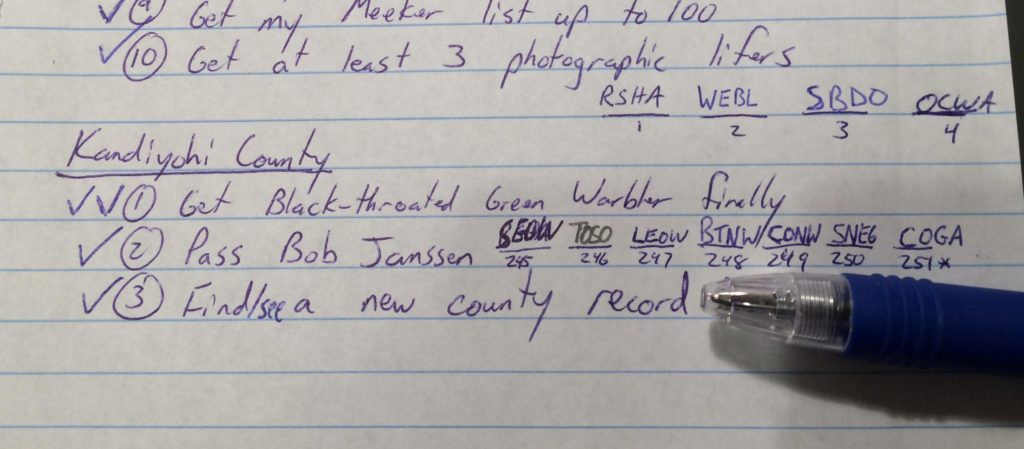
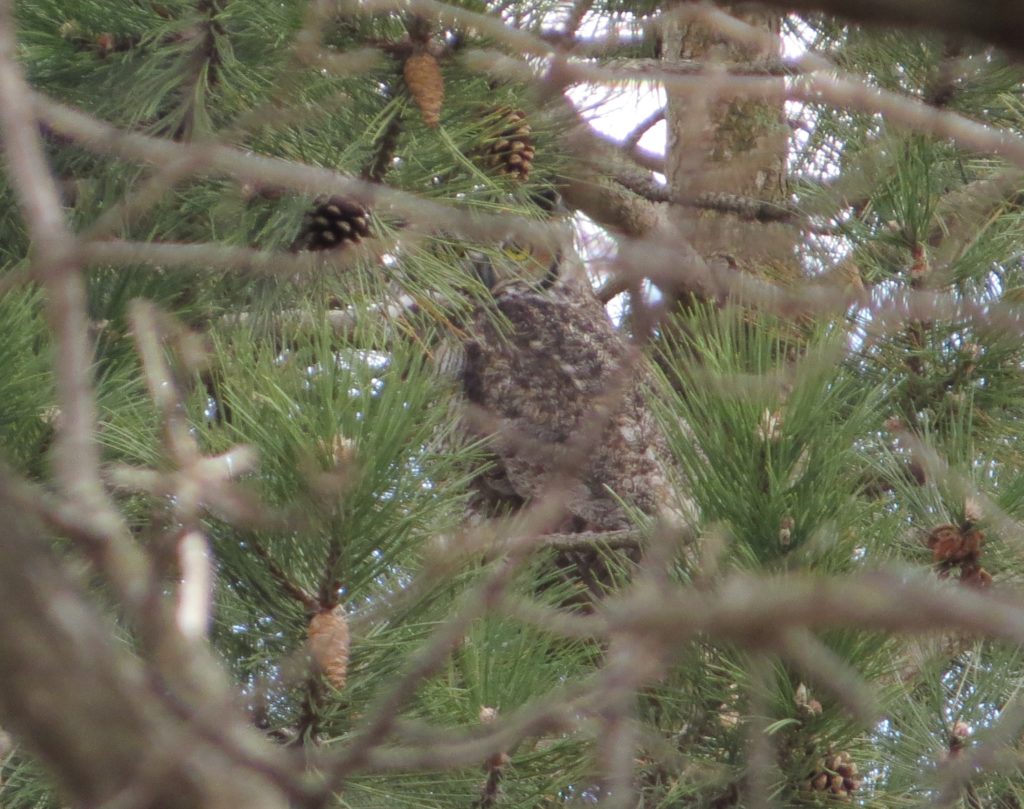 Any Owl sighting makes for a fun outing, even if it’s not post-worthy. But Steve’s lifer LEOWs were post-worthy, and something about his post caught my attention: he had seen his Owls in a plantation of Spruces. I had associated LEOWs mostly with Cedars. A connection was made in my brain, and I asked Steve how the site he was at compared with a plantation of Spruces in our county that we have unsuccessfully Owled a few times. Steve said they were very similar. Plans were made immediately to check it out the next day. It had been over a year since we last tried for Long-eareds at that spot. It was time to hit it again.
Any Owl sighting makes for a fun outing, even if it’s not post-worthy. But Steve’s lifer LEOWs were post-worthy, and something about his post caught my attention: he had seen his Owls in a plantation of Spruces. I had associated LEOWs mostly with Cedars. A connection was made in my brain, and I asked Steve how the site he was at compared with a plantation of Spruces in our county that we have unsuccessfully Owled a few times. Steve said they were very similar. Plans were made immediately to check it out the next day. It had been over a year since we last tried for Long-eareds at that spot. It was time to hit it again.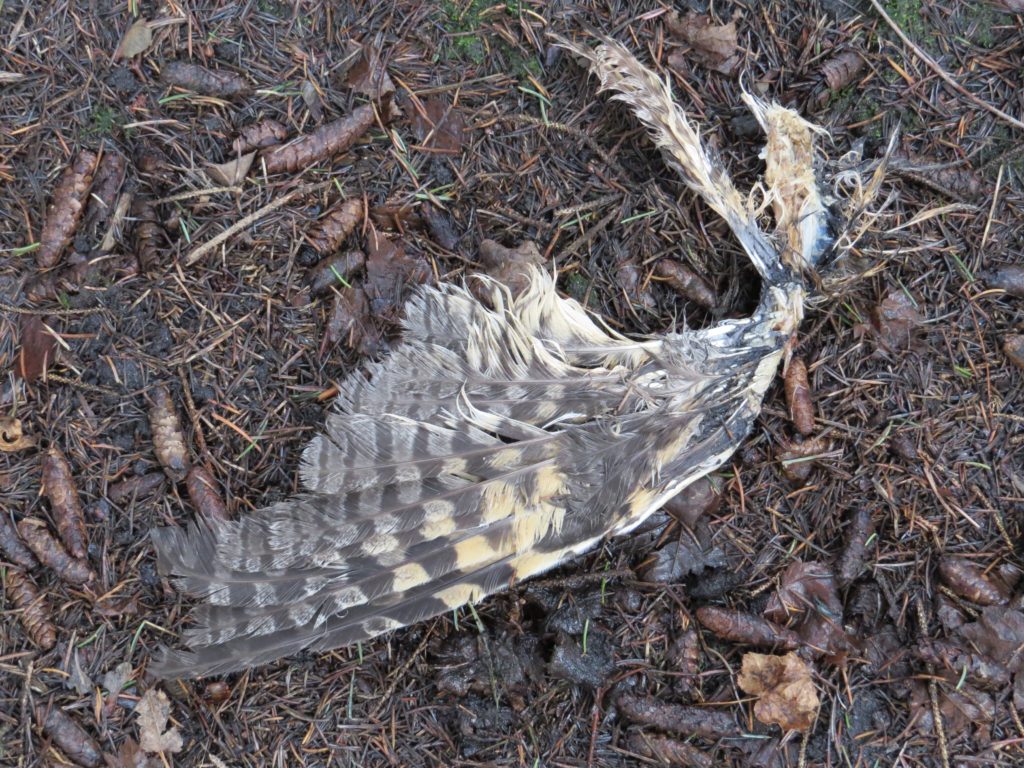 We did flush it a couple more times but eventually decided to move on and give up on seeing it perched. Even still, the victory was immense. Steve said it best when he said it was cool that we did not have to rely on anyone else for this bird. I couldn’t agree more.
We did flush it a couple more times but eventually decided to move on and give up on seeing it perched. Even still, the victory was immense. Steve said it best when he said it was cool that we did not have to rely on anyone else for this bird. I couldn’t agree more.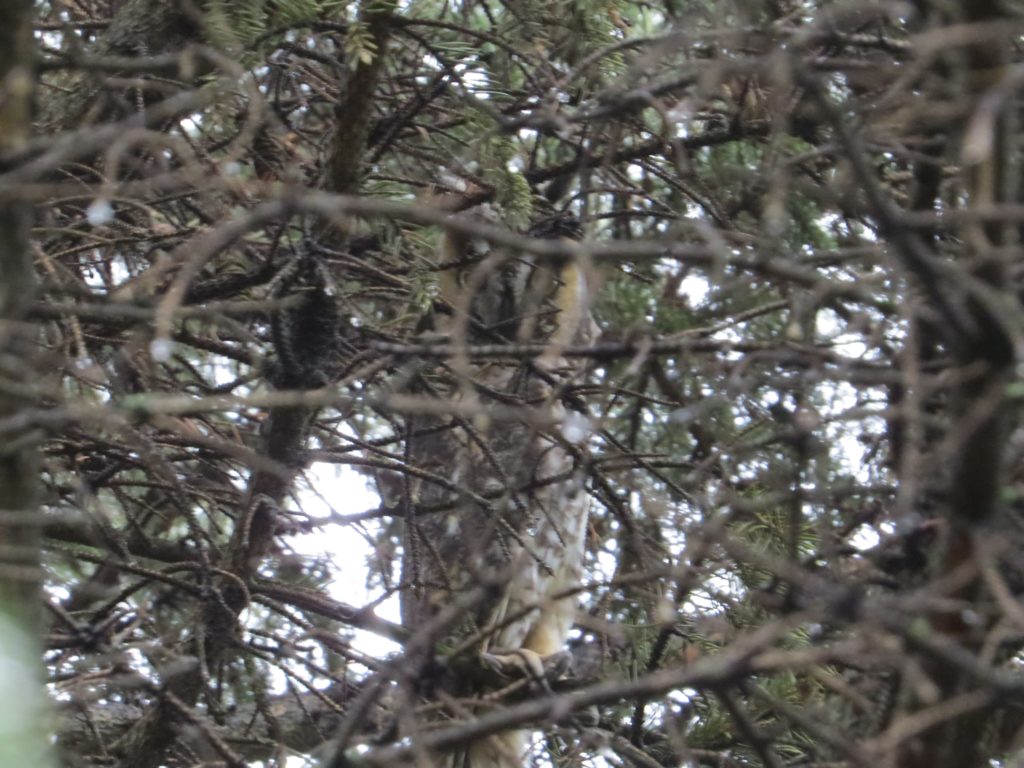 This was the final, definitive proof that Steve and I had seen a Long-eared Owl the day before. And, man, did it feel good.
This was the final, definitive proof that Steve and I had seen a Long-eared Owl the day before. And, man, did it feel good.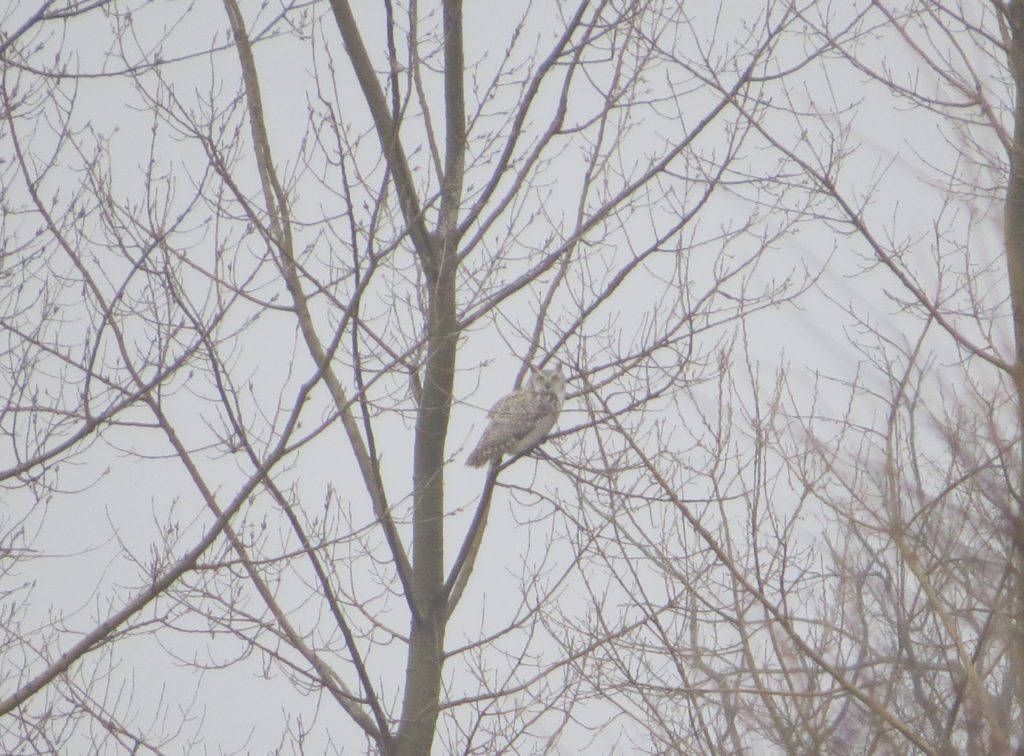 Are the Owl adventures over? With 2 of my 4 wanted Owls knocked off in February already, I think we are just getting started.
Are the Owl adventures over? With 2 of my 4 wanted Owls knocked off in February already, I think we are just getting started.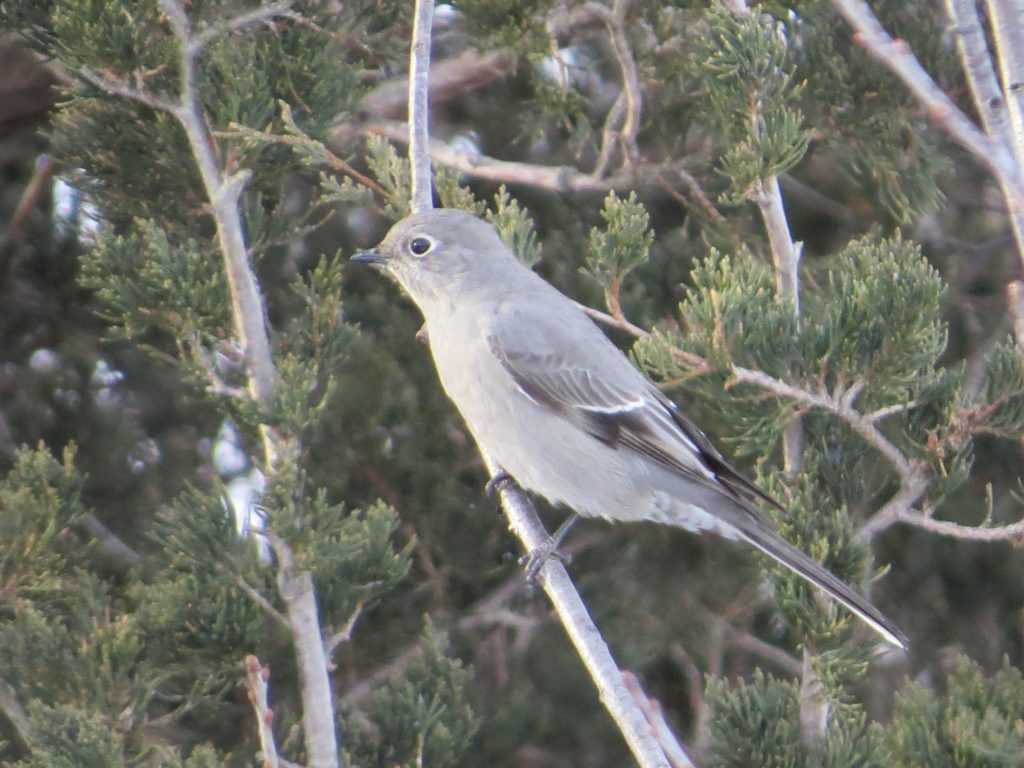 As we enjoyed the bird and expressed jubilation over a very early success, we detected a second Solitaire as well!
As we enjoyed the bird and expressed jubilation over a very early success, we detected a second Solitaire as well! 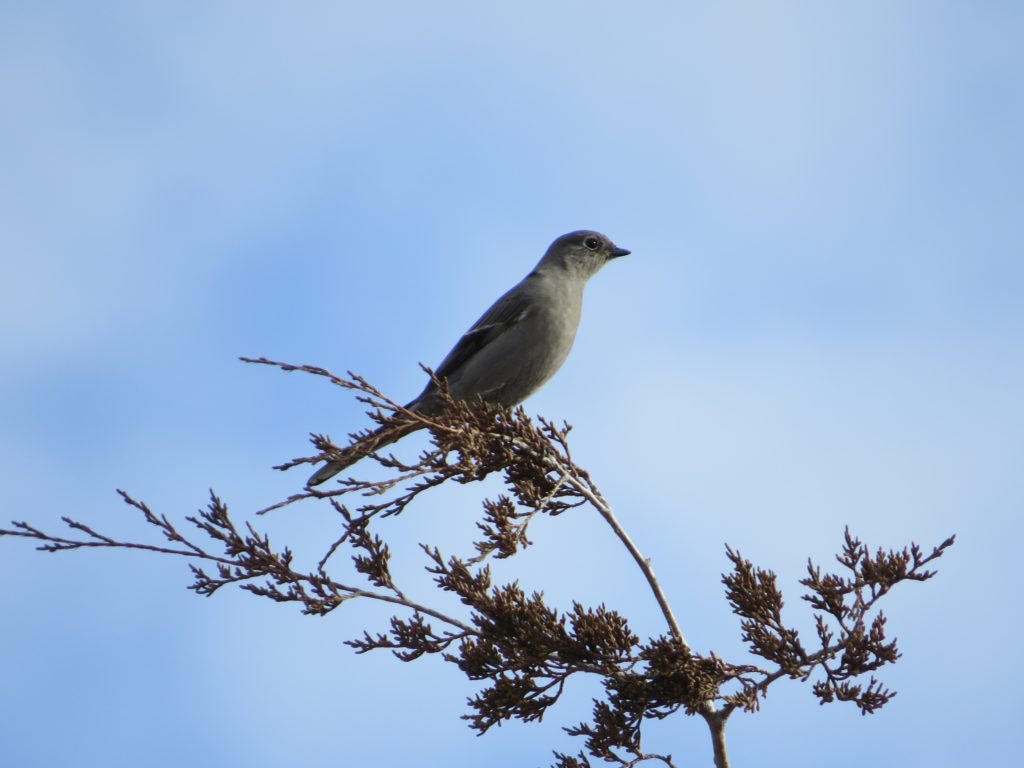
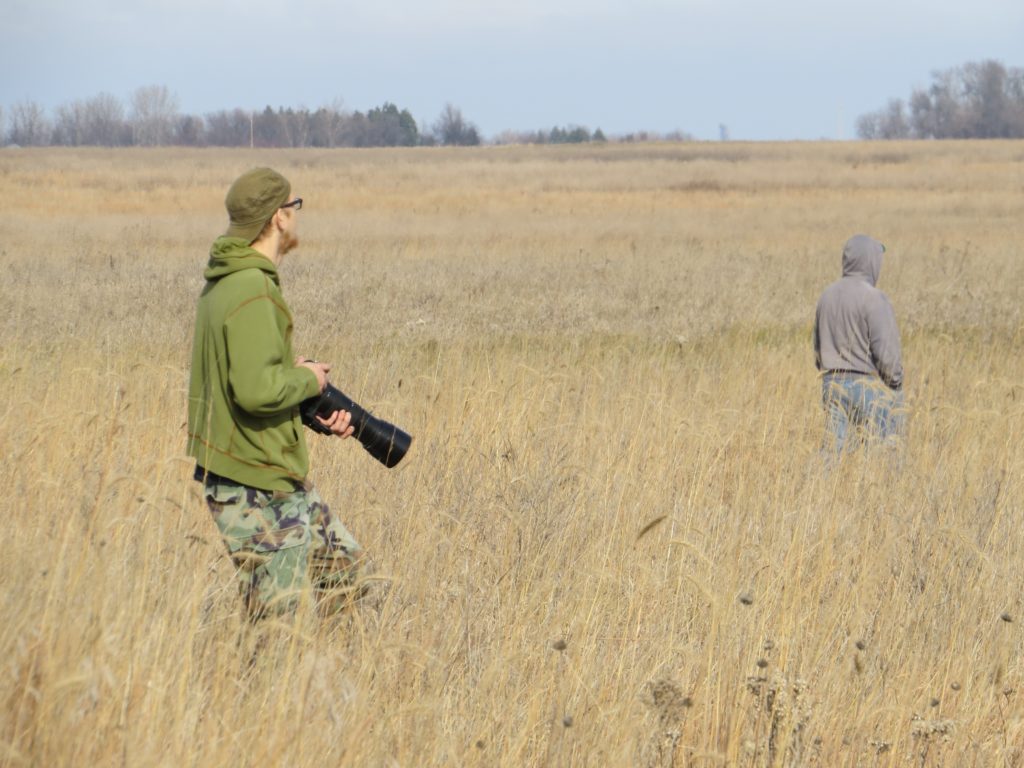 Walking out in this grassland, we were not expecting but were quite delighted to kick up two Short-eared Owls. It’s a pretty good day when a Short-eared Owl is a consolation prize.
Walking out in this grassland, we were not expecting but were quite delighted to kick up two Short-eared Owls. It’s a pretty good day when a Short-eared Owl is a consolation prize.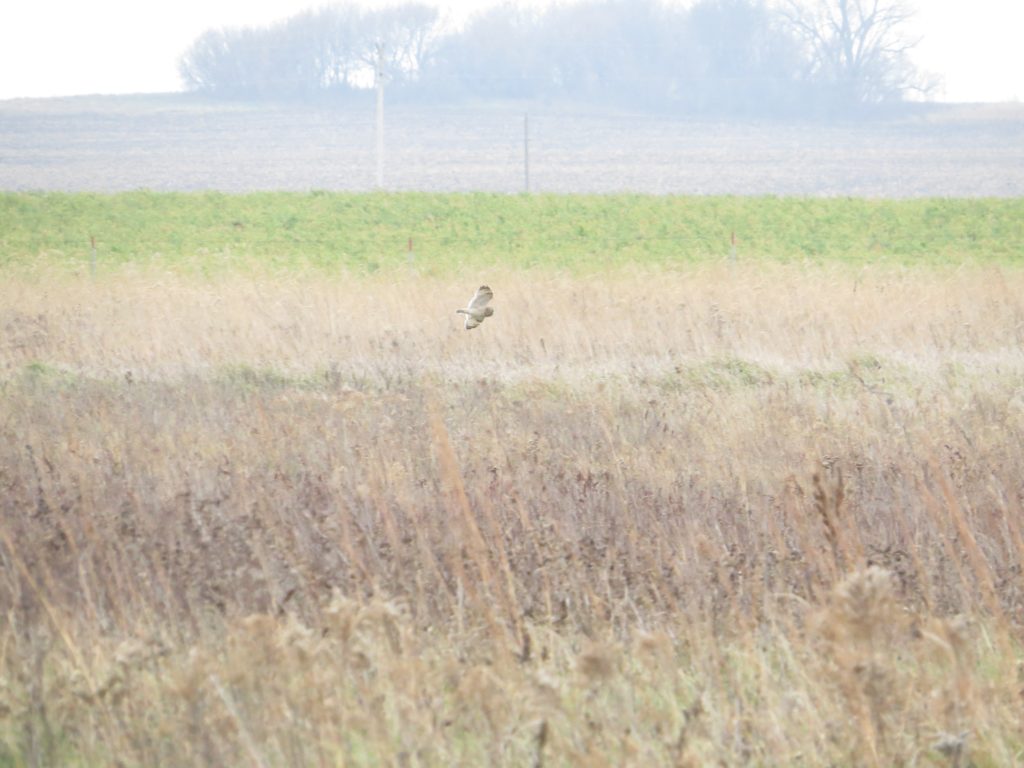
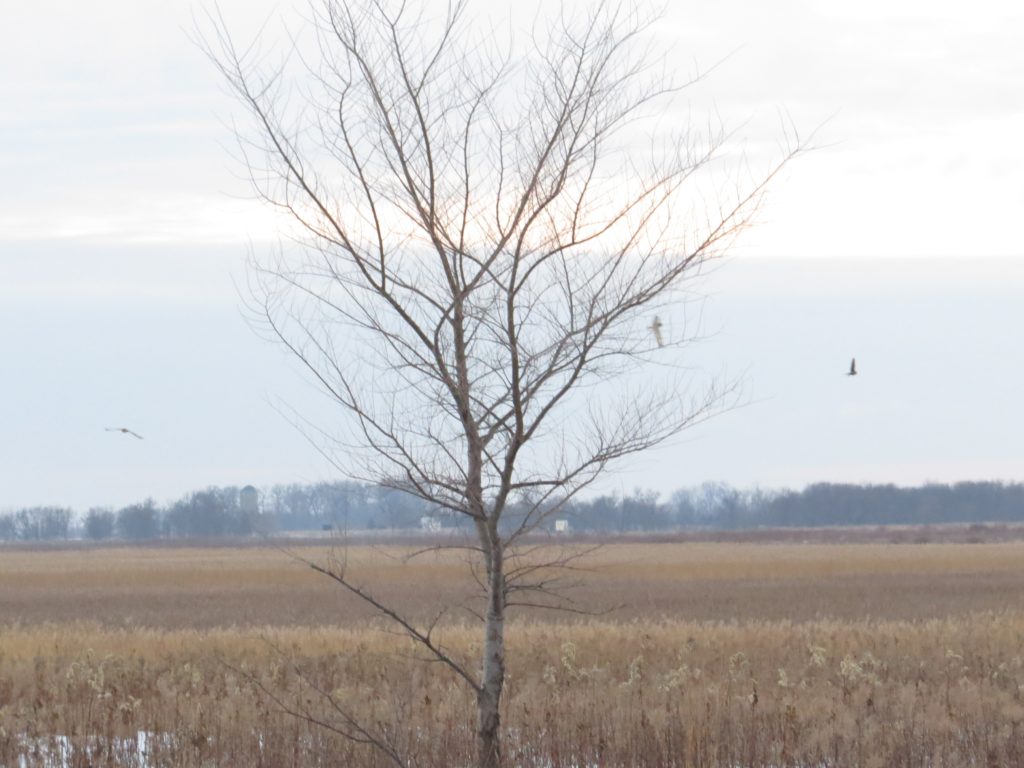 Steve, Riley, and I had phenomenal close fly-bys of these Owls. Though the birds were cooperating for photos, the clouds and dropping sun were not. Even still, I got a few shots to remember the night.
Steve, Riley, and I had phenomenal close fly-bys of these Owls. Though the birds were cooperating for photos, the clouds and dropping sun were not. Even still, I got a few shots to remember the night.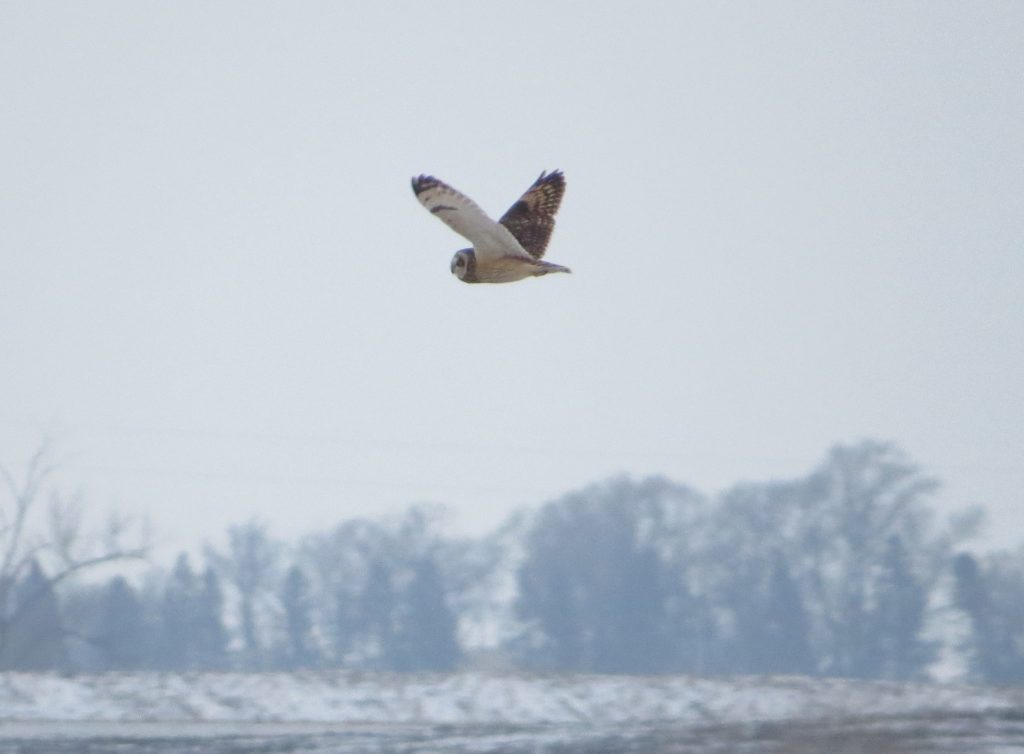
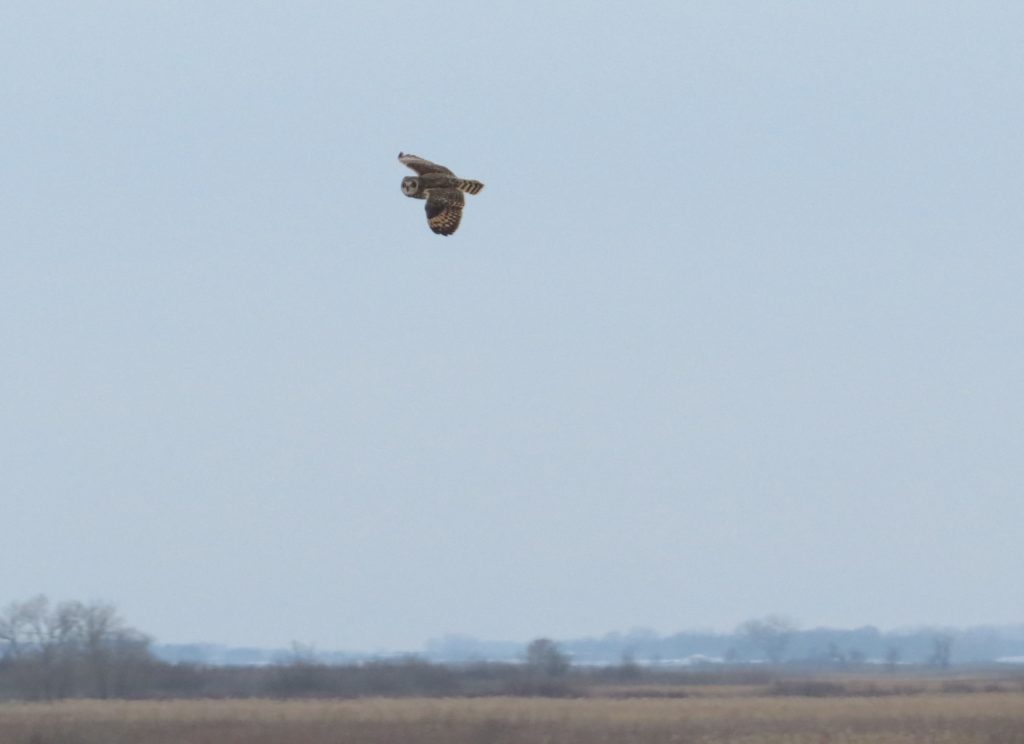
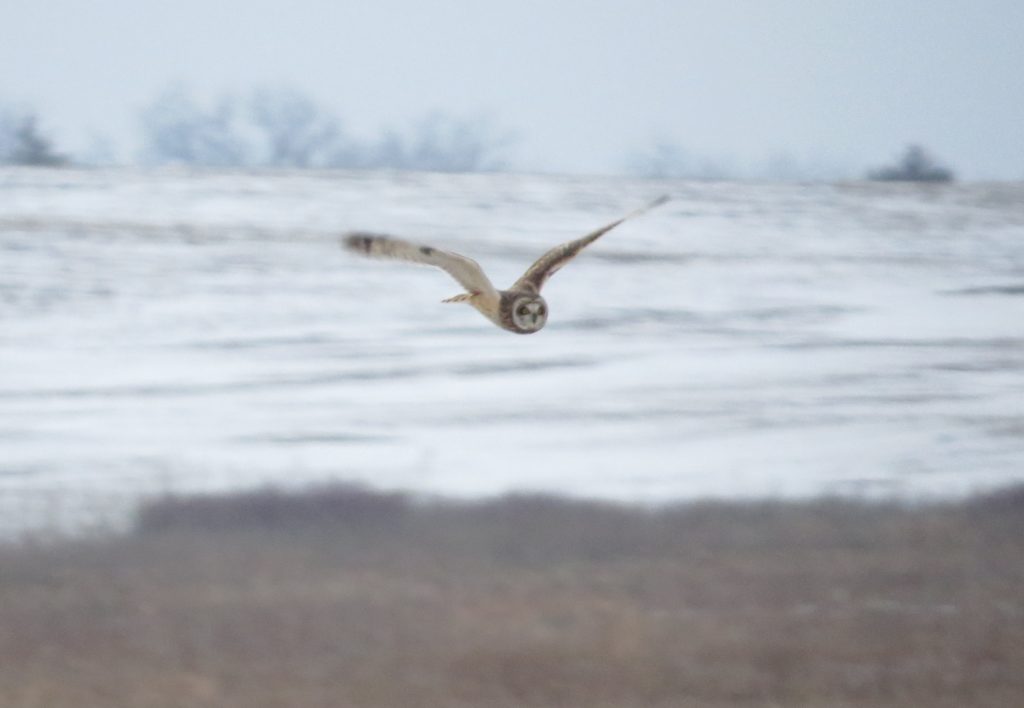 Then with no fear, one of the Owls perched up fairly close. It was exciting to see a perched Short-eared Owl–this likely would never happen again, right?
Then with no fear, one of the Owls perched up fairly close. It was exciting to see a perched Short-eared Owl–this likely would never happen again, right?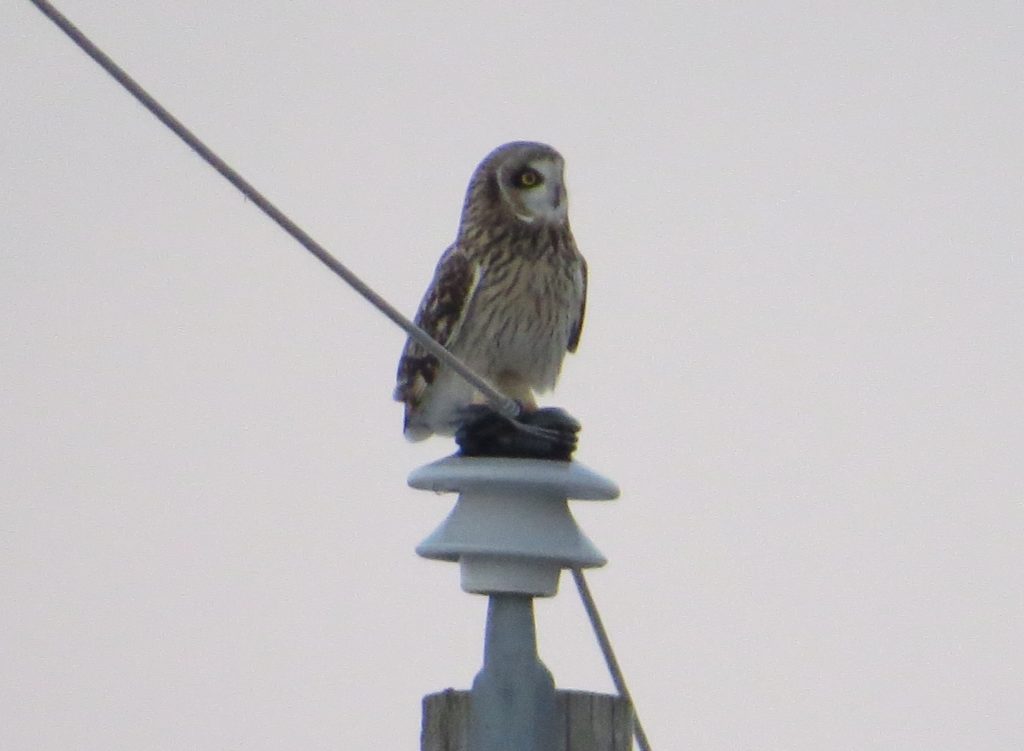
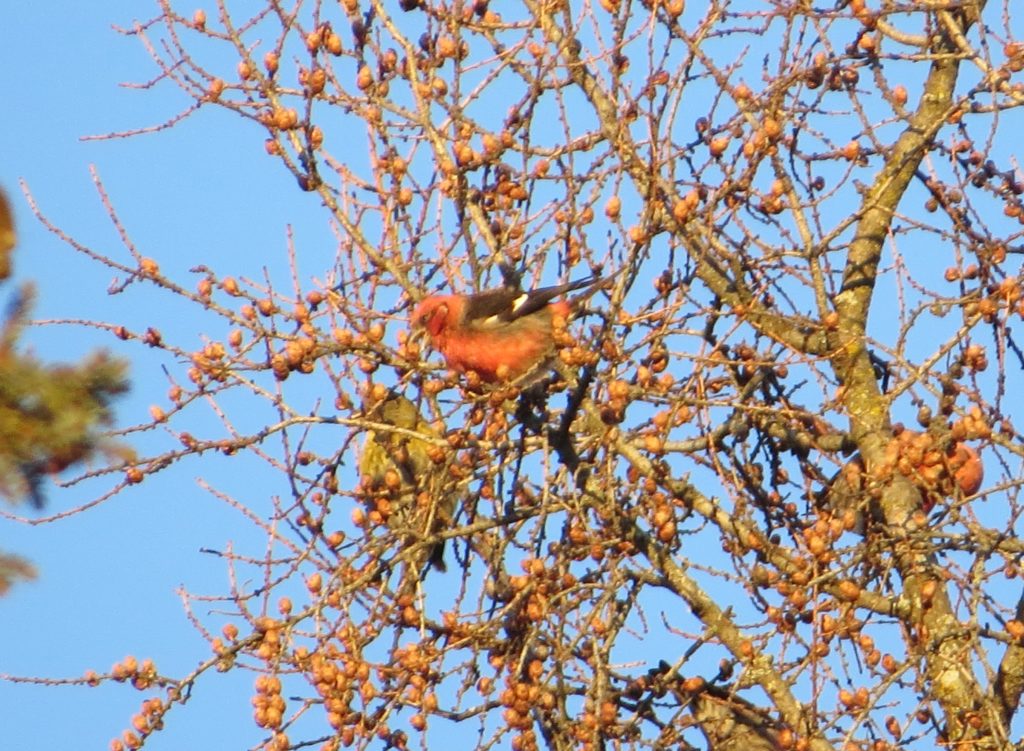 When it was finally time to leave northern MN, I got word that a Great Gray had just been seen in Cook, a mere 15 minutes from the parents’. I didn’t have time to look for it and had to go back to west-central MN. It seems I am always at the wrong end of the state.
When it was finally time to leave northern MN, I got word that a Great Gray had just been seen in Cook, a mere 15 minutes from the parents’. I didn’t have time to look for it and had to go back to west-central MN. It seems I am always at the wrong end of the state.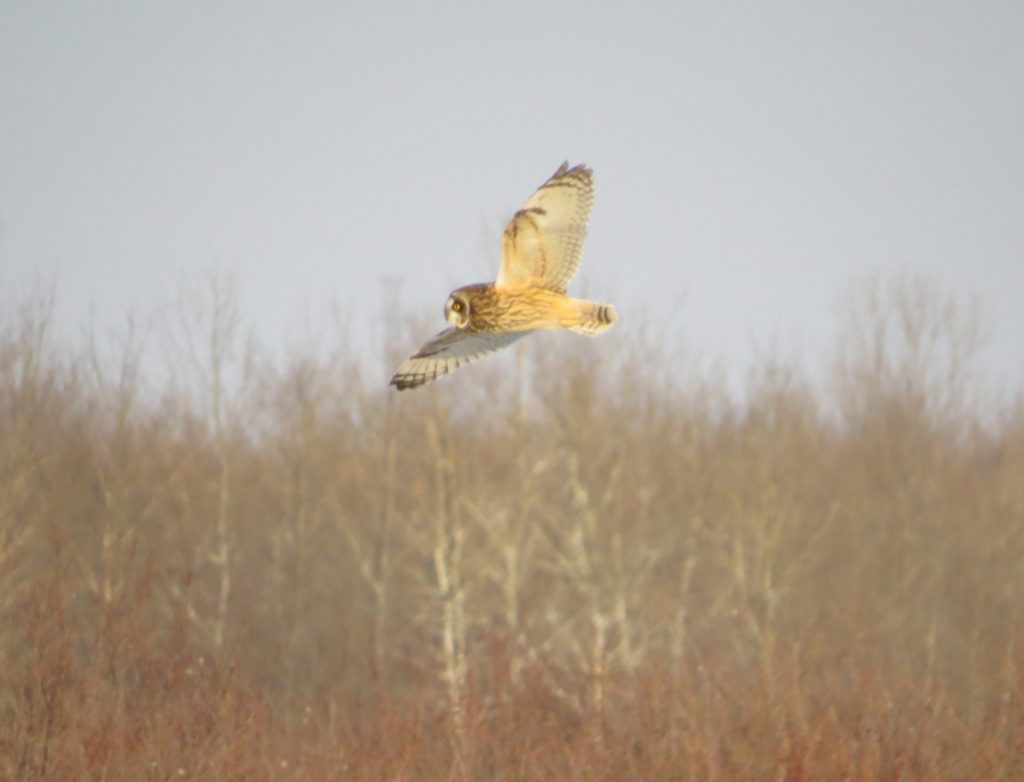
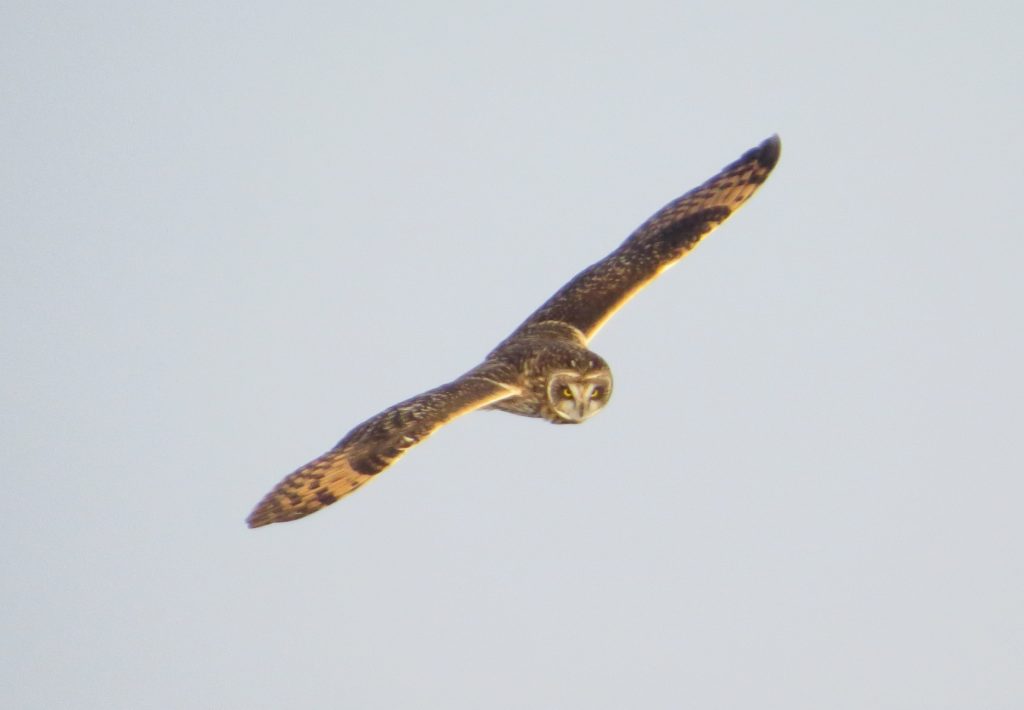
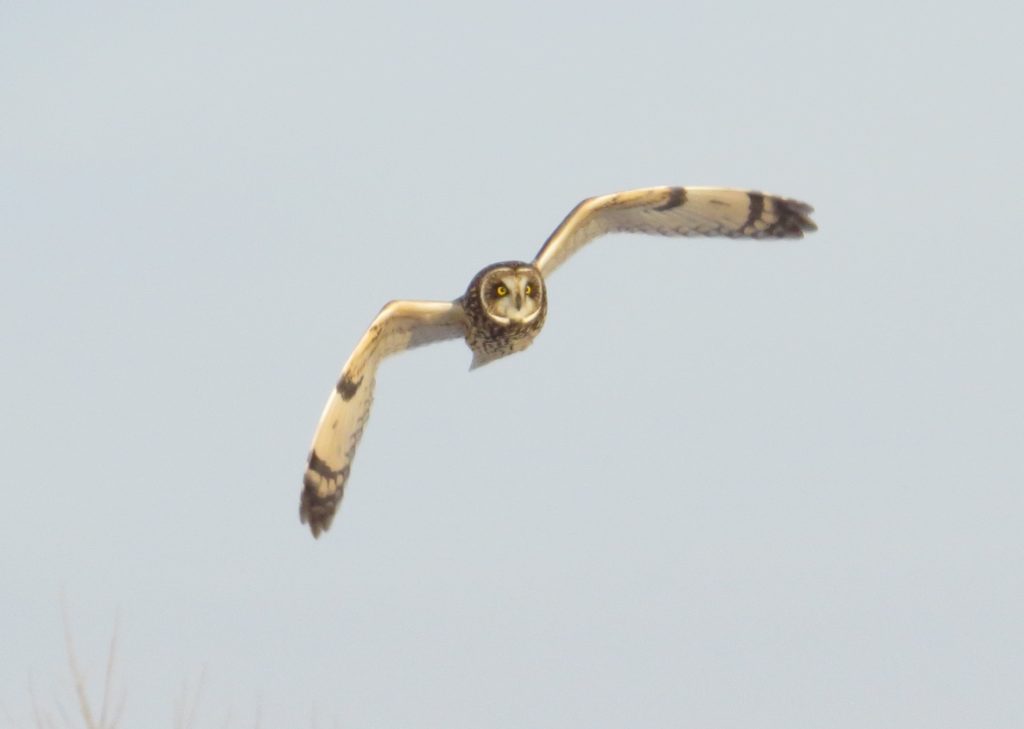
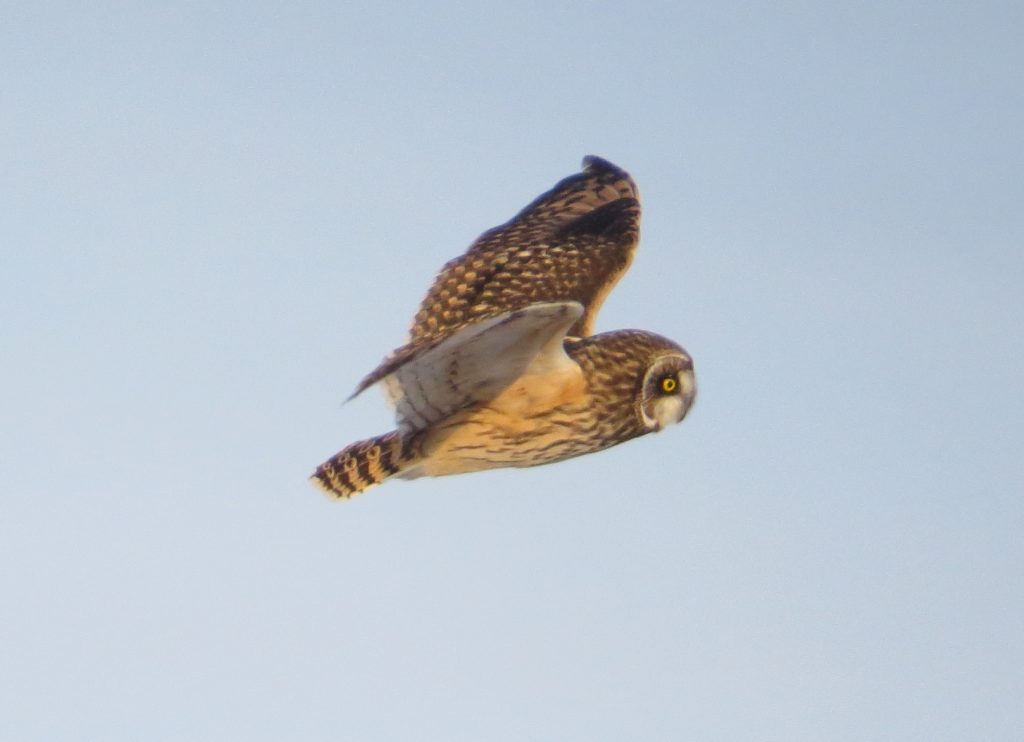 What’s not been mentioned yet is that the other members of my party were promptly notified and arrived on-scene shortly afterward. Just as they arrived, a Rough-legged Hawk appeared and got into an aerial spat with the Owl. The latter was decisively victorious as it drove the former to the ground to the great delight of the Kandi crew. A little while later the Short-eared perched up on a road sign offering everybody a chance to get incredible looks as the Owl at its Vole dinner.
What’s not been mentioned yet is that the other members of my party were promptly notified and arrived on-scene shortly afterward. Just as they arrived, a Rough-legged Hawk appeared and got into an aerial spat with the Owl. The latter was decisively victorious as it drove the former to the ground to the great delight of the Kandi crew. A little while later the Short-eared perched up on a road sign offering everybody a chance to get incredible looks as the Owl at its Vole dinner.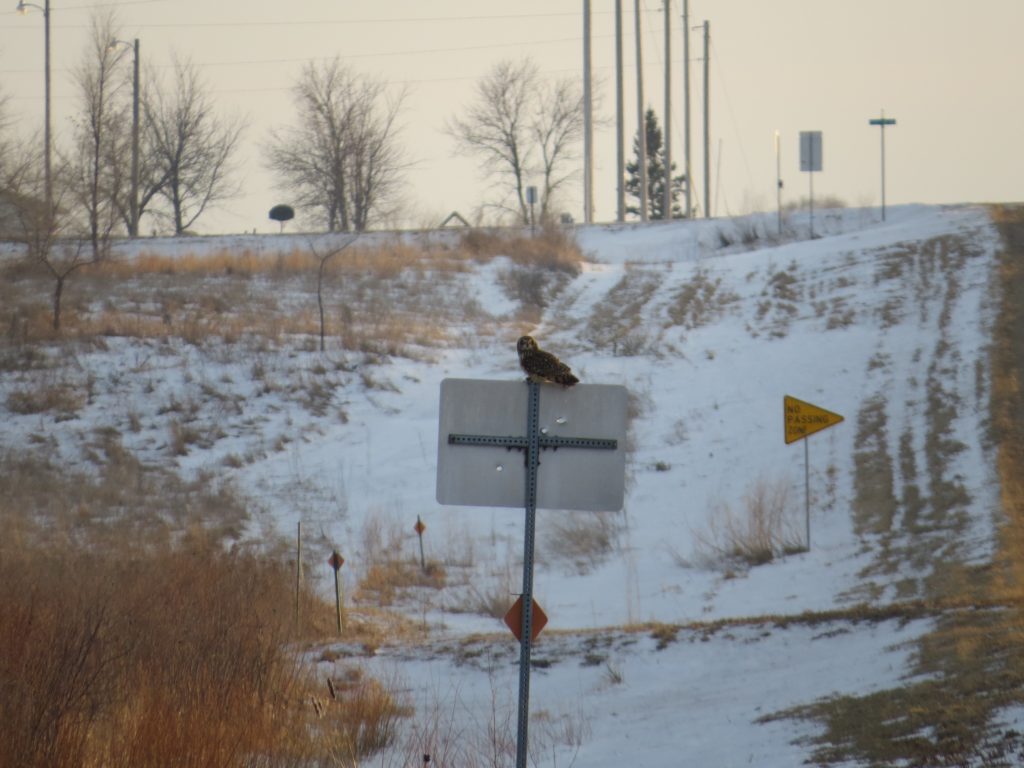
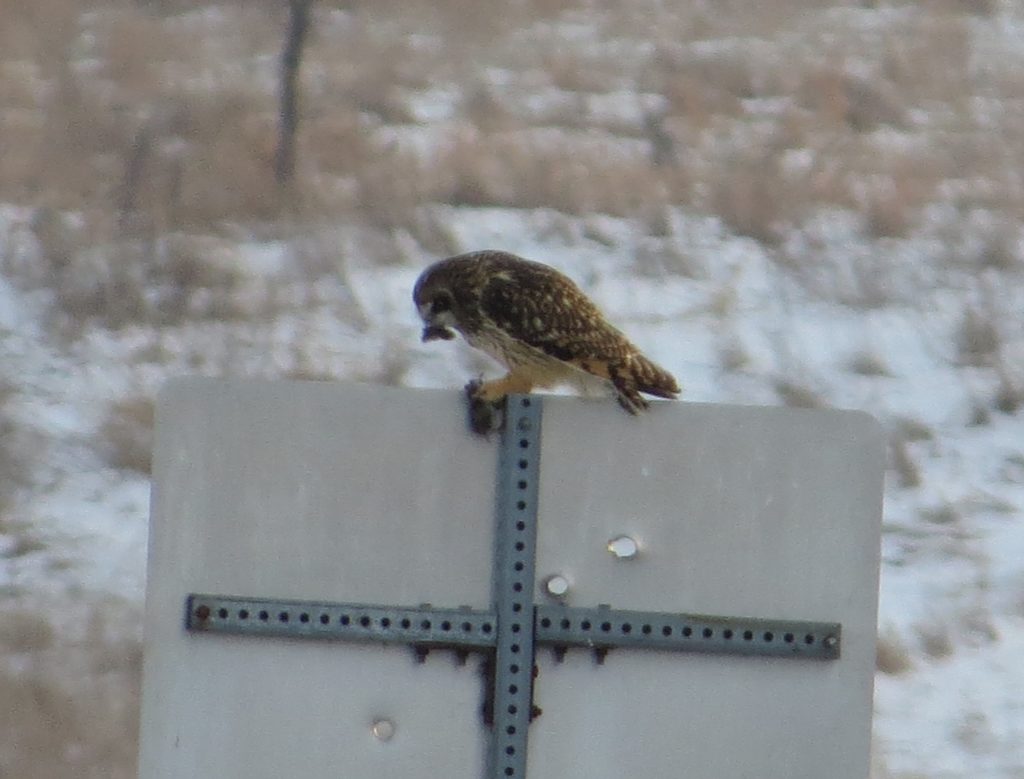 The newer Kandi birders, of which I am one, were elated. The wise old Kandi legends were pleased–their prophecy that such a moment would happen in this very place had come true. They had preached patience all along. Some grasshoppers don’t listen, though, and end up going to North Dakota.
The newer Kandi birders, of which I am one, were elated. The wise old Kandi legends were pleased–their prophecy that such a moment would happen in this very place had come true. They had preached patience all along. Some grasshoppers don’t listen, though, and end up going to North Dakota.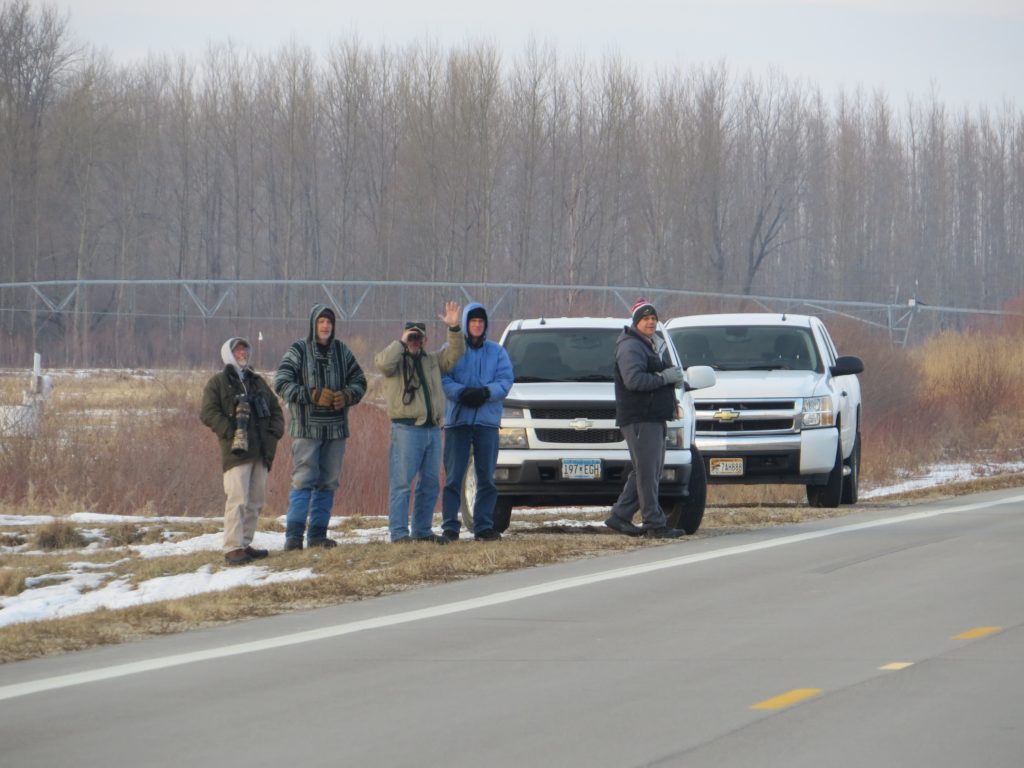
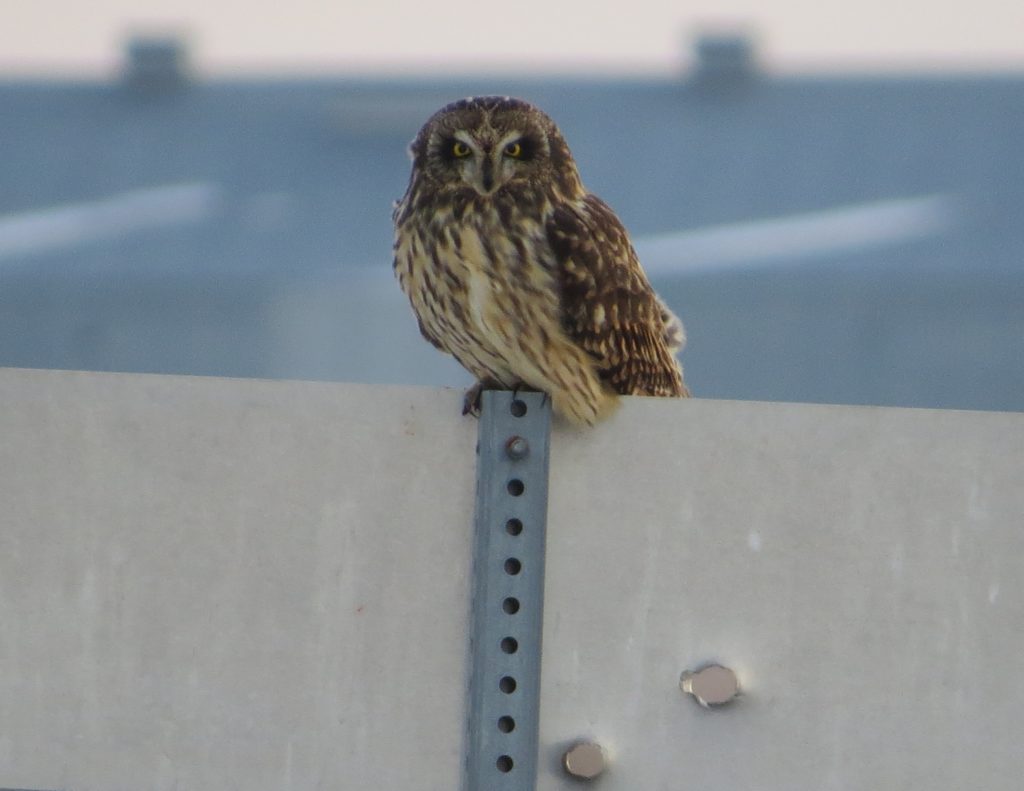 Certainly there was no way for the day to get any better. Or was there?
Certainly there was no way for the day to get any better. Or was there?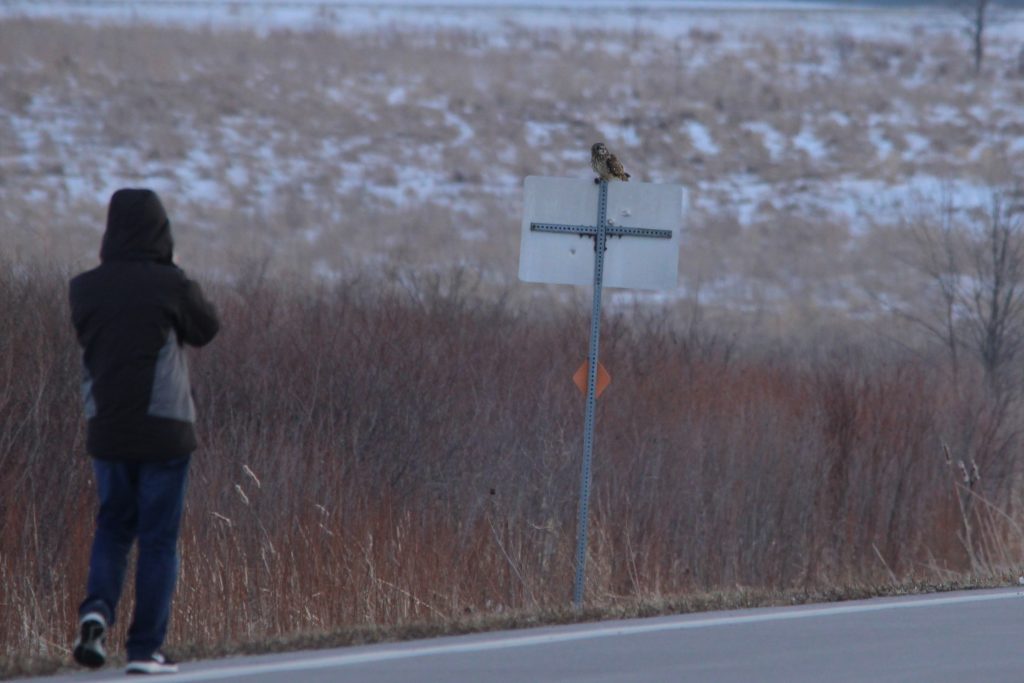
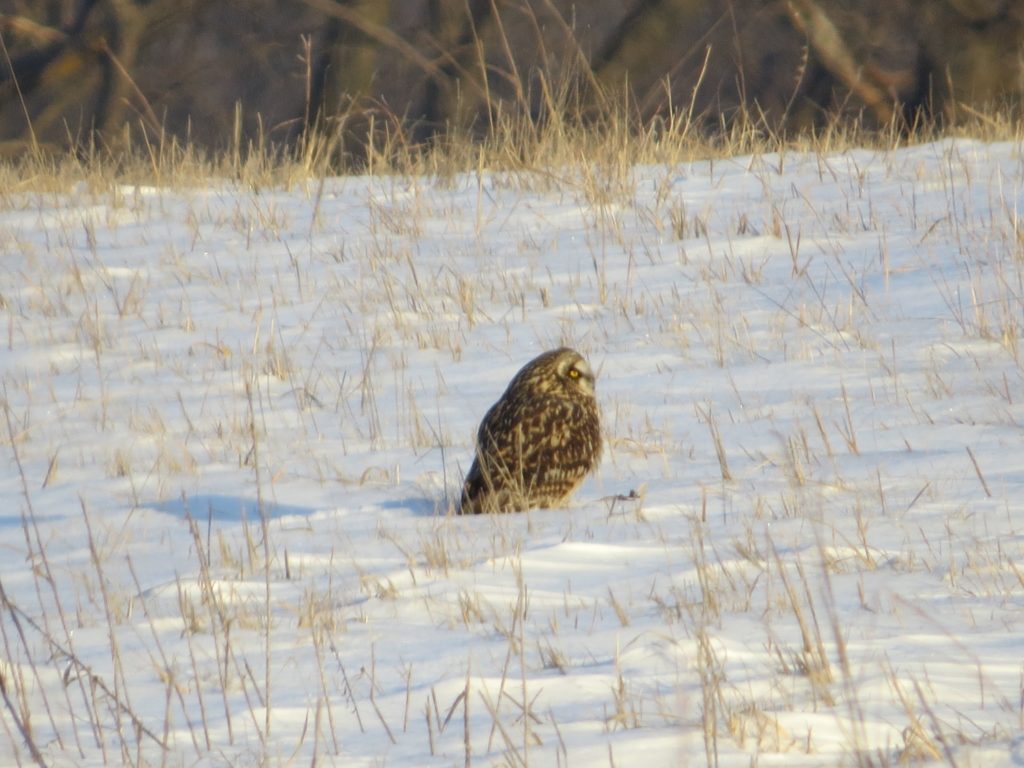 At the rate and manner in which things are progressing, you better believe I’m watching the field by my house when I take my dog out to pee.
At the rate and manner in which things are progressing, you better believe I’m watching the field by my house when I take my dog out to pee.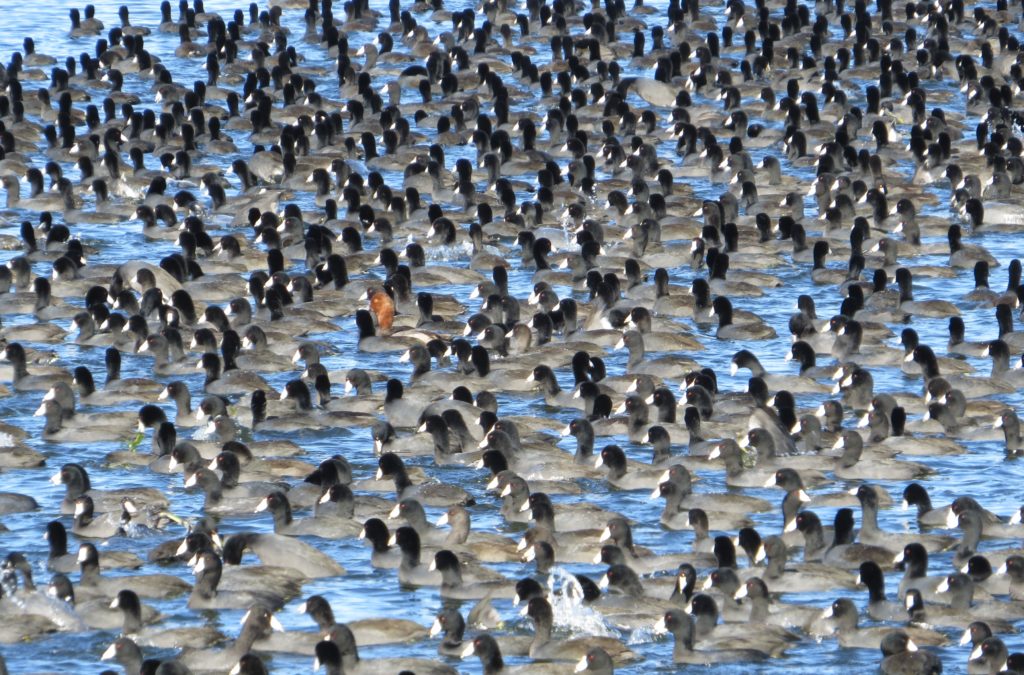 Back to that Monday off, I was doing my lake scanning thing and sinking into a birding funk when I was getting the same dismal results. Except this time it was aggravated by thoughts of those two birds I missed. Anyway, I photographed a duck on Big Kandiyohi Lake that was a long distance off. My blurry photo revealed a shape similar to a Surf Scoter. I passed it on to Randy, and he thought it was good enough to warrant a trip out there himself to take a look. So Randy and I met up at Big Kandi, and we used his high powered scope and found…nothing. Randy asked what we should do next. I suggested that Lake Lillian was close by and worth a look. Not feeling the greatest, Randy declined and sent his scope with me.
Back to that Monday off, I was doing my lake scanning thing and sinking into a birding funk when I was getting the same dismal results. Except this time it was aggravated by thoughts of those two birds I missed. Anyway, I photographed a duck on Big Kandiyohi Lake that was a long distance off. My blurry photo revealed a shape similar to a Surf Scoter. I passed it on to Randy, and he thought it was good enough to warrant a trip out there himself to take a look. So Randy and I met up at Big Kandi, and we used his high powered scope and found…nothing. Randy asked what we should do next. I suggested that Lake Lillian was close by and worth a look. Not feeling the greatest, Randy declined and sent his scope with me.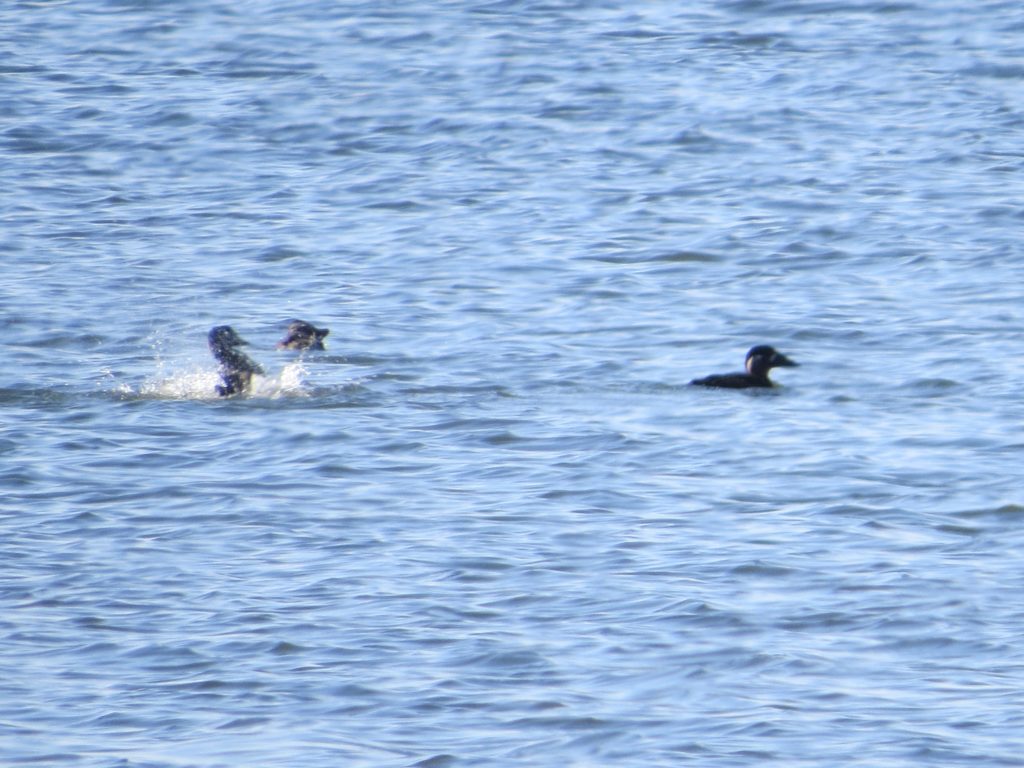
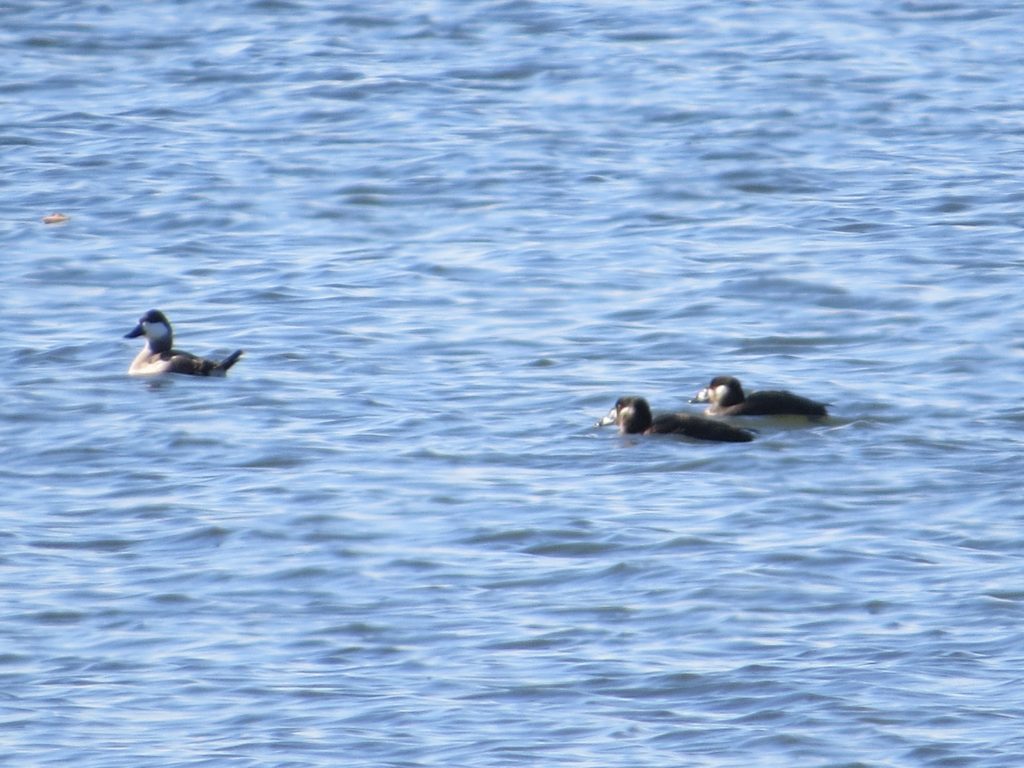 The phone calls to other birders began in earnest as I was making my way to the kids’ school, officially well behind schedule. Eyes were now trained to look for Kandiyohi County Sheriff squad cars instead of birds. Once Randy Frederickson realized I wasn’t lying to him on the phone, the expletives came easy and a coherent plan for him getting down there did not. Remember, I had his scope, and I had to get my kids. There wasn’t time to meet up to exchange the scope. It was a mess, but a good mess. Steve Gardner, the 20-year Army vet, was able to act cool under the pressure and hatched a plan to pick up Randy and get down there quickly with Steve’s scope. Once I got the kids from school and coordinated a drop-off with Melissa, I raced back to Lake Lillian with Randy’s scope. I figured it was a moot point now, thinking the guys had the birds. But they weren’t finding them, and Ron Erpelding was also there looking with his scope. Finally, after nearly three hours of searching, the three of them found the Scoters and added a very long awaited county bird. For Steve it had the bonus of being a life bird.
The phone calls to other birders began in earnest as I was making my way to the kids’ school, officially well behind schedule. Eyes were now trained to look for Kandiyohi County Sheriff squad cars instead of birds. Once Randy Frederickson realized I wasn’t lying to him on the phone, the expletives came easy and a coherent plan for him getting down there did not. Remember, I had his scope, and I had to get my kids. There wasn’t time to meet up to exchange the scope. It was a mess, but a good mess. Steve Gardner, the 20-year Army vet, was able to act cool under the pressure and hatched a plan to pick up Randy and get down there quickly with Steve’s scope. Once I got the kids from school and coordinated a drop-off with Melissa, I raced back to Lake Lillian with Randy’s scope. I figured it was a moot point now, thinking the guys had the birds. But they weren’t finding them, and Ron Erpelding was also there looking with his scope. Finally, after nearly three hours of searching, the three of them found the Scoters and added a very long awaited county bird. For Steve it had the bonus of being a life bird.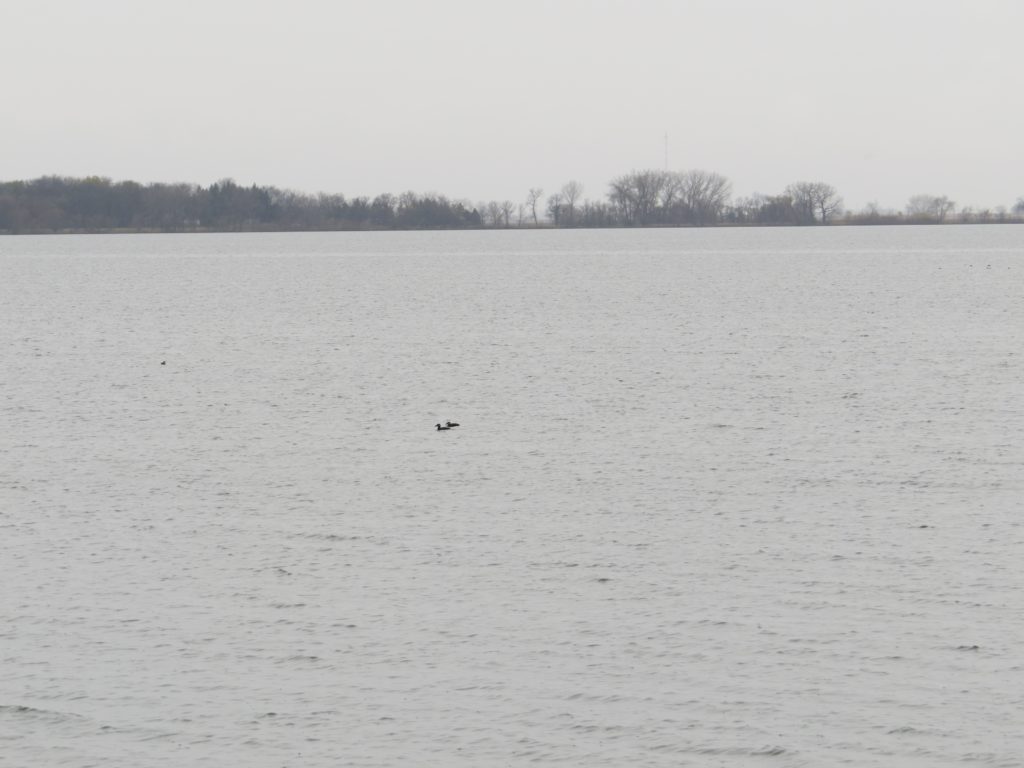
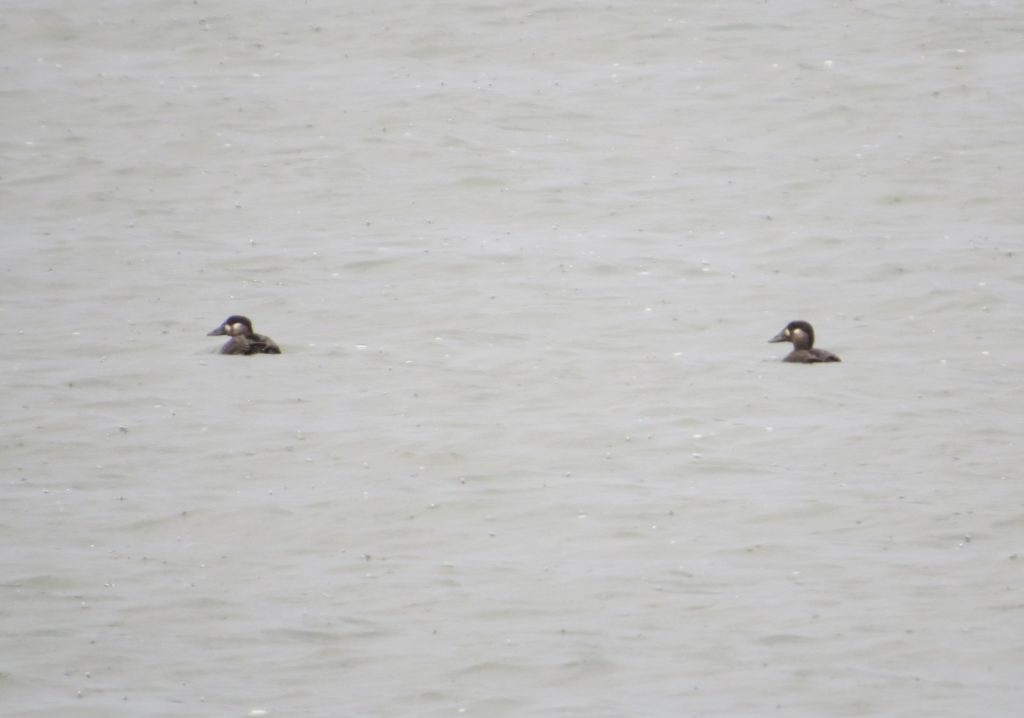
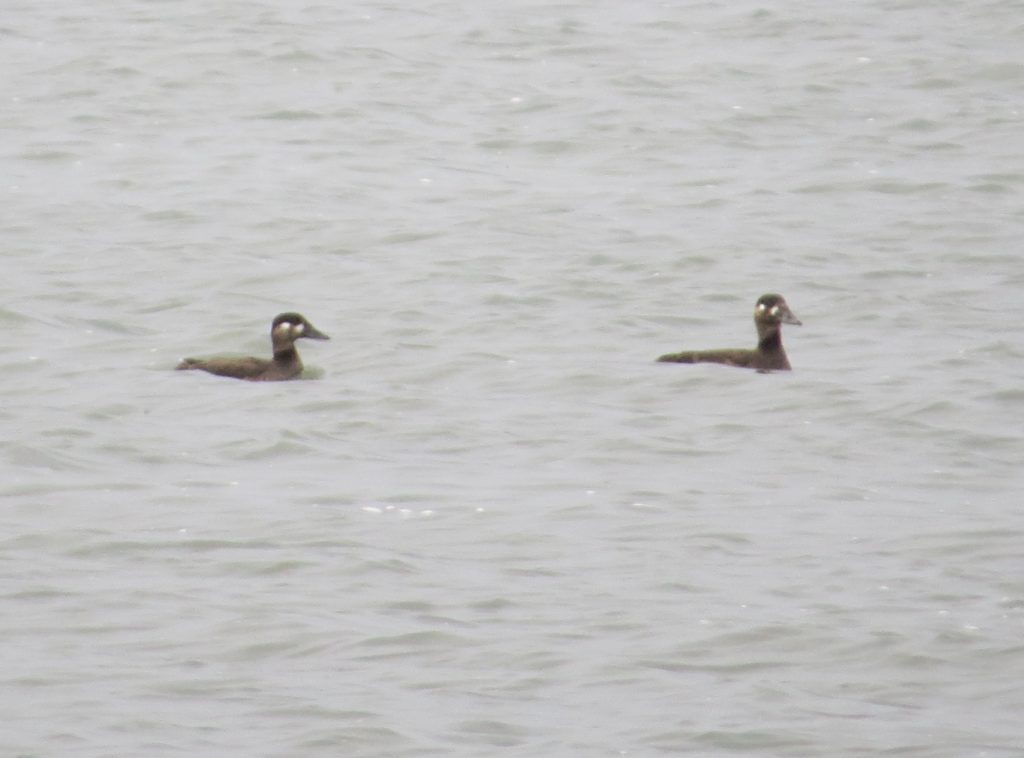
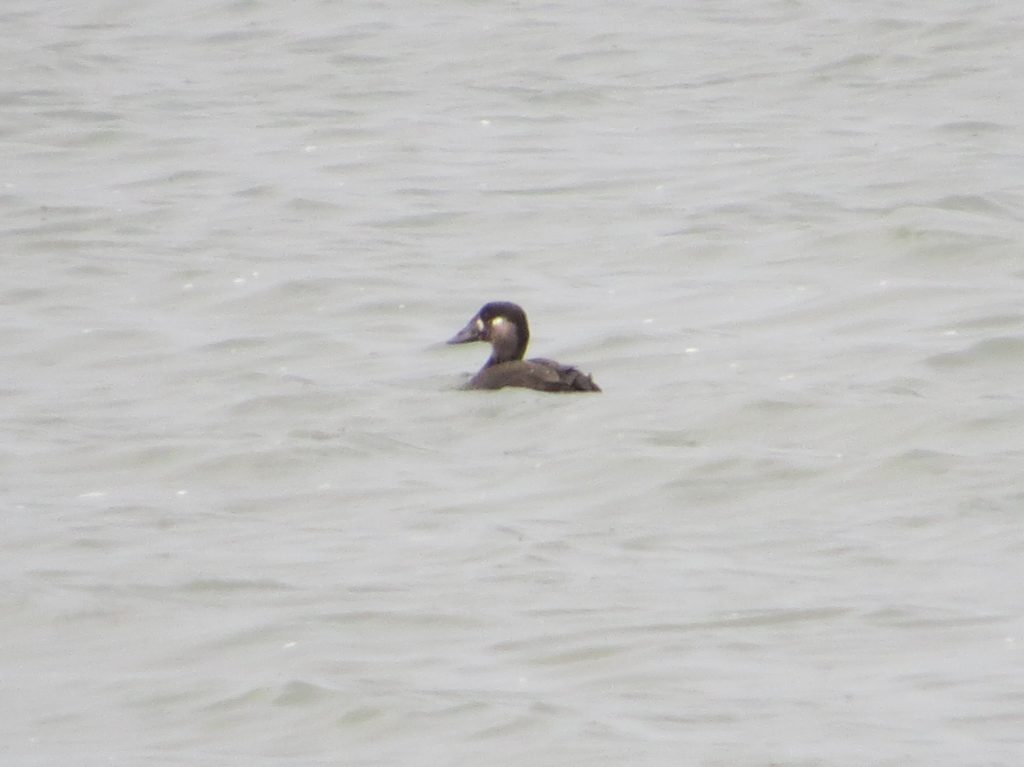 About a month later, Randy found a Surf Scoter on a different part of Lake Lillian. Whether it is one of these two is anybody’s guess, but this bird was much more cooperative hanging out just 50 feet off shore. In fact, I just saw it this morning–same exact spot.
About a month later, Randy found a Surf Scoter on a different part of Lake Lillian. Whether it is one of these two is anybody’s guess, but this bird was much more cooperative hanging out just 50 feet off shore. In fact, I just saw it this morning–same exact spot.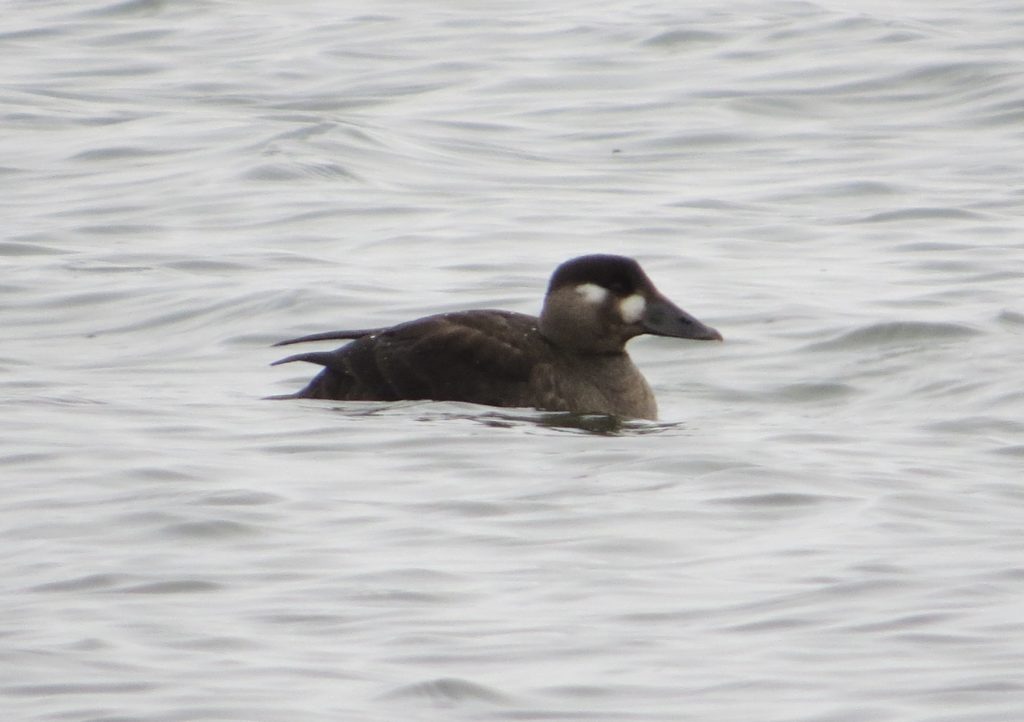
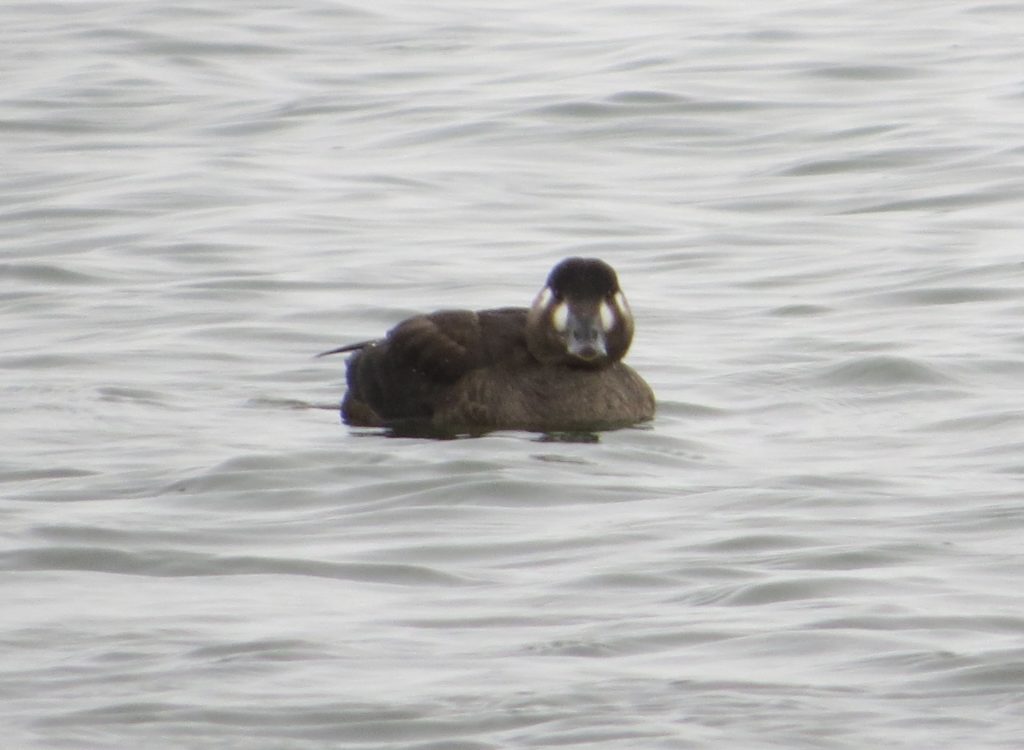 October 24th ended up being a day better than I could have imagined. Rare bird chases for things like the Red Phalarope or Brant are fun, but they are quickly forgotten. It seems the most memorable chases are the most heart-wrenching misses. While I have enjoyed and loathed many chases, nothing beats finding your own rarity. And finding a rarity when you’ve been searching for it all along beats one that is found by serendipity. But enough pontificating. Kandiyohi County has never had a Black Scoter–back to work I go.
October 24th ended up being a day better than I could have imagined. Rare bird chases for things like the Red Phalarope or Brant are fun, but they are quickly forgotten. It seems the most memorable chases are the most heart-wrenching misses. While I have enjoyed and loathed many chases, nothing beats finding your own rarity. And finding a rarity when you’ve been searching for it all along beats one that is found by serendipity. But enough pontificating. Kandiyohi County has never had a Black Scoter–back to work I go.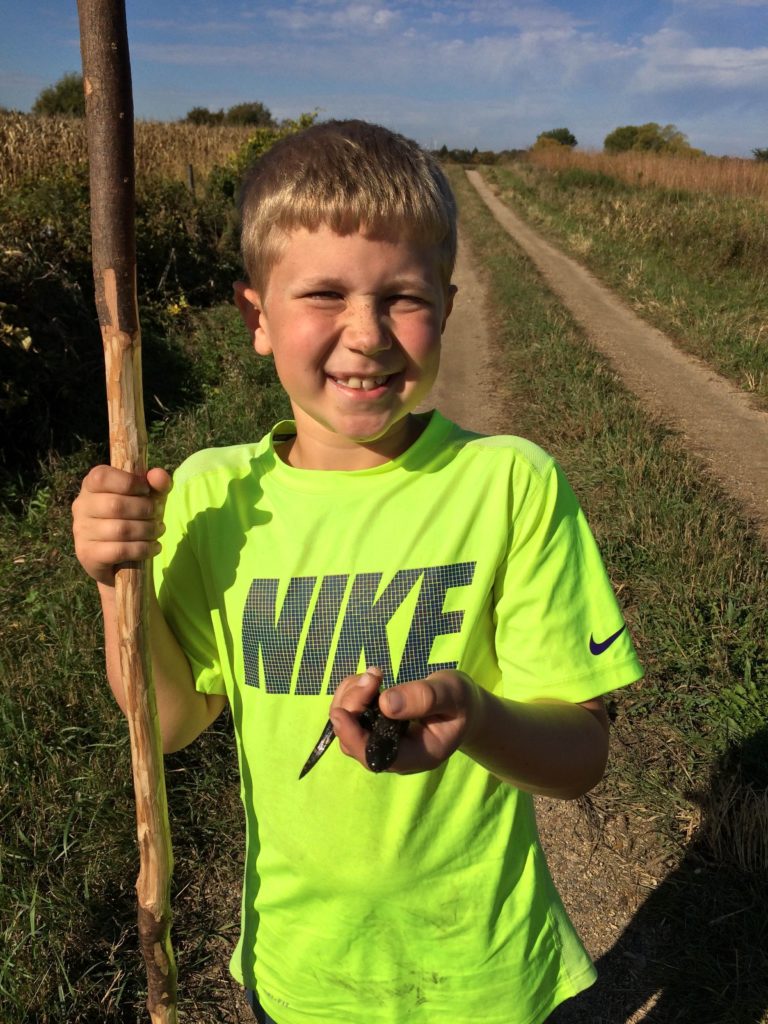 Evan was quite pleased to get his lifer Tiger Salamander. The Le Conte’s was just not a big deal to him. In fact, when I noticed a promising-looking patch of prairie that butted up to a cattail slough, he declined to walk it with me, opting instead to stand in one spot observing, whittling, etc. It was on this solo walk-about where the magical moment finally happened: I flushed a Sparrow from the prairie hillside toward the cattail slough in front of me. I advanced, somewhat hopeful, and stopped about 15 feet short of where it landed. I gave a little pish, and a yellowish bird popped up to investigate. I knew what it was before I even pulled up the binoculars. Then, with the sun at my back, I looked through the binoculars and finally saw this striking lifer. What a thrill–and to experience it so close to home made it even better. Not only did I finally get this lifer, but a little more pishing allowed me to get some photographs before it disappeared into the cattails forever.
Evan was quite pleased to get his lifer Tiger Salamander. The Le Conte’s was just not a big deal to him. In fact, when I noticed a promising-looking patch of prairie that butted up to a cattail slough, he declined to walk it with me, opting instead to stand in one spot observing, whittling, etc. It was on this solo walk-about where the magical moment finally happened: I flushed a Sparrow from the prairie hillside toward the cattail slough in front of me. I advanced, somewhat hopeful, and stopped about 15 feet short of where it landed. I gave a little pish, and a yellowish bird popped up to investigate. I knew what it was before I even pulled up the binoculars. Then, with the sun at my back, I looked through the binoculars and finally saw this striking lifer. What a thrill–and to experience it so close to home made it even better. Not only did I finally get this lifer, but a little more pishing allowed me to get some photographs before it disappeared into the cattails forever.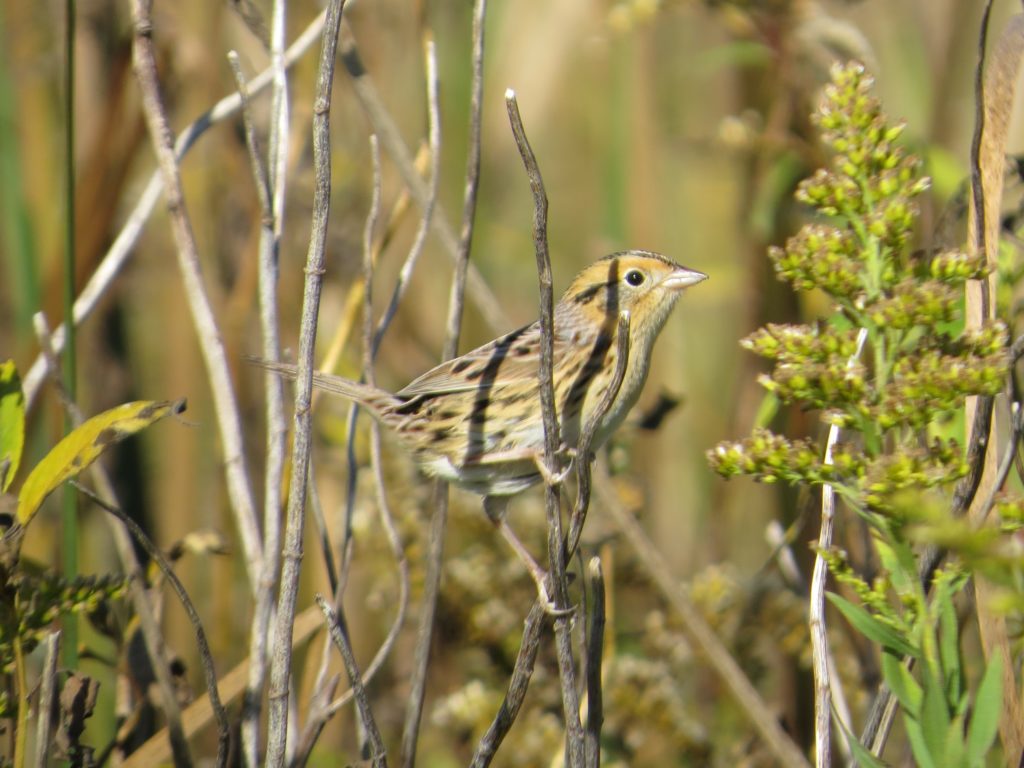
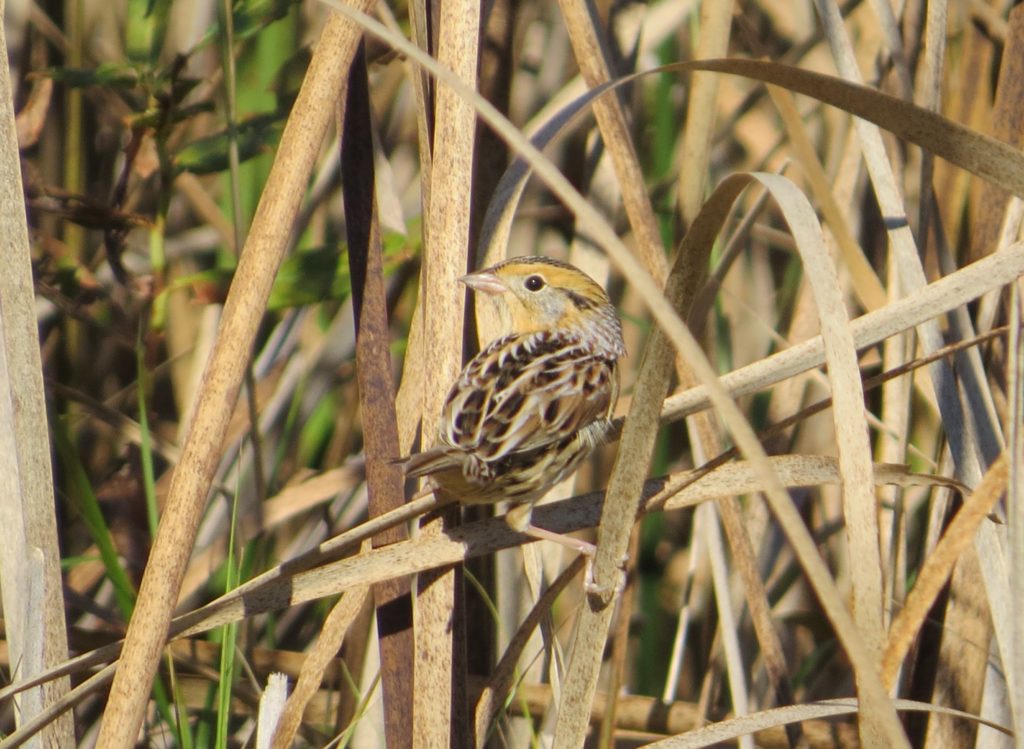 And with that I met back up with Evan and went home. It was perfect. Finding the last regular lifer I can possibly get in the county on such a beautiful day was bittersweet. I don’t know how many more lifers, if any, I will get in the county, but it doesn’t matter. This was a day to remember.
And with that I met back up with Evan and went home. It was perfect. Finding the last regular lifer I can possibly get in the county on such a beautiful day was bittersweet. I don’t know how many more lifers, if any, I will get in the county, but it doesn’t matter. This was a day to remember.